Contents
Valley of Fire State Park | Introduction
Valley of Fire State Park, is the oldest and most famous state park in Nevada, USA, having been open since 1935. The geological structure of Valley of Fire mainly consists of desert strata that are about 150 million years old. Over time, these layers have been eroded and weathered, creating a fantasy landscape with a rich variety of colors and shapes. When sunlight strikes these rocks, they shimmer like flames, which is why it is called "Valley of Fire."
The park entrance fee is $10 per vehicle for residents of the state and $15 for out-of-state visitors. Due to its proximity to Las Vegas, Valley of Fire is also the most visited state park in Nevada and is often included as part of the classic American road trip route, the Grand Circle. Generally, the best time to visit is during the spring and autumn, when the temperatures are more pleasant and the days are longer. However, visitors should be prepared for the relatively high temperatures in Valley of Fire; even during our visit in October, it reached 95 degrees Fahrenheit.
I put together a simple checklist for beginners.
Valley of Fire State Park | Transportation
There is no public transportation in Valley of Fire Park. The most economical way to get around the park is to rent a car from Las Vegas, which is only an hour's drive, and is convenient for arranging other suburban attractions. If you don't want to drive, the best way to get around is to find a day trip from Las Vegas.
Valley of Fire Day Trip from Las Vegas
- Hotel search: Agoda
- Activities & tickets: KKday / Klook / TripAdvisor
- Travel credit cards (US only): My card picks + beginner tips
Valley of Fire State Park | Accommodations
Hotel
There are no hotels within Valley of Fire State Park. For those looking for hotel accommodations, the most convenient option is the city with many hotels, Las Vegas.
Looking for a stay in Las Vegas?
Camping
- Comfort: ⭐️⭐️⭐️⭐️⭐️
- Space: ⭐️⭐️⭐️⭐️
- Facility Cleanliness: ⭐️⭐️⭐️⭐️
- Location Convenience: ⭐️⭐️⭐️⭐️
- Overall Rating: ⭐️⭐️⭐️⭐️⭐️
Valley of Fire has always been a popular camping destination in Nevada. For those who want to leisurely explore Valley of Fire, camping inside the park is undoubtedly the best option. In the past, all state parks in Nevada operated on a first-come, first-served basis. However, starting from 2023, Nevada has implemented a reservation system. Now, reservations can be made through the state park's website.
In Valley of Fire, there are two campgrounds with a total of 72 sites. Although reservations have recently been implemented, we found that in October, on a non-holiday Wednesday, the campgrounds were still fully booked, indicating their popularity. I thought the campground environment was excellent. Aside from clean communal facilities, the sites were spacious and equipped with shade structures to combat the hot weather.
Camping in the desert requires some precautions. In addition to nocturnal wildlife like raccoons, there may also be bothersome bees. However, there's no need to worry too much as these bees are primarily looking for a water source and tend to approach human campsites. If you do encounter them, you can place a bowl of water a bit further away, and they will be attracted to it.
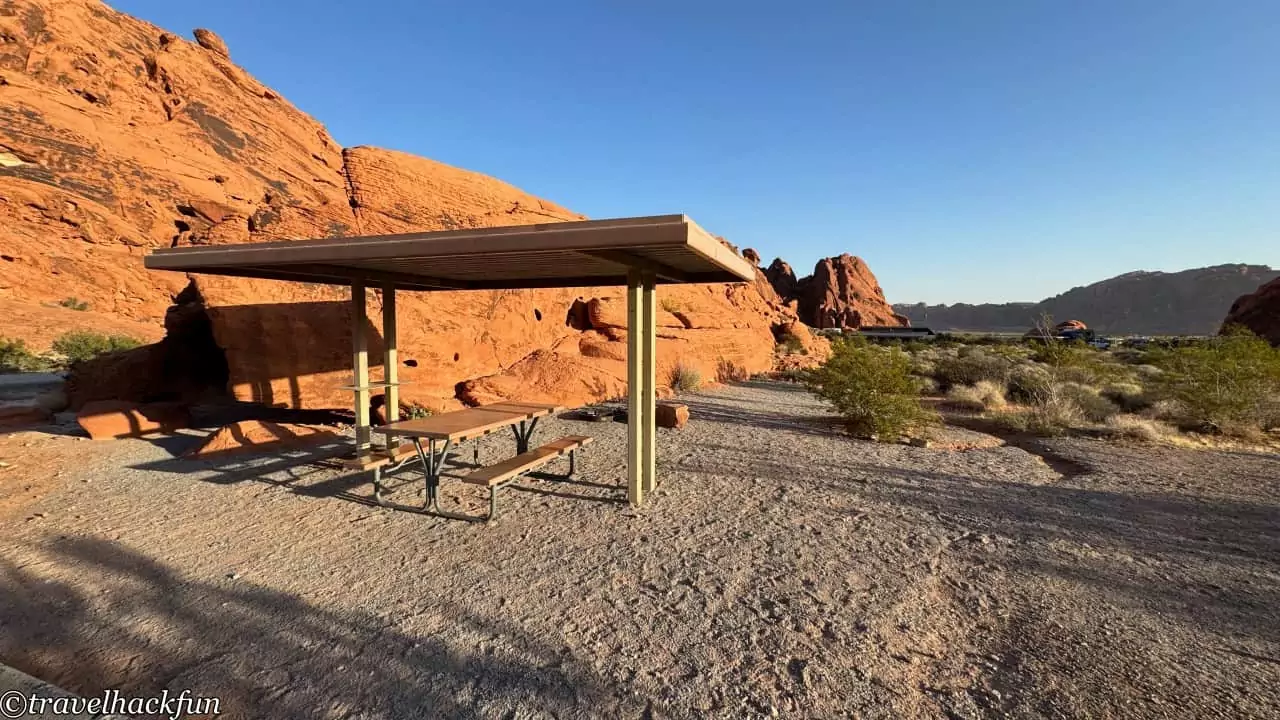
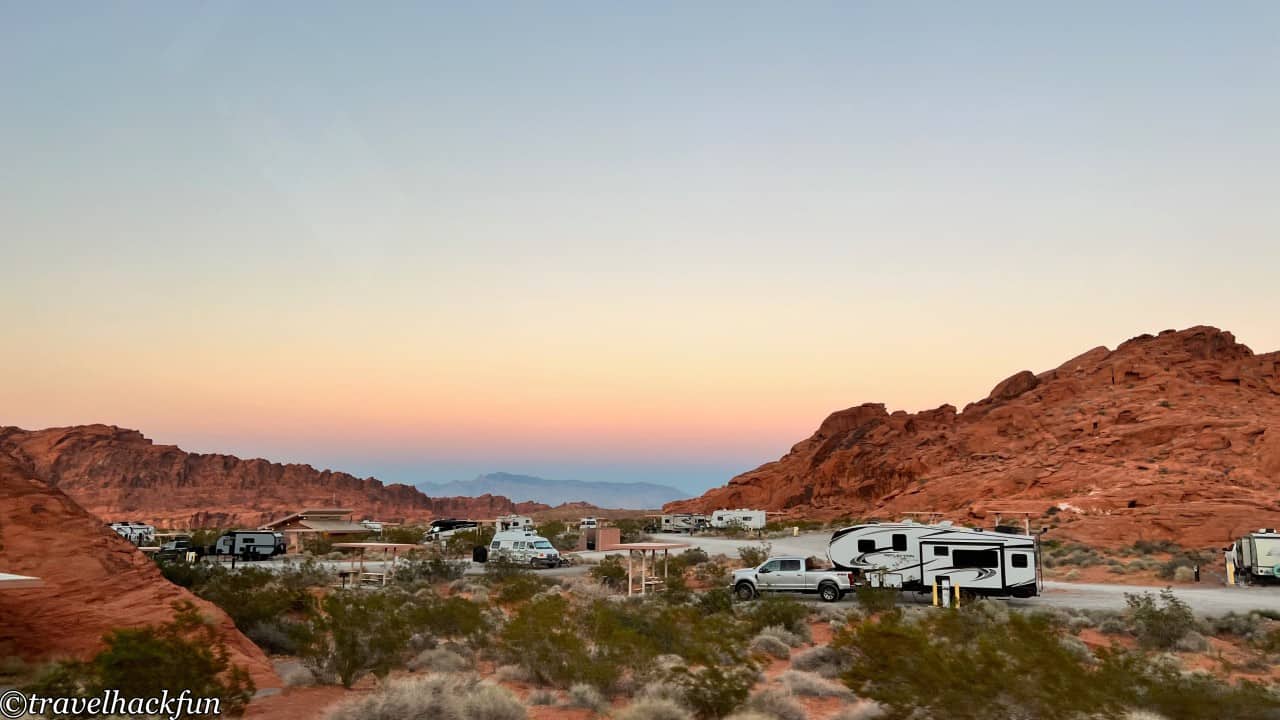
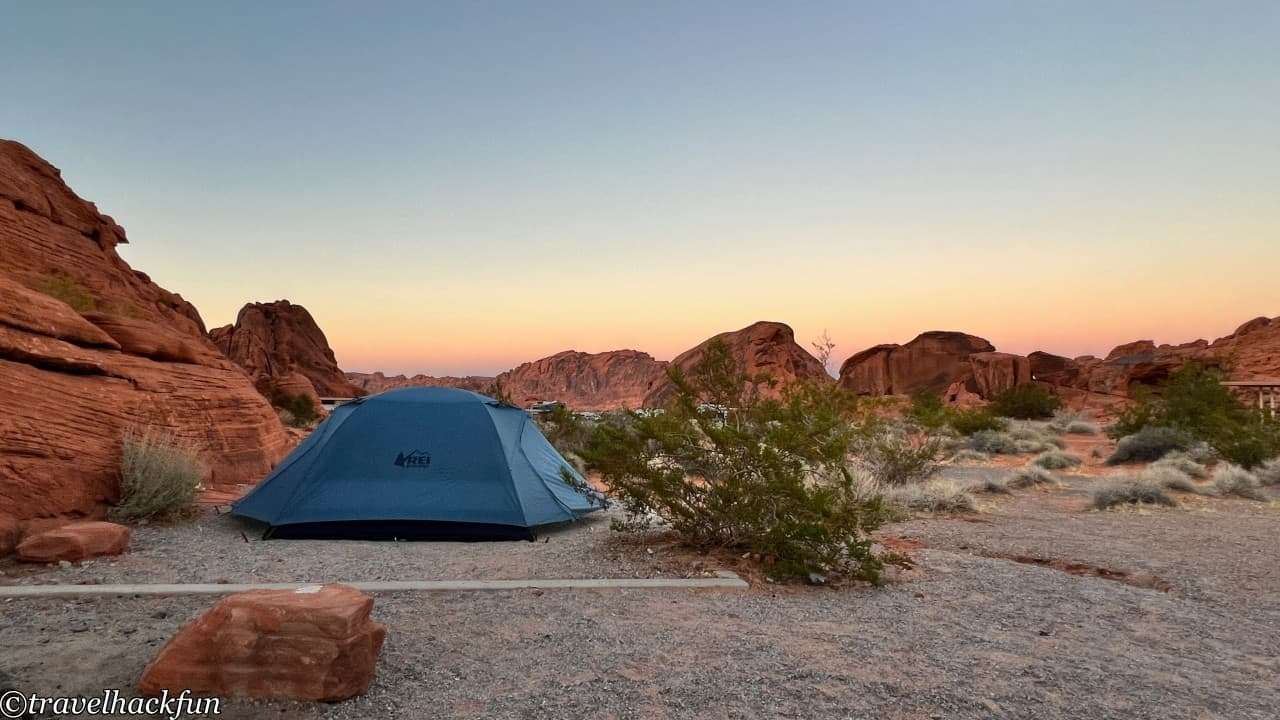
Valley of Fire State Park | How to organize a day trip?
If we take a look at the map of Valley of Fire, we can see that there are mainly two major roads in the area. The east-west Valley of Fire Highway is the route we use to enter and exit the park. Additionally, there's Mouse’s Tank Road (officially referred to as White Domes Road on the map) in the center of the park. The most significant attraction of Valley of Fire is the experience of driving through the scenic Mouse’s Tank Road and enjoying the fantastical landscapes. The main hiking trails are also located along Mouse’s Tank Road. The park's visitor center is situated on the right side shortly after turning onto Mouse’s Tank Road.

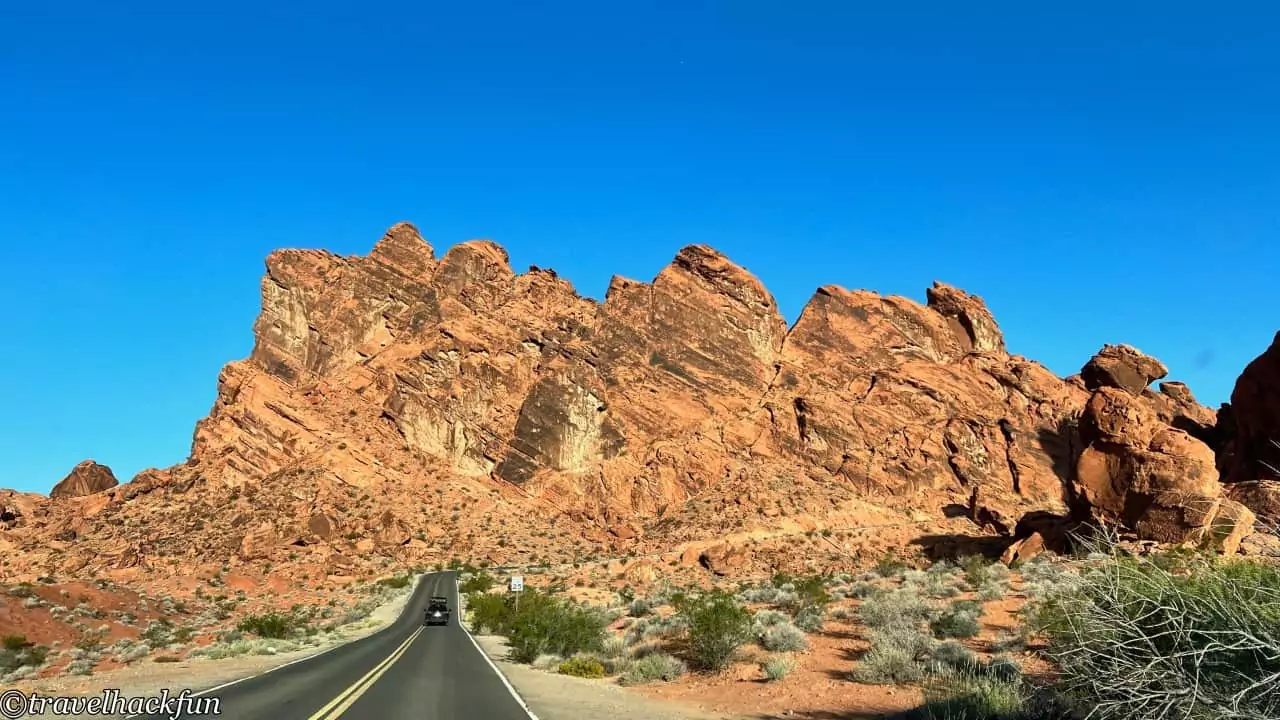
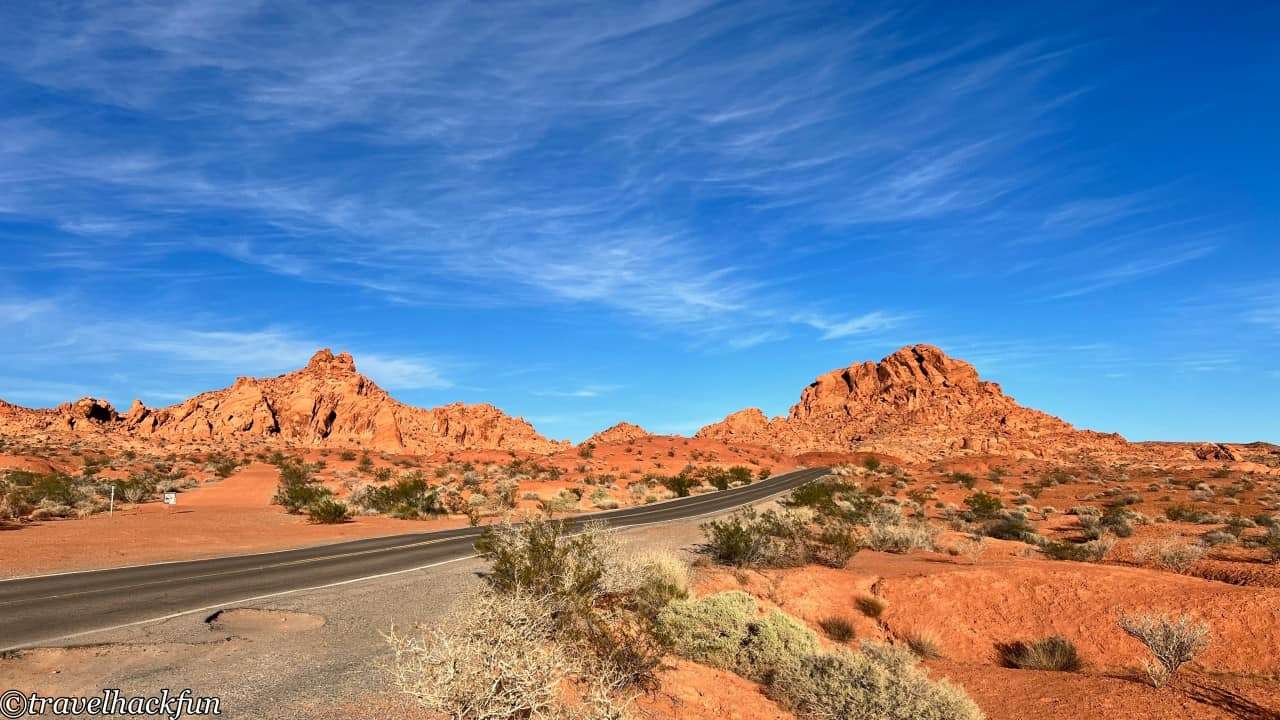
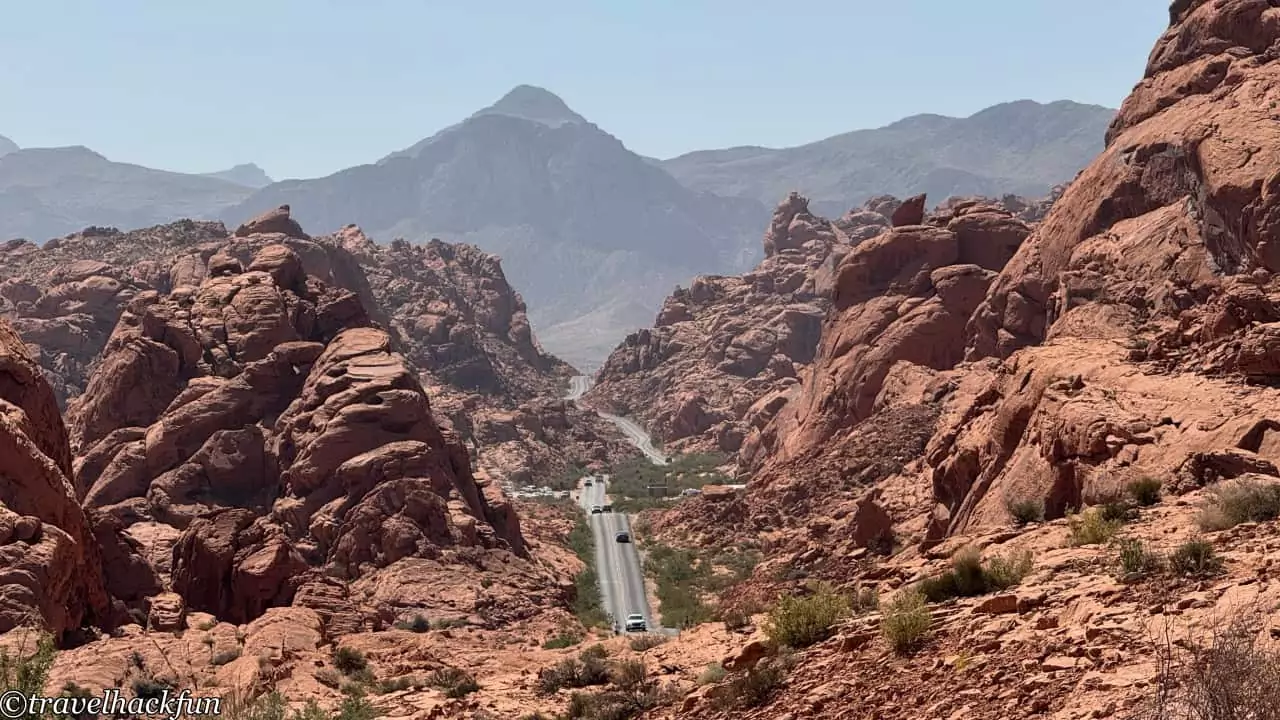
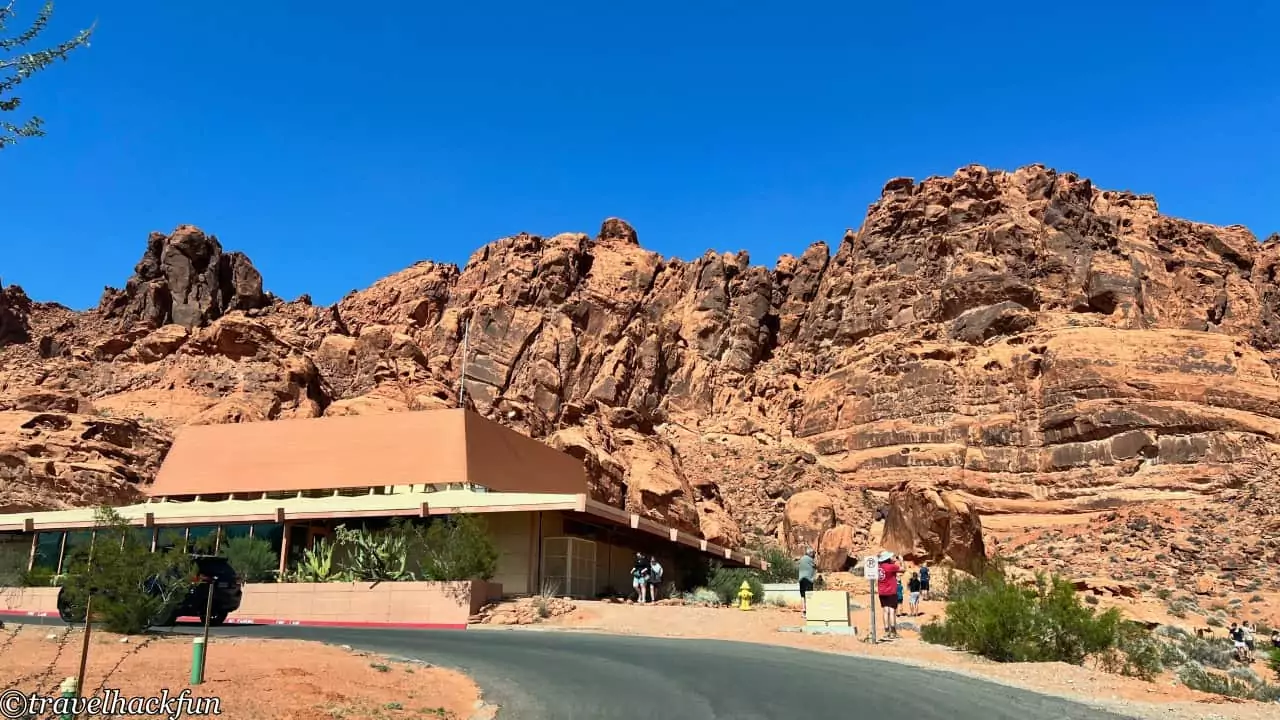

The shortest playing time is about half a day, if you only have half a day, you can enter from the west entrance, stop at the obligatory Beehives on the Valley of Fire Highway, and then drive all the way to Mouse's Tank Road, enjoy the scenery all the way, and if you have enough energy, you can take the obligatory Fire Wave Trail first, and then go to the White Domes Trail. If you are physically able, you should finish the Fire Wave Trail first, then go to White Domes Trail, and if you have enough time or can't climb the mountain, you can drive to Fire Canyon Road, and if you are leaving the same way, you can go to see Atlatl Rock before you leave.
A more recommended option is to allocate at least a full day for your visit. In addition to the activities mentioned earlier, you can extend your hike on the Fire Wave Trail to include the 7 Wonders Trail loop, which allows you to explore Pink Canyon. You can then use the remaining time to visit Rainbow Vista Trail and Elephant Rock.
Valley of Fire State Park | Trails
Must See | Fire Wave Trail
The Fire Wave Trail is the most popular and a must-do trail in the entire Valley of Fire. It's important to note that during the summer months from June to September, when the weather is extremely hot, this trail is closed for safety reasons. Even when it's open, there isn't much shade along the trail, so it's advisable to visit in the early morning for a cooler experience.
Surprisingly, there is no signage for this trail on the official map, but fortunately there are signs inside the park, so it's very easy to find, and you'll never miss it along Mouse's Tank Road. There are parking lots on both sides of the road. If you are coming from the south, the entrance to the trail is on the left. If you are coming from the south, the entrance to the hiking trail is on the left side. When we arrived at 8am on a non-holiday morning, there were already more than 10 cars parked in the parking lot.

If you just take the Fire Wave Trail, the round trip length is 1.5 miles, and it takes about 45 minutes - 1 hour. Although the overall route is mostly flat, there is a downhill section at the beginning, and there are a lot of uneven rocks and sand along the way, so I don't think it's as easy as I thought it would be, so I think it's better to bring along trekking poles.
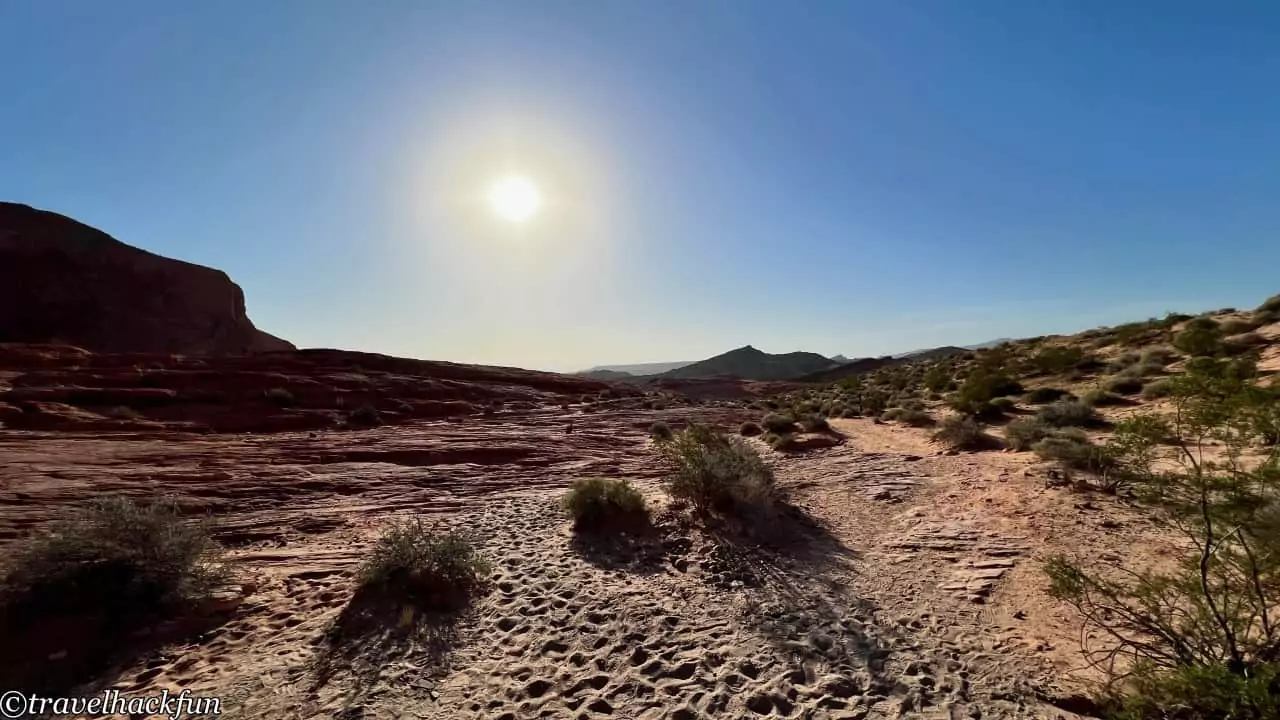


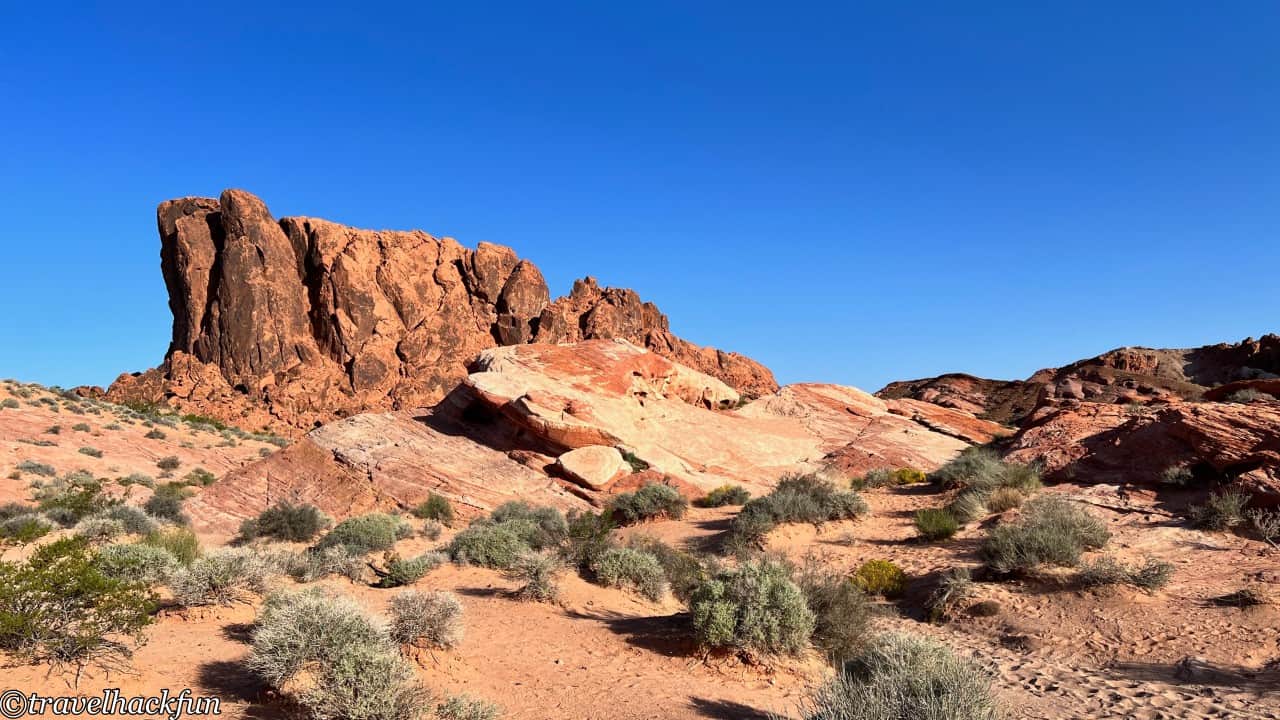
Soon we realized that we were already walking on the rocky outcrops, if you don't want to waste too much energy, remember to follow the direction of the sign. Many tourists walk on the large rocky outcrops and accidentally walk far away.
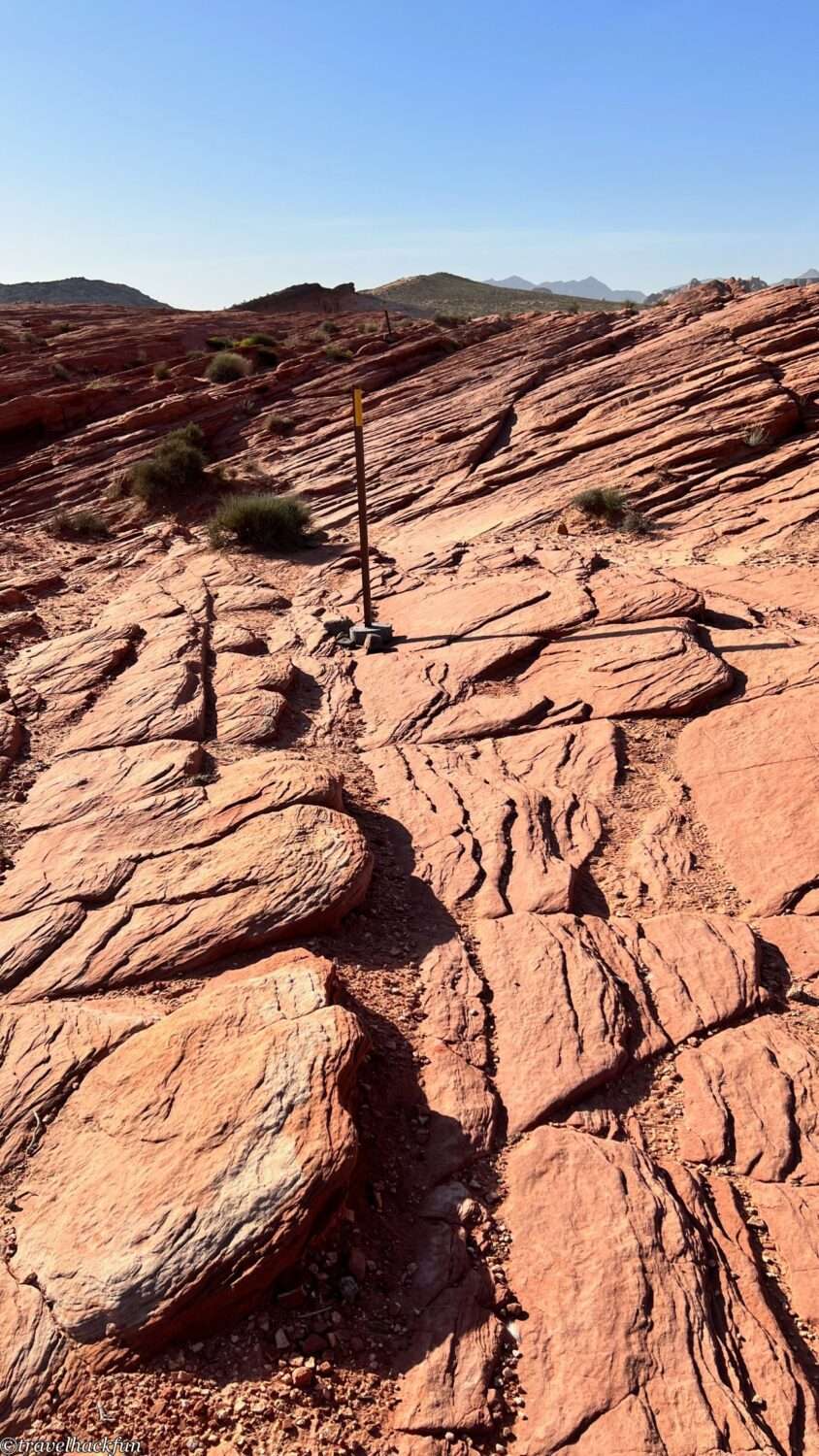
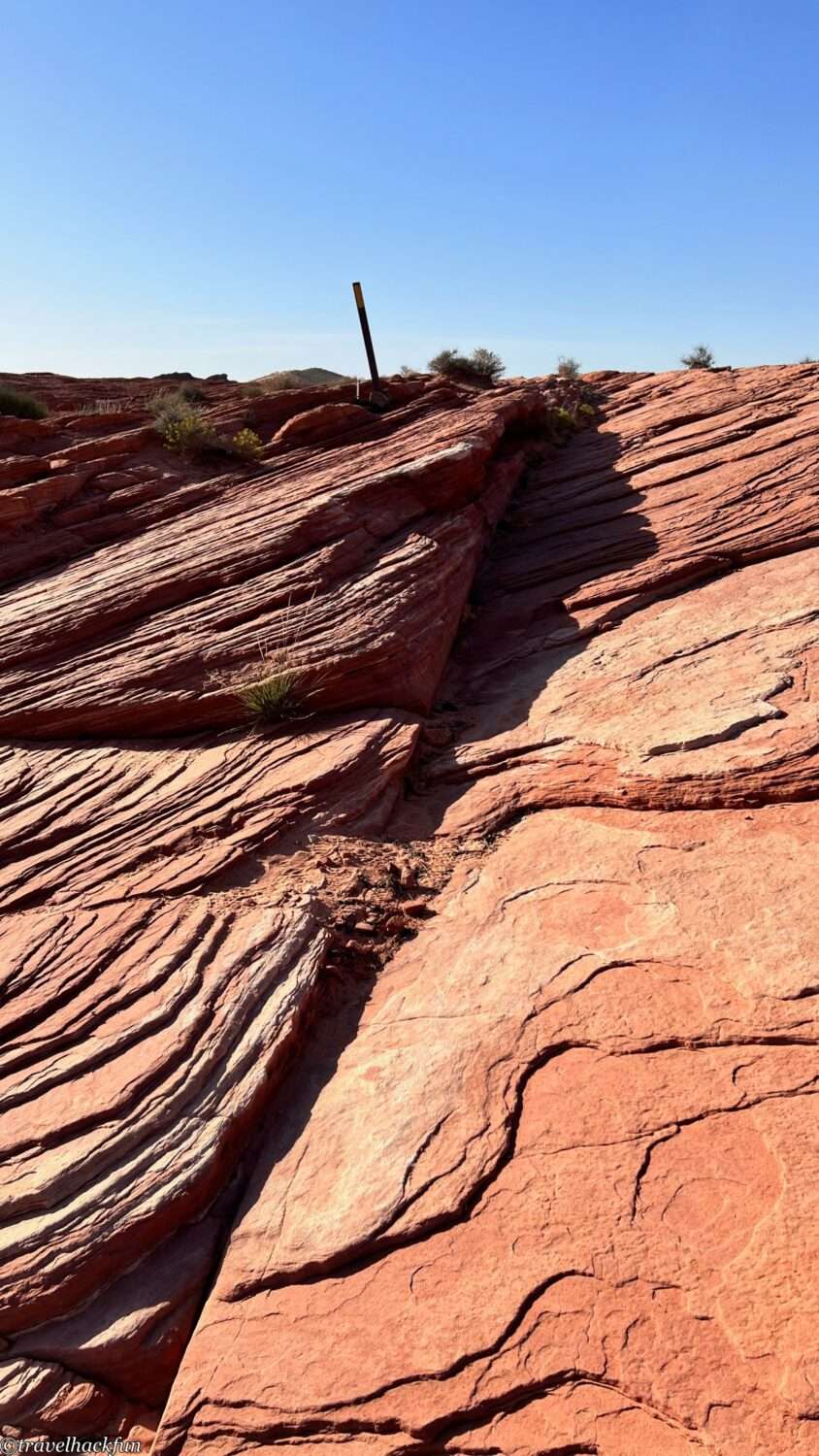
After the large rocky area, the terrain becomes more and more spectacular. Gradually, we see beautiful pink, red and white lines of rock formations, indicating that the so-called Fire Wave is approaching.
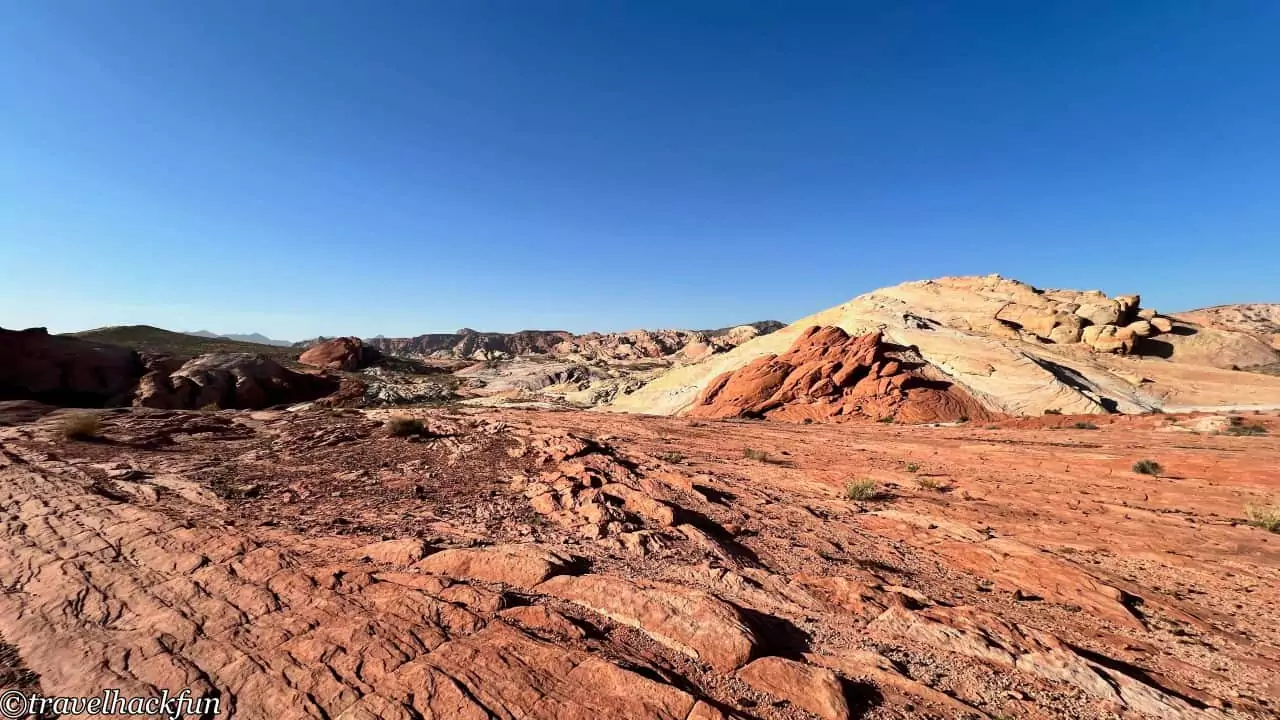
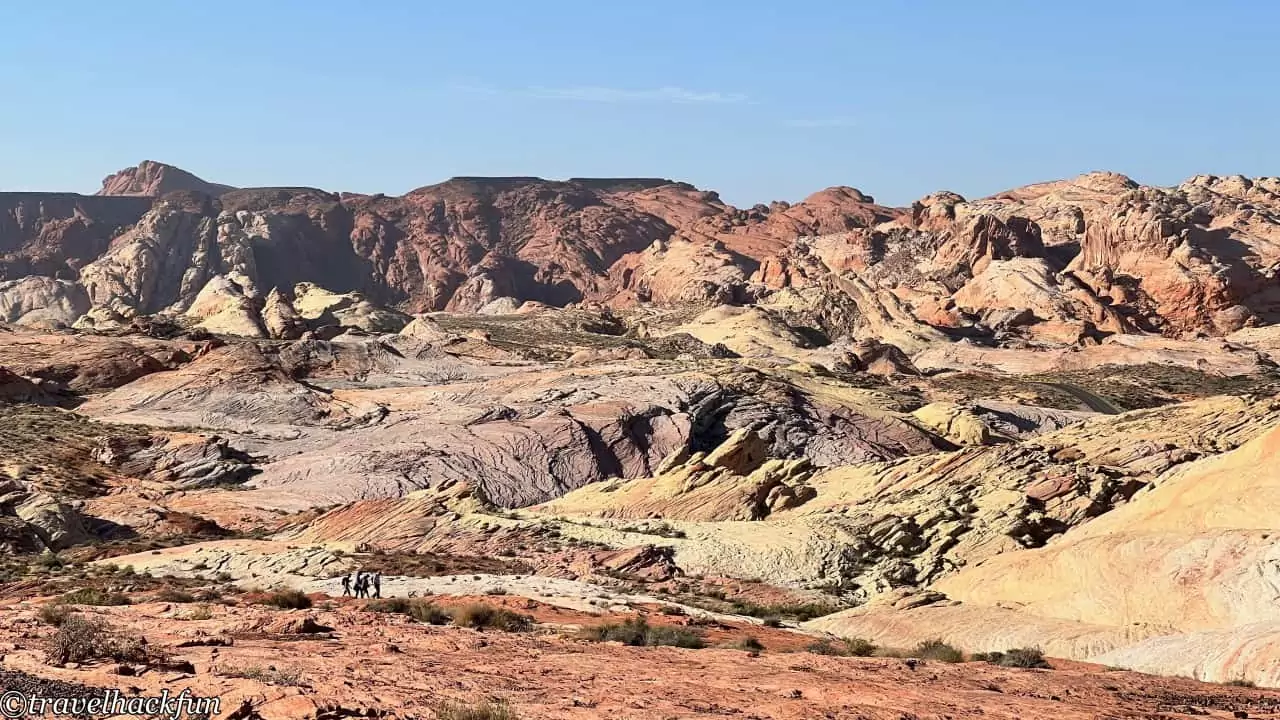

The Valley of Fire is formed by 150 million years old desert strata, ranging from dark red to yellow, which have been eroded and weathered over time to form the wavy rock formations we see today, and the Fire Wave is so spectacular you'll be stuck there for a long time.

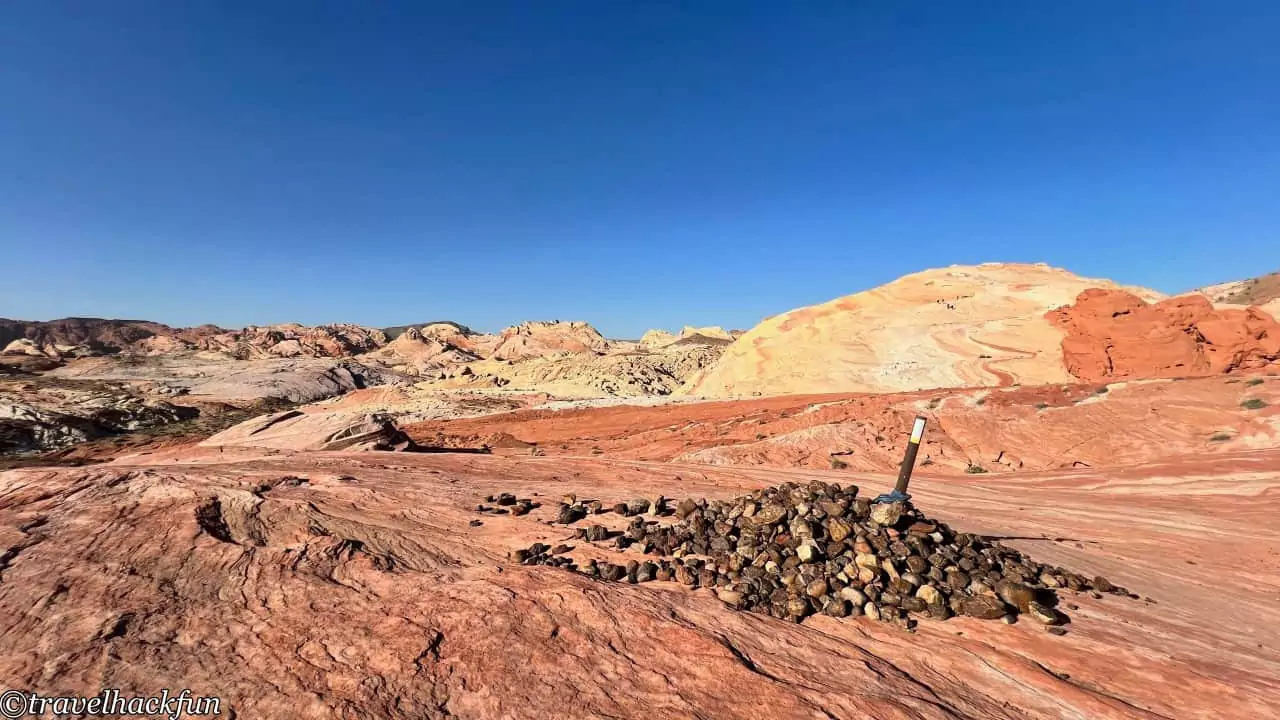
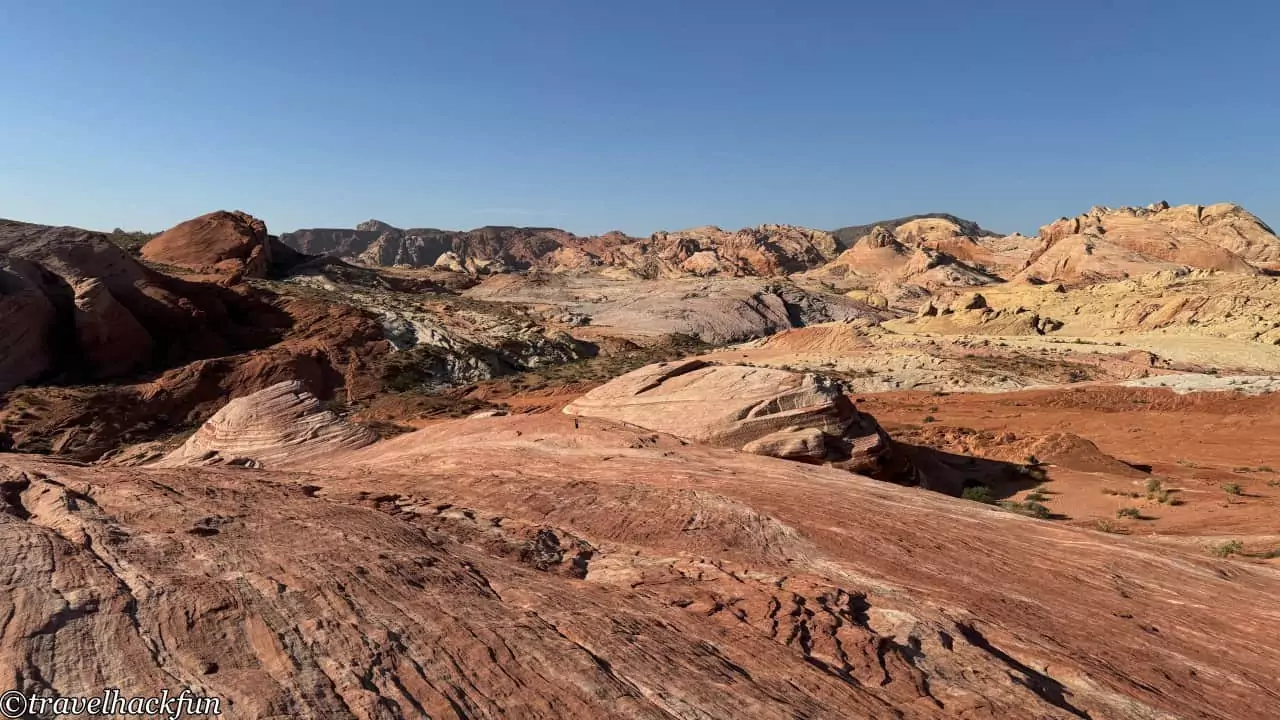


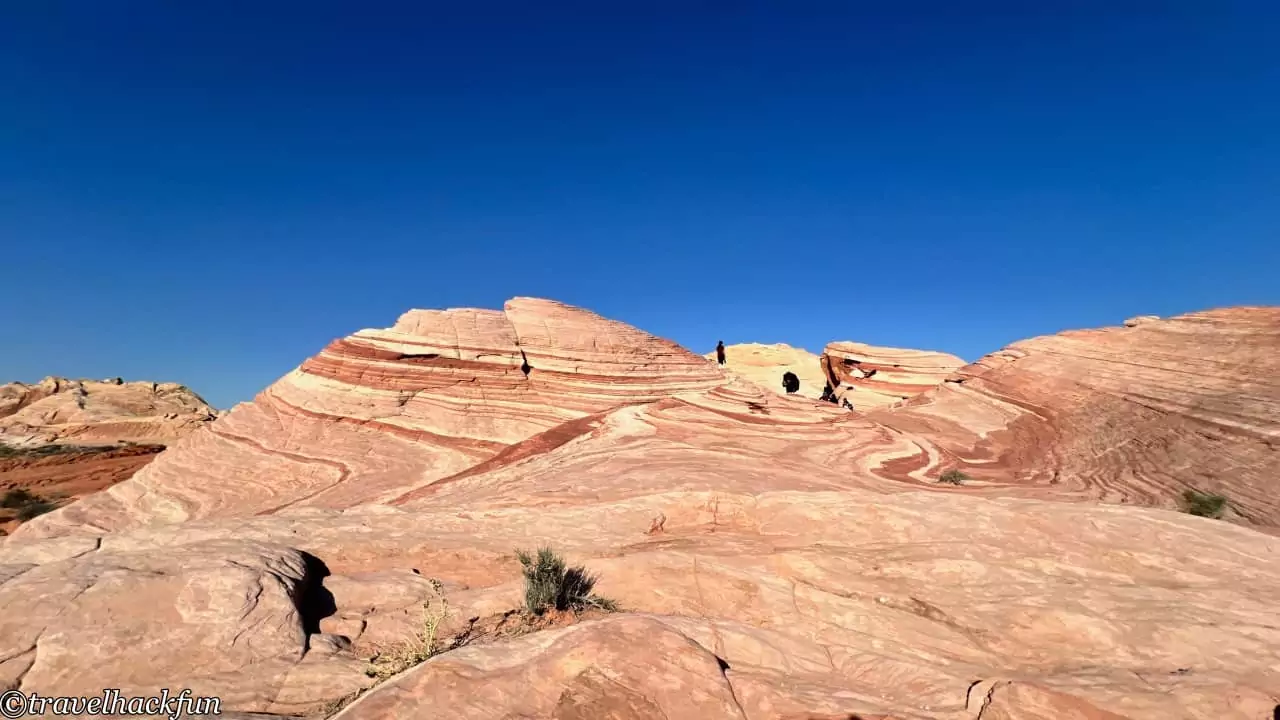
Climb down through the Fire Wave rock layer and soon you will see the sign for the end of the Fire Wave Trail. If time is limited, turn back.
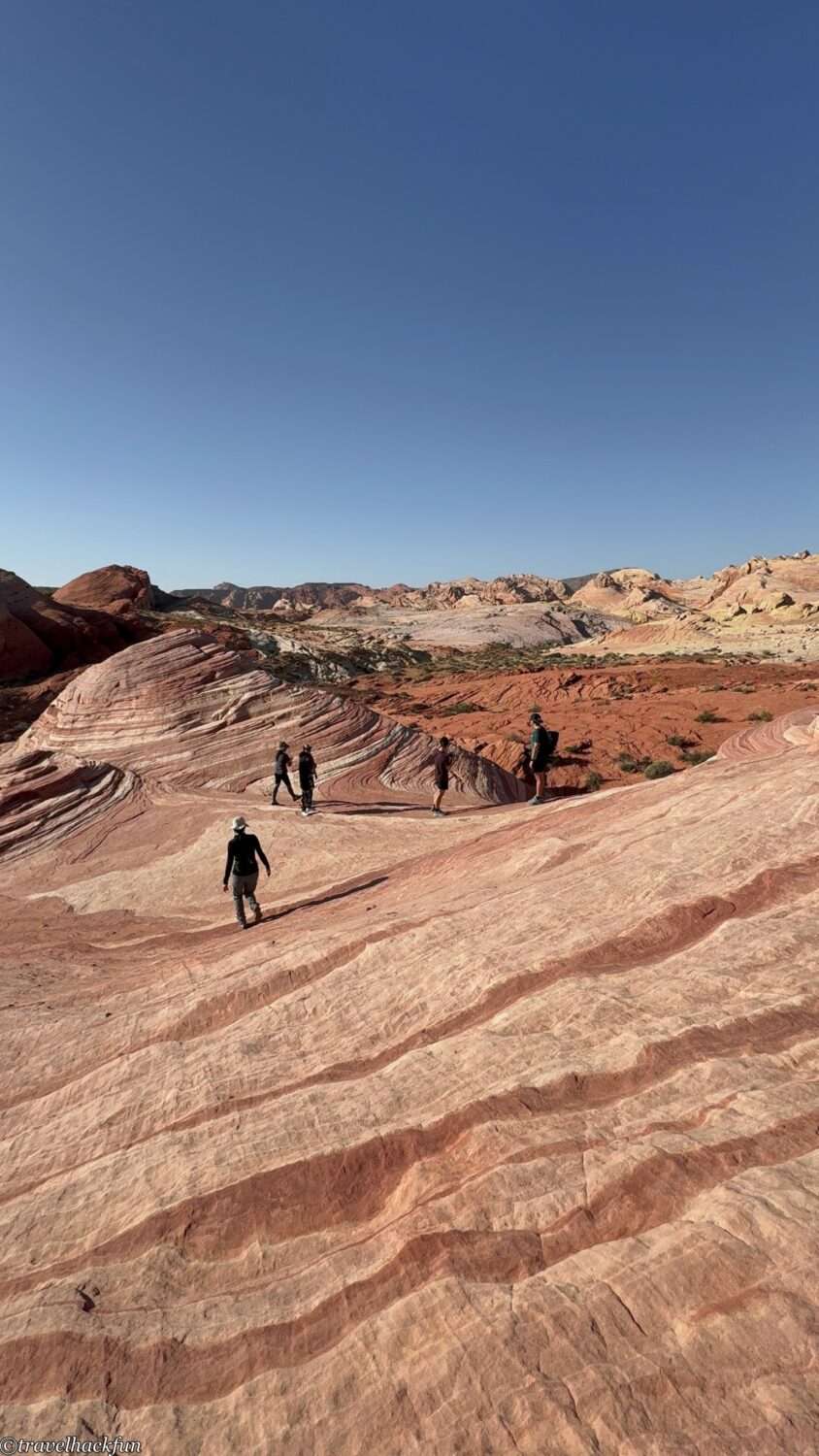
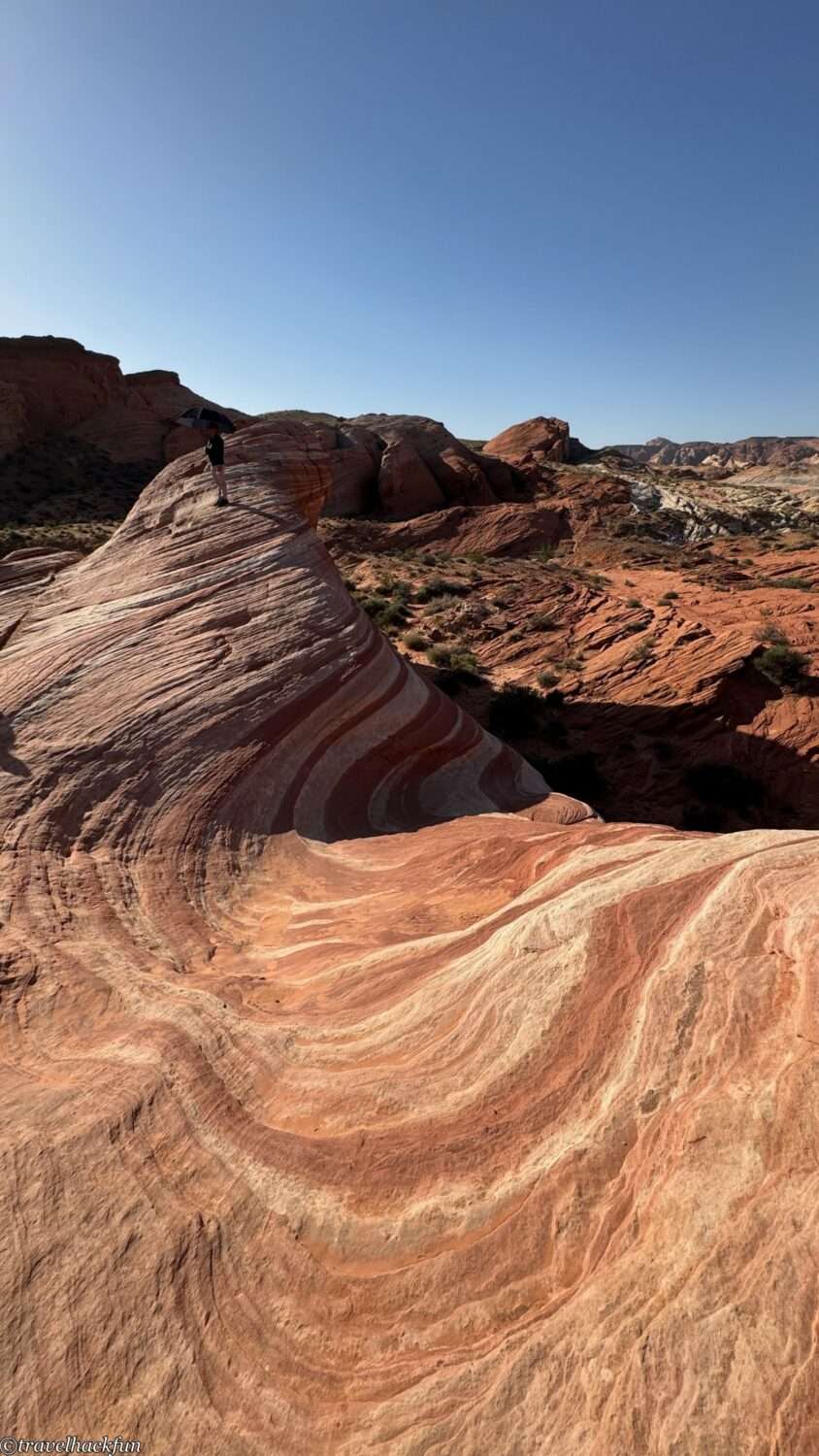
Must See | Seven Wonders Trail | Pink Canyon
After reaching the end of Fire Wave Trail, you can actually continue to walk down the trail and join Seven Wonders Trail, which leads to Pink Canyon and then back to the Fire Wave Trailhead, a total of about 2 miles long. Although this section of the trail is quite long and there are a lot of sandy areas in the middle which are not fast to walk on, I think it is very worthwhile.
As soon as you pick up the Seven Wonders Trail, the path under your feet turns from rocky to sandy, making it slightly harder to walk.
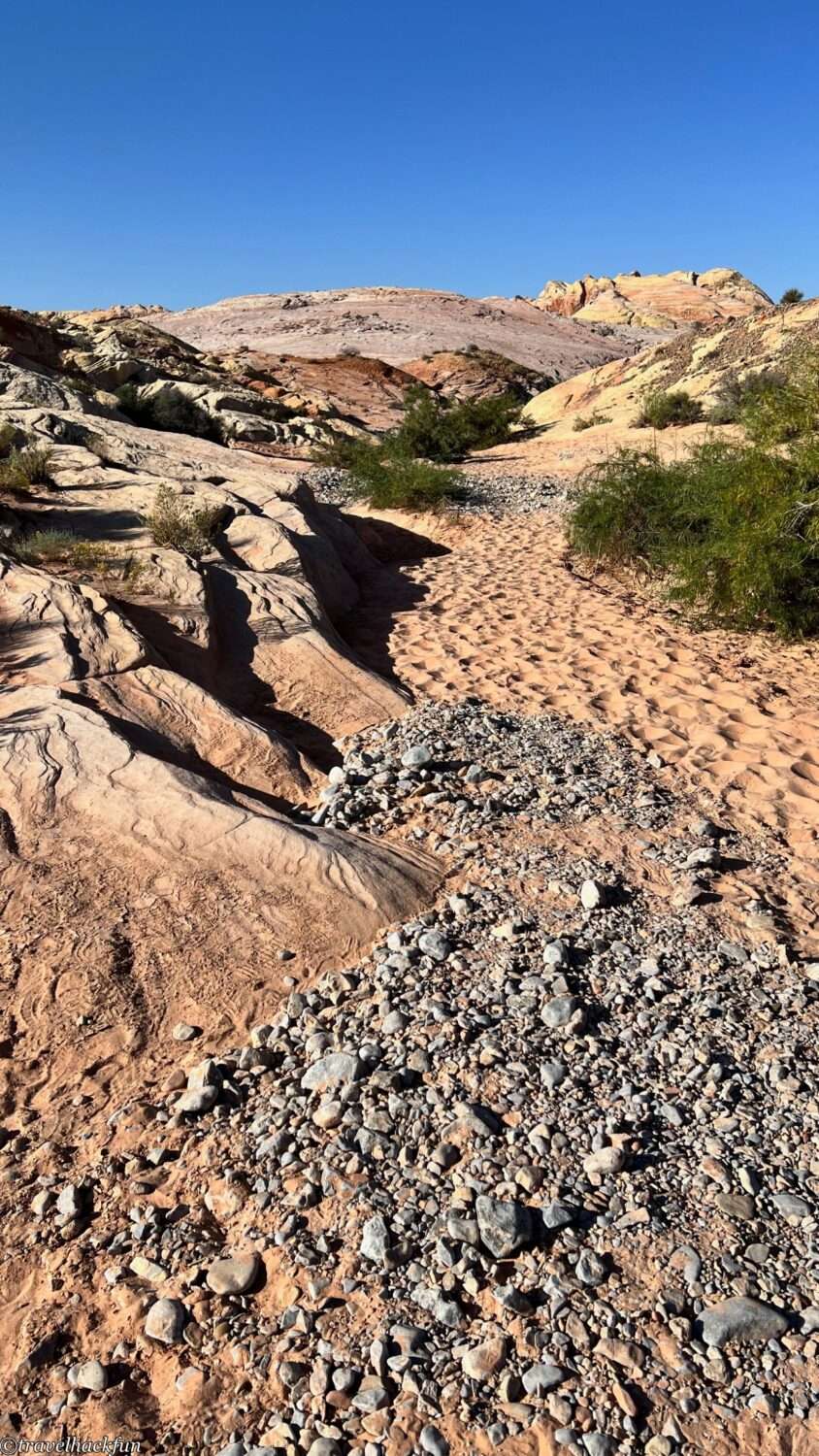
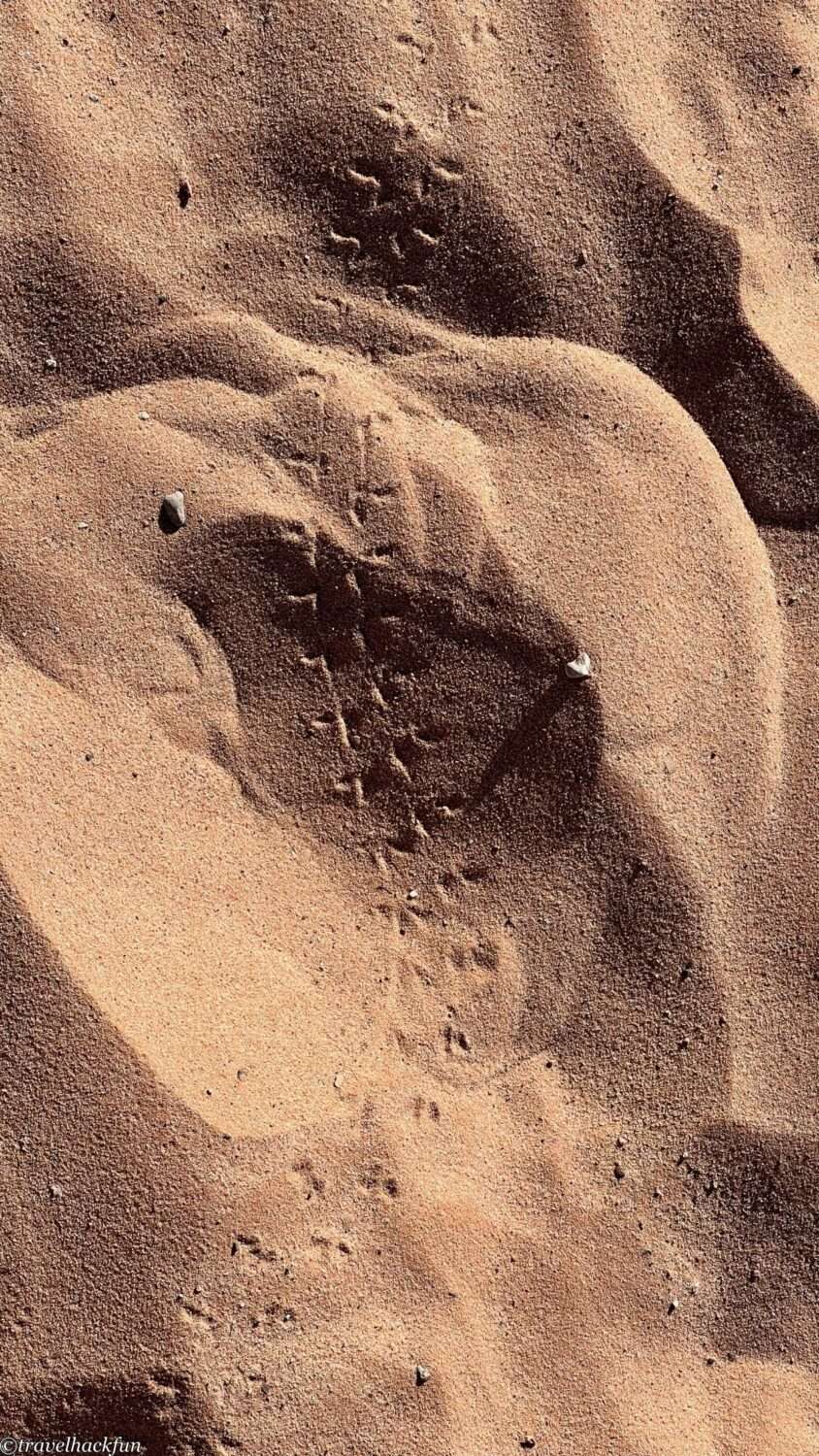
About a third of the way down the trail, you'll come to the Pink Canyon, where the rock walls gradually turn pink.
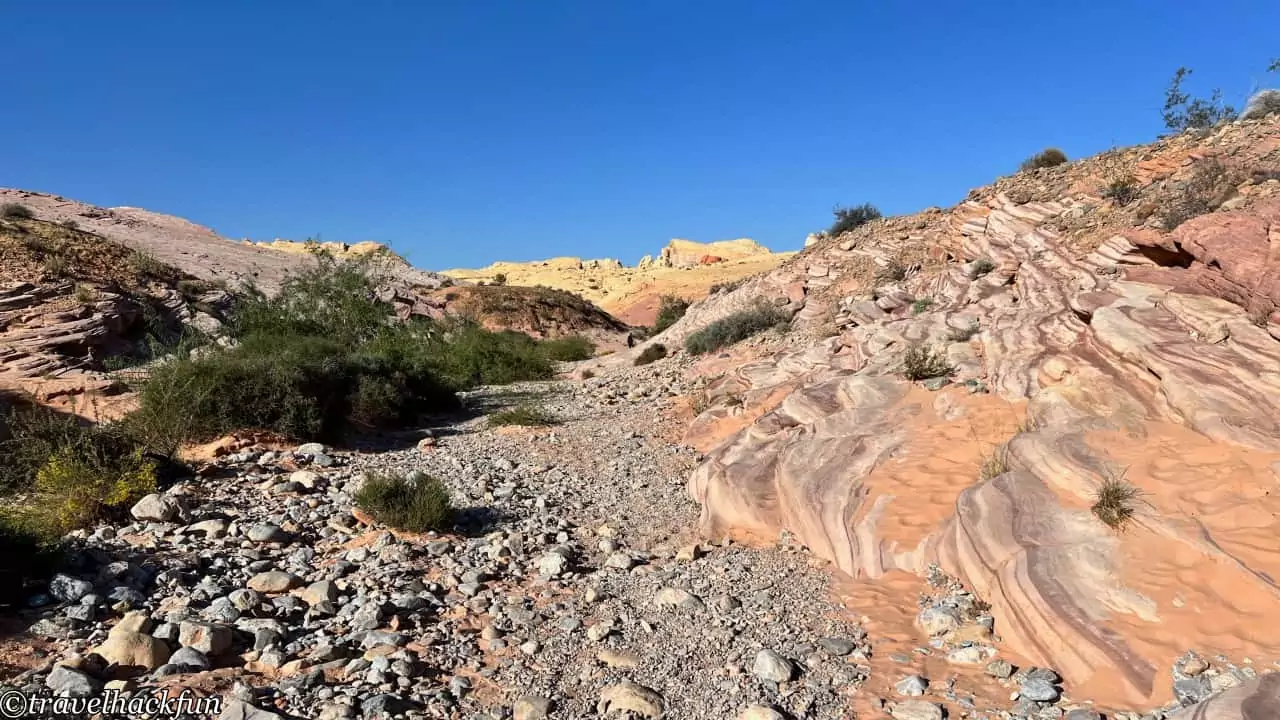
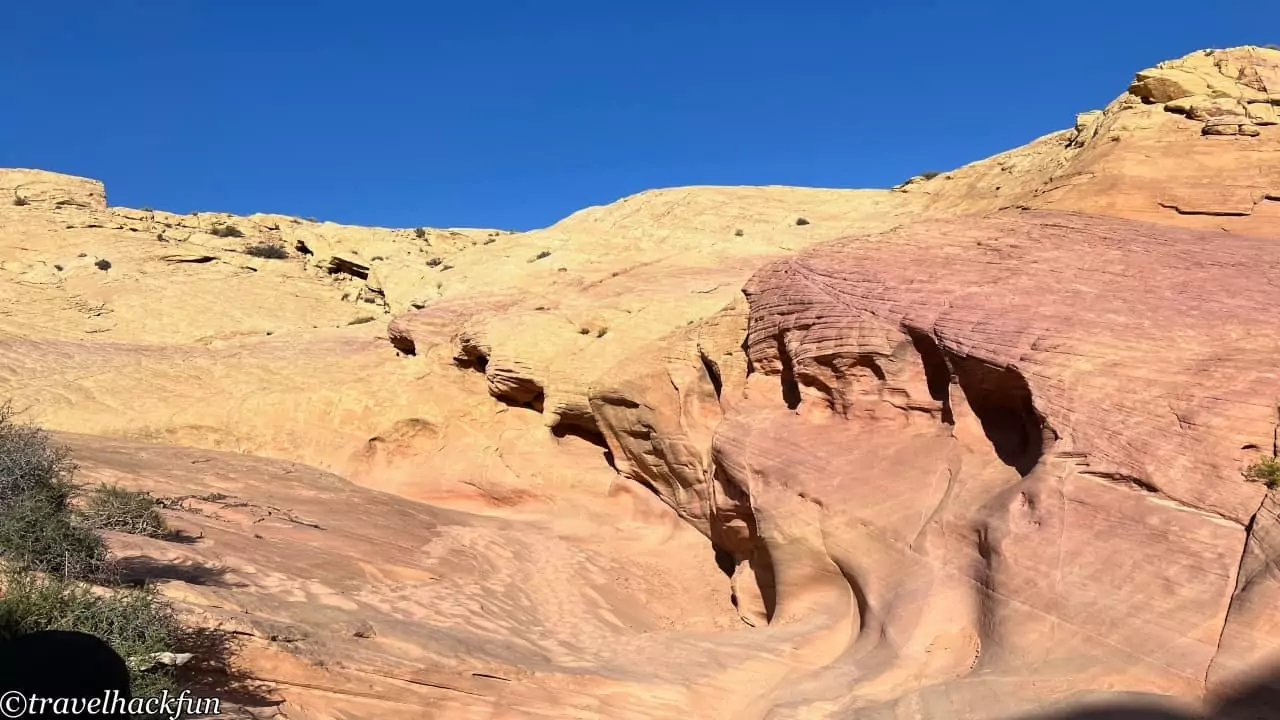
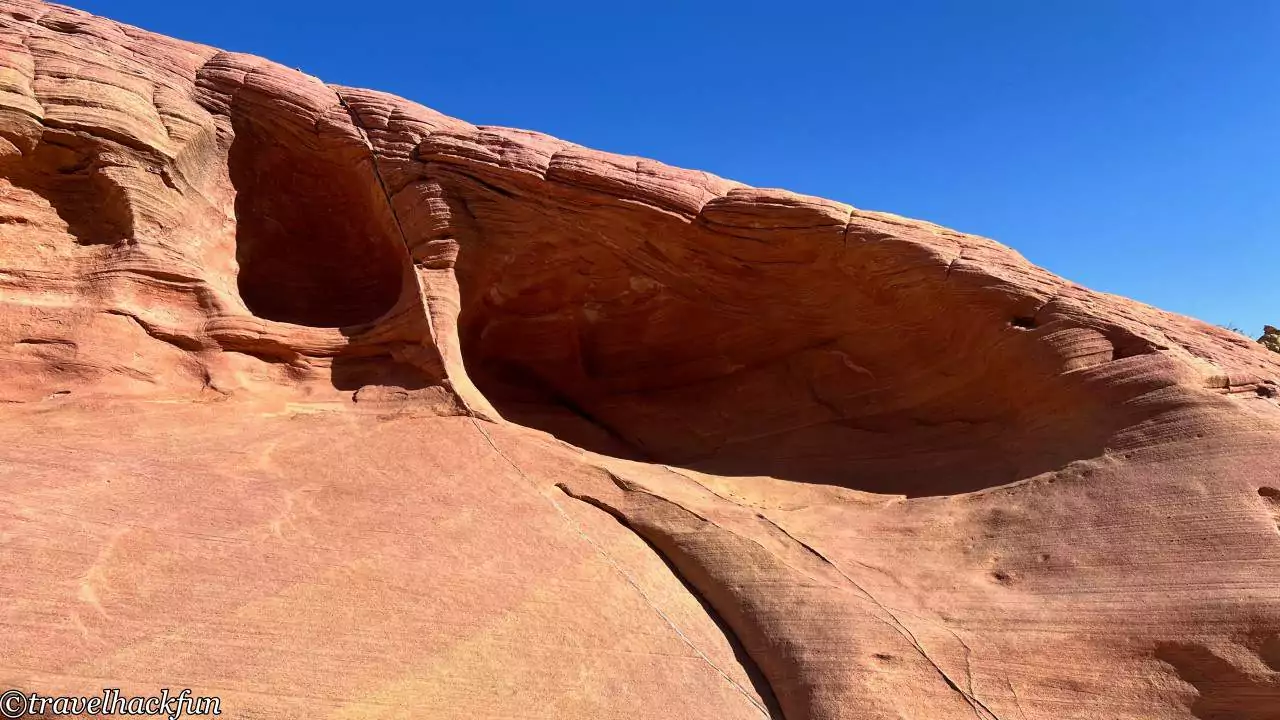
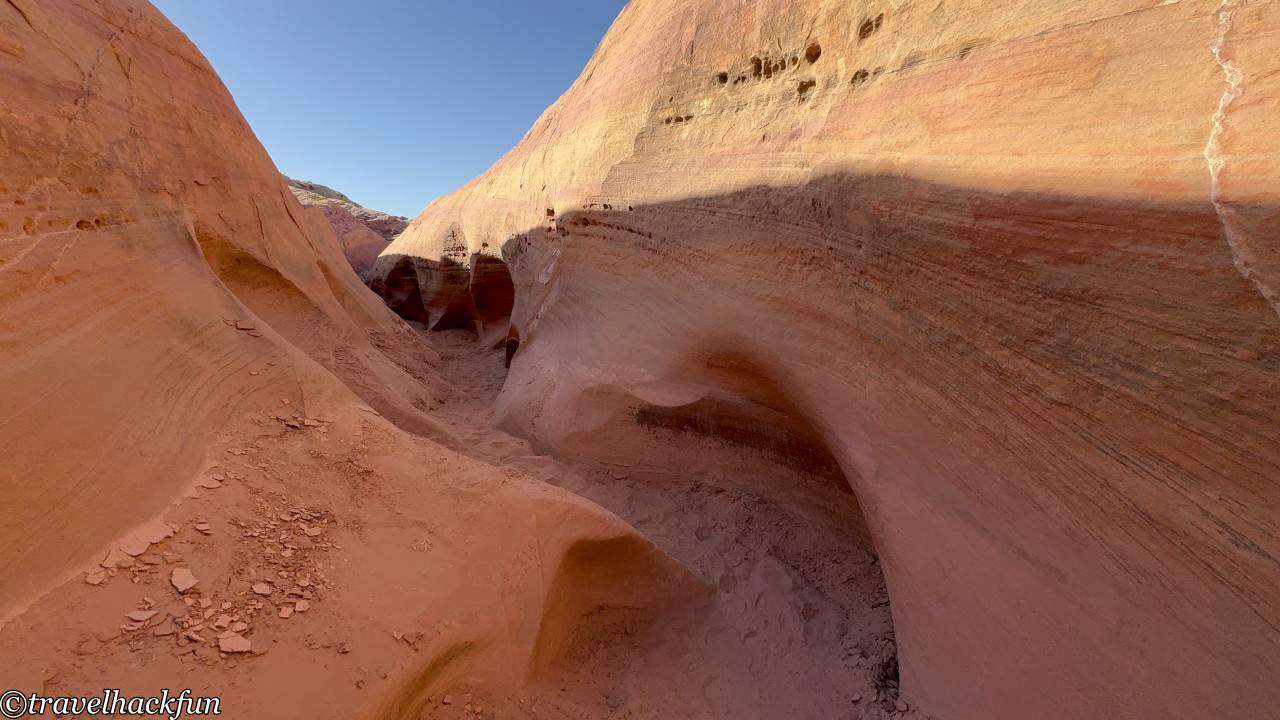
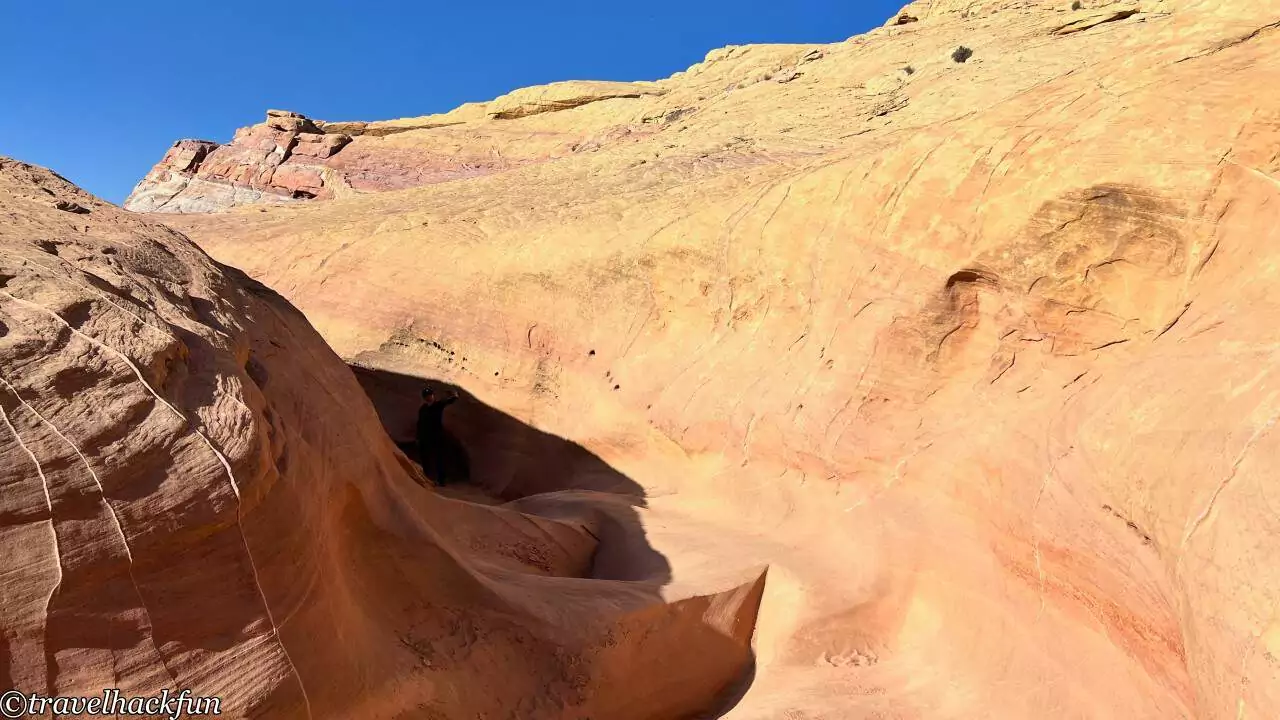


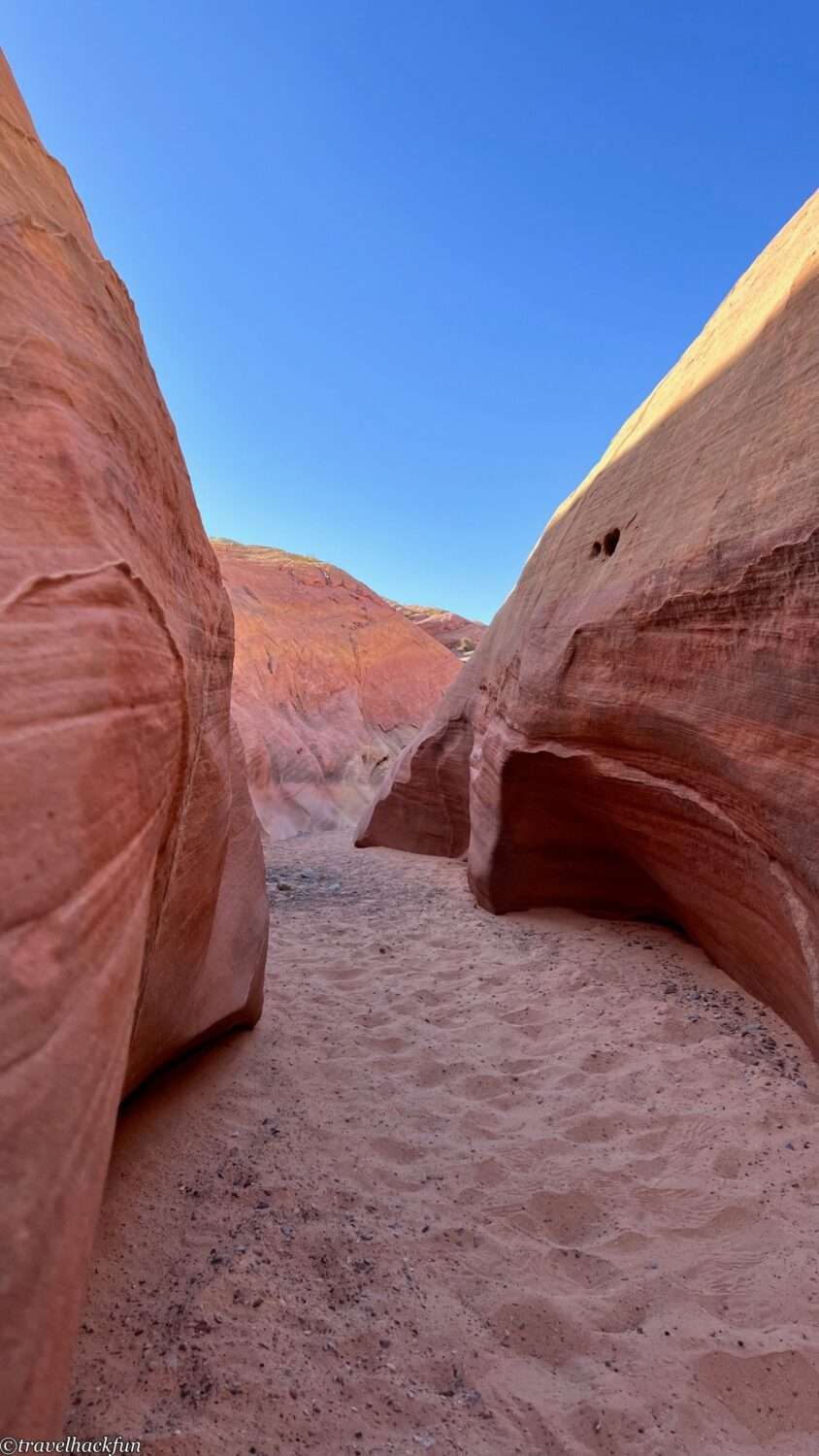
After passing through Pink canyon, the trail continues across the road, and there are still many rock formations of fantastic shapes behind, which are quite spectacular along the way. Some of the narrow parts of the rock are very adventurous.
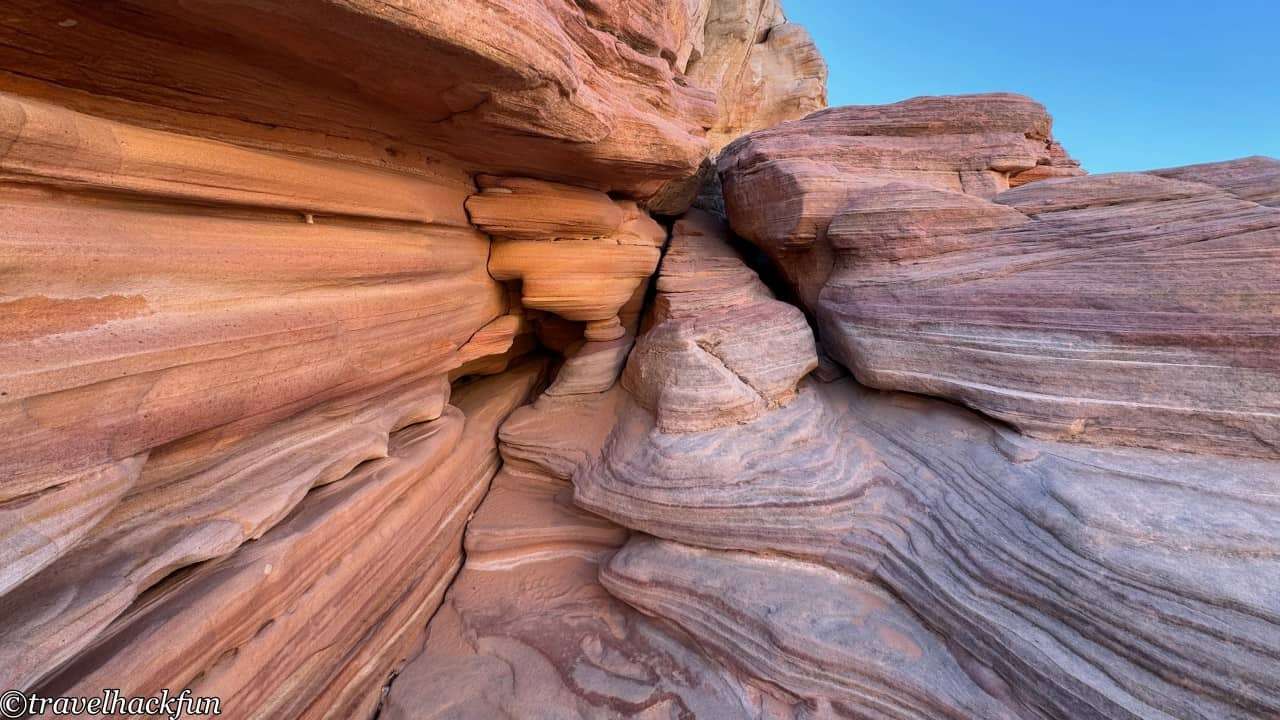
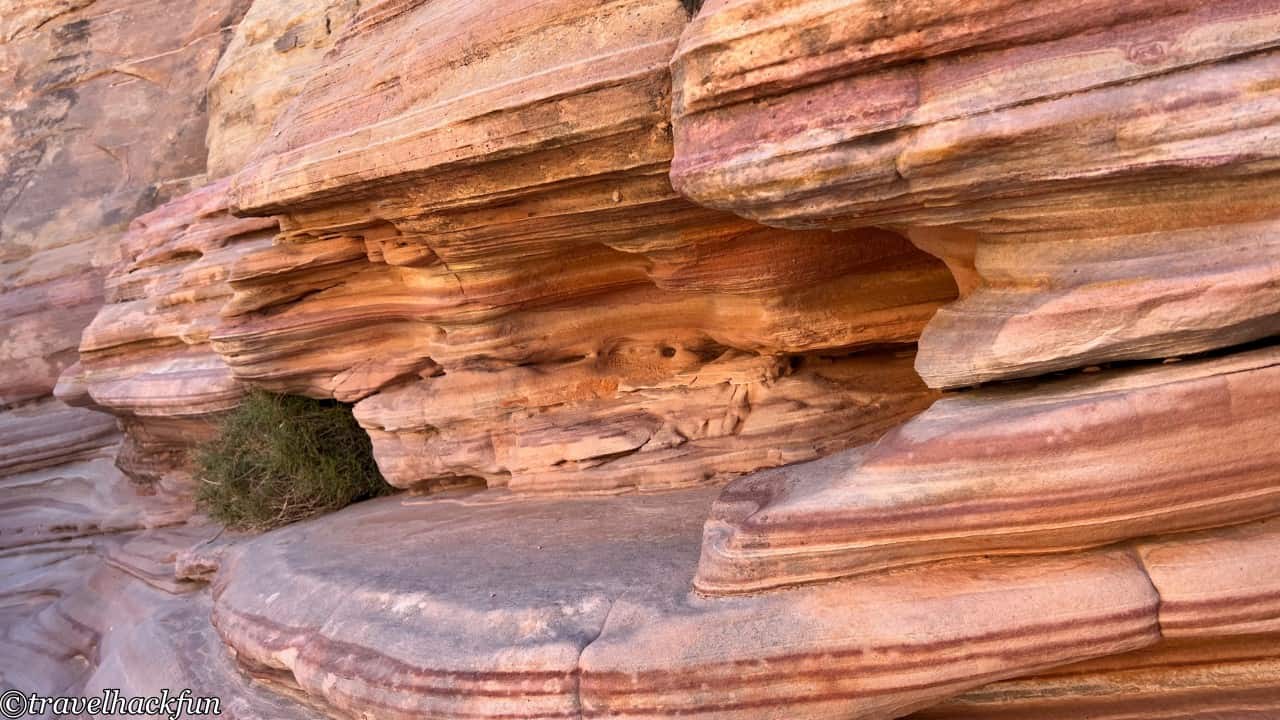
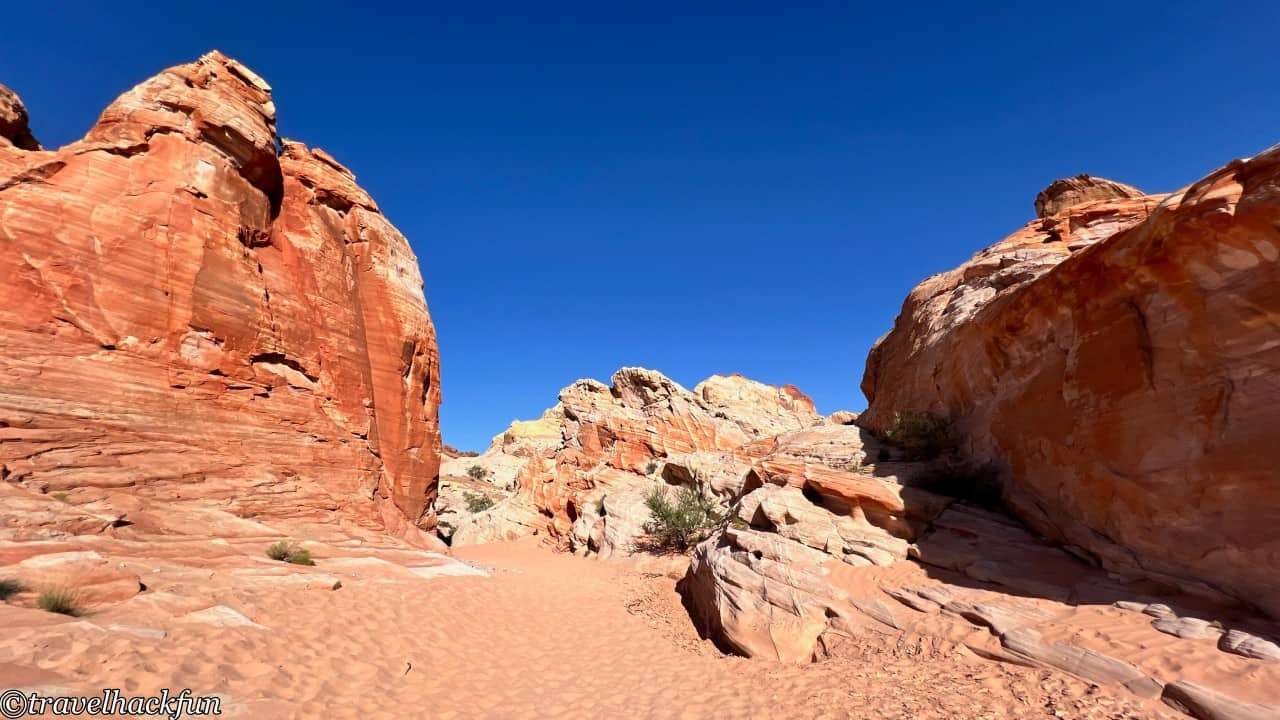
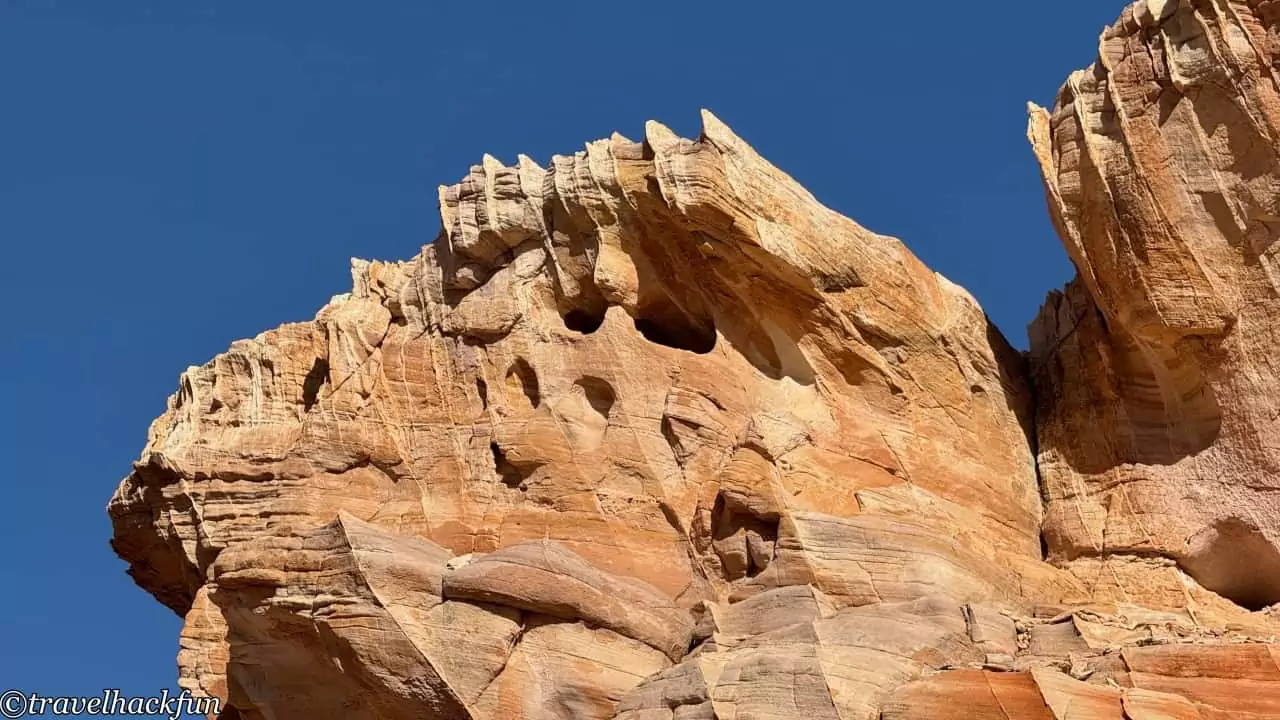
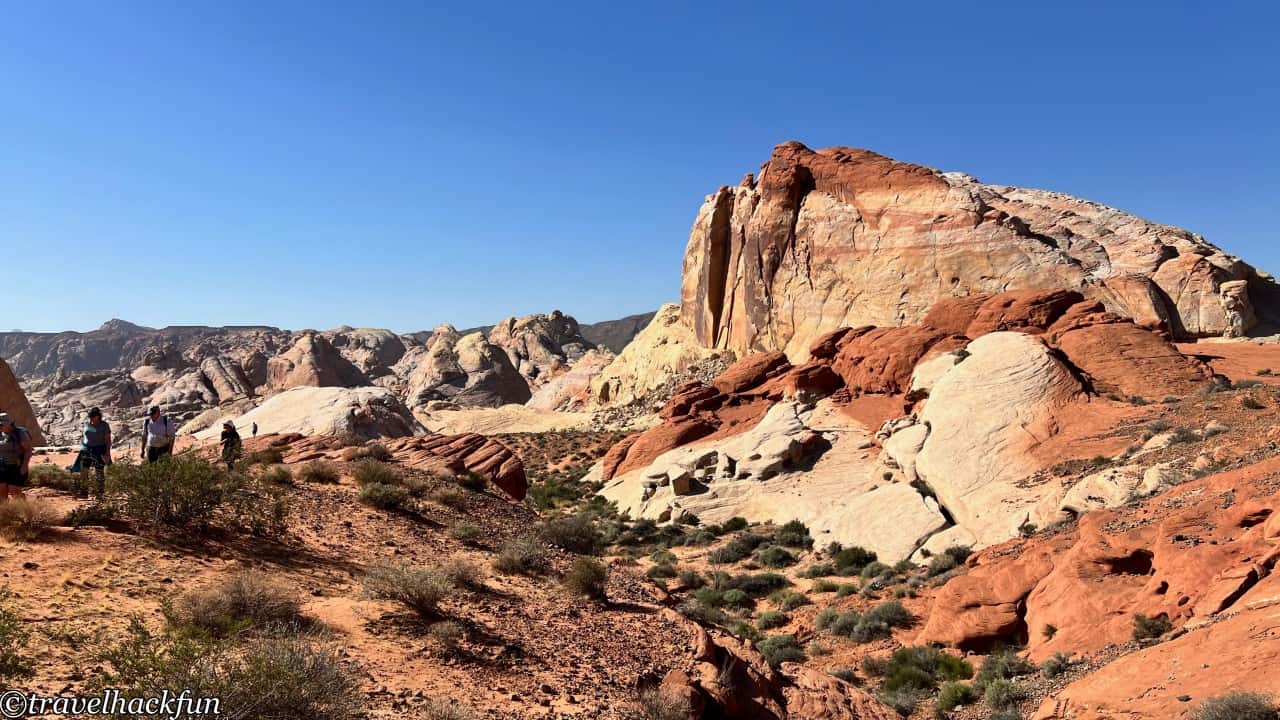
Must See | White Domes Trail
White Domes Trail is located at the end of Mouses' Tank Road, 1.1 miles long and takes about 45 minutes. I personally consider it as the second best trail in Valley of Fire.
After entering from the trailhead, the trail descends all the way down. Although there are rock stairs, the sand on the ground is a bit slippery, which makes it a bit harder to walk than the first half of the Fire Wave Trail. After walking to the end of the trail, I saw a sign that reads "The main movie set", it turns out that this side used to be a movie set, where the western action movie The Professionals was filmed.
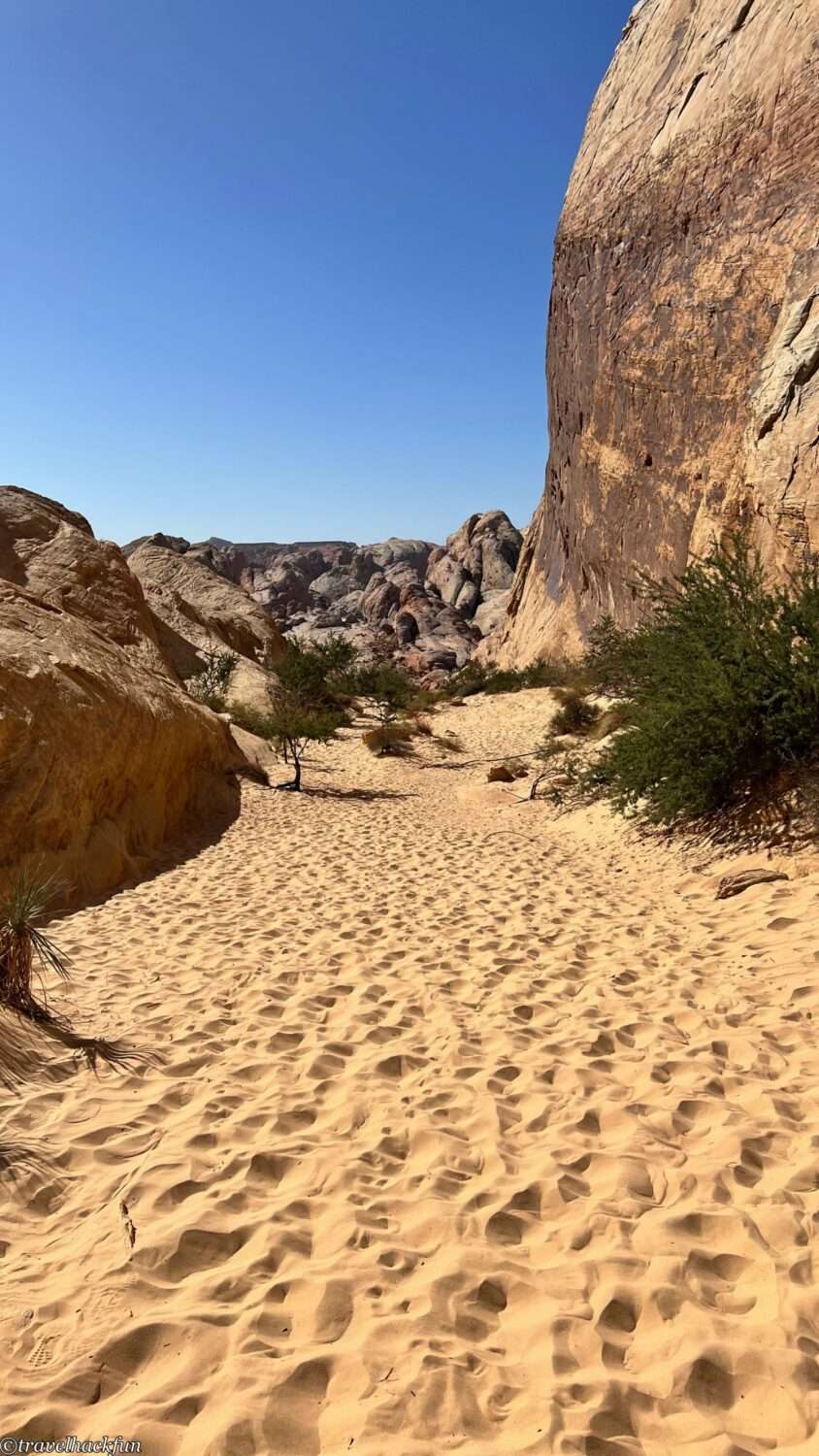
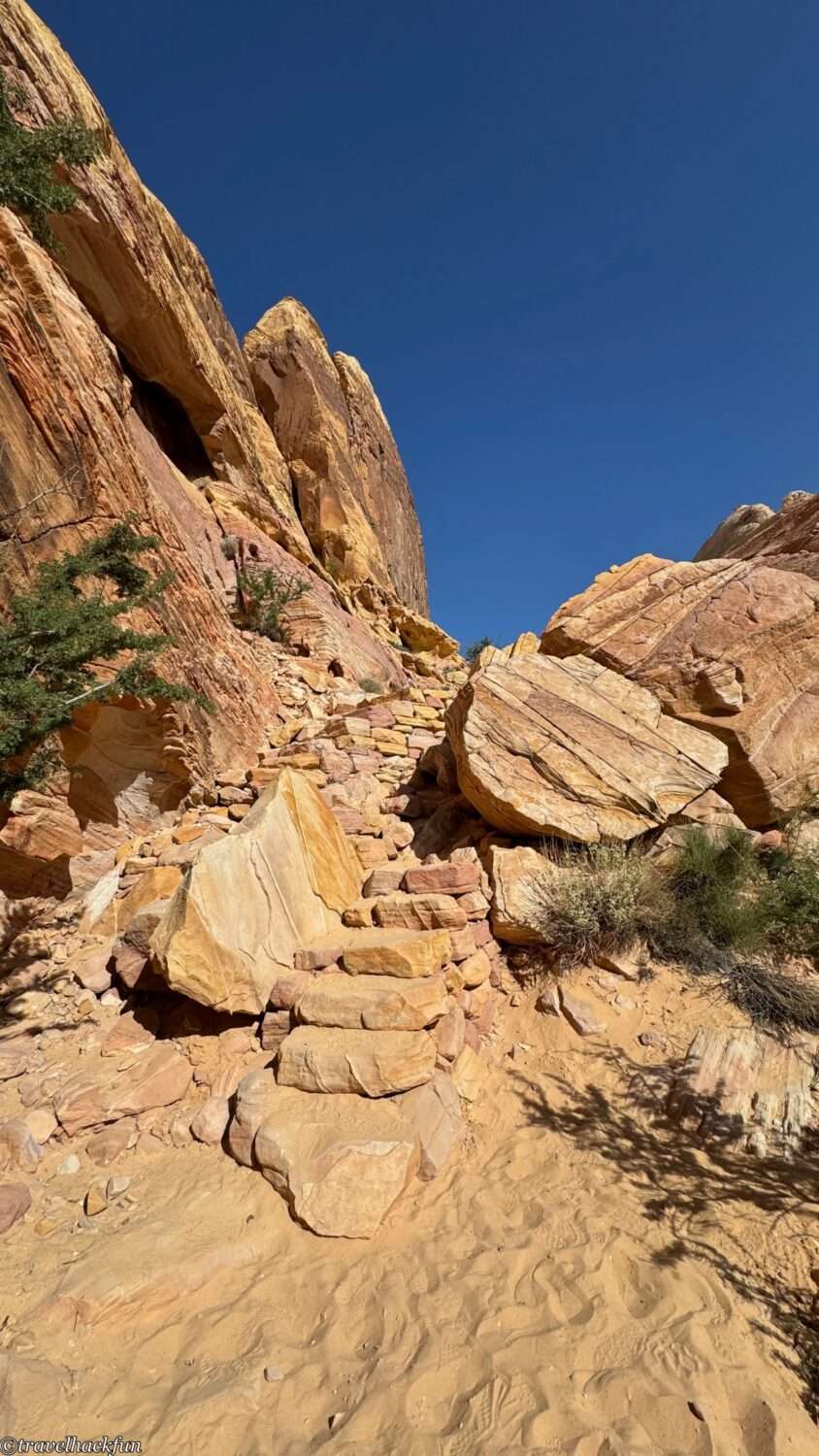
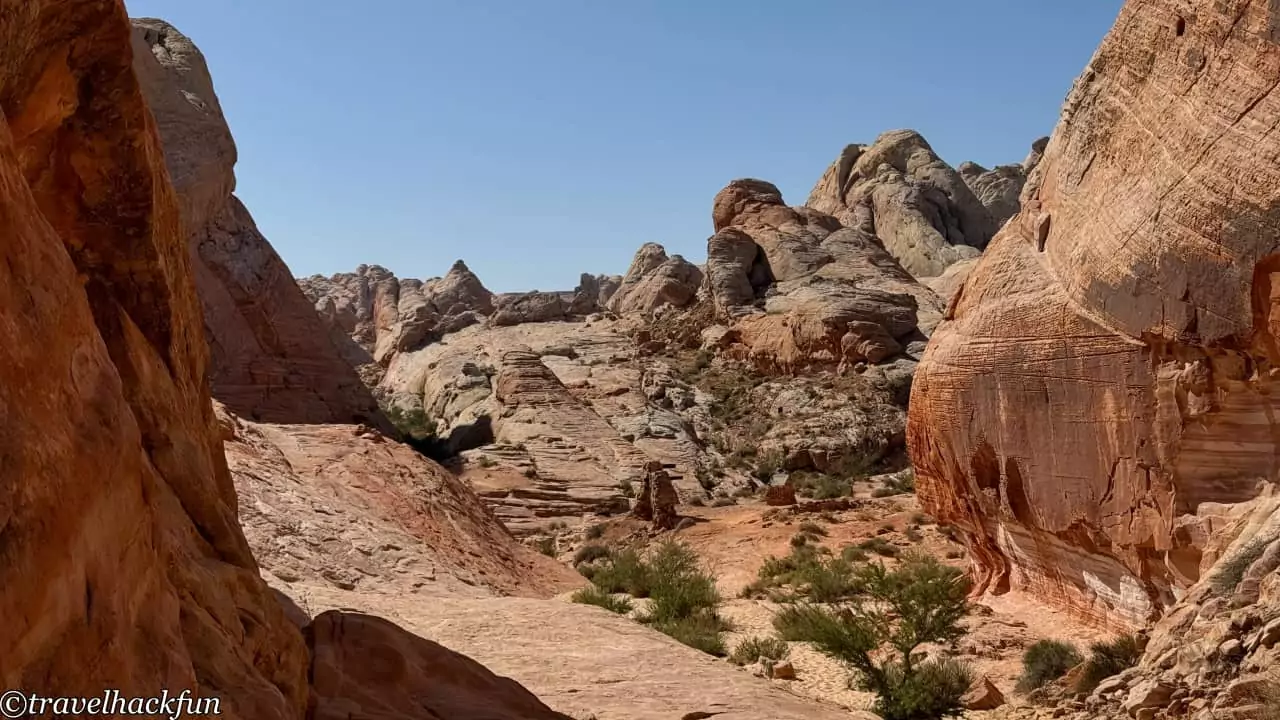
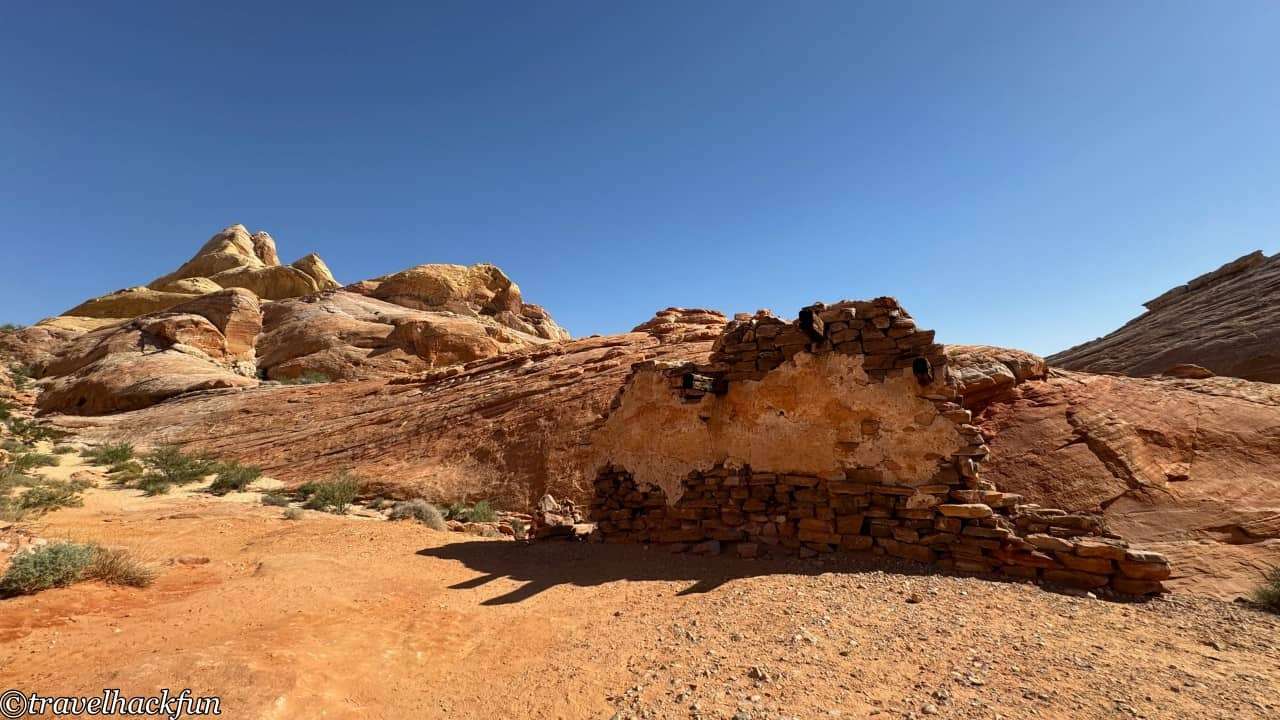
After reaching the valley floor, you'll continue walking along the canyon. The canyon's terrain is truly spectacular, featuring not only the wave-like rock formations but also numerous small honeycomb-like caves. These small caves are formed over time through the slow erosion by rainwater and wind. In a few million years, they may continue to enlarge, possibly forming arches. The trail is relatively narrow, giving you a feeling akin to walking in a dry version of "The Narrows."
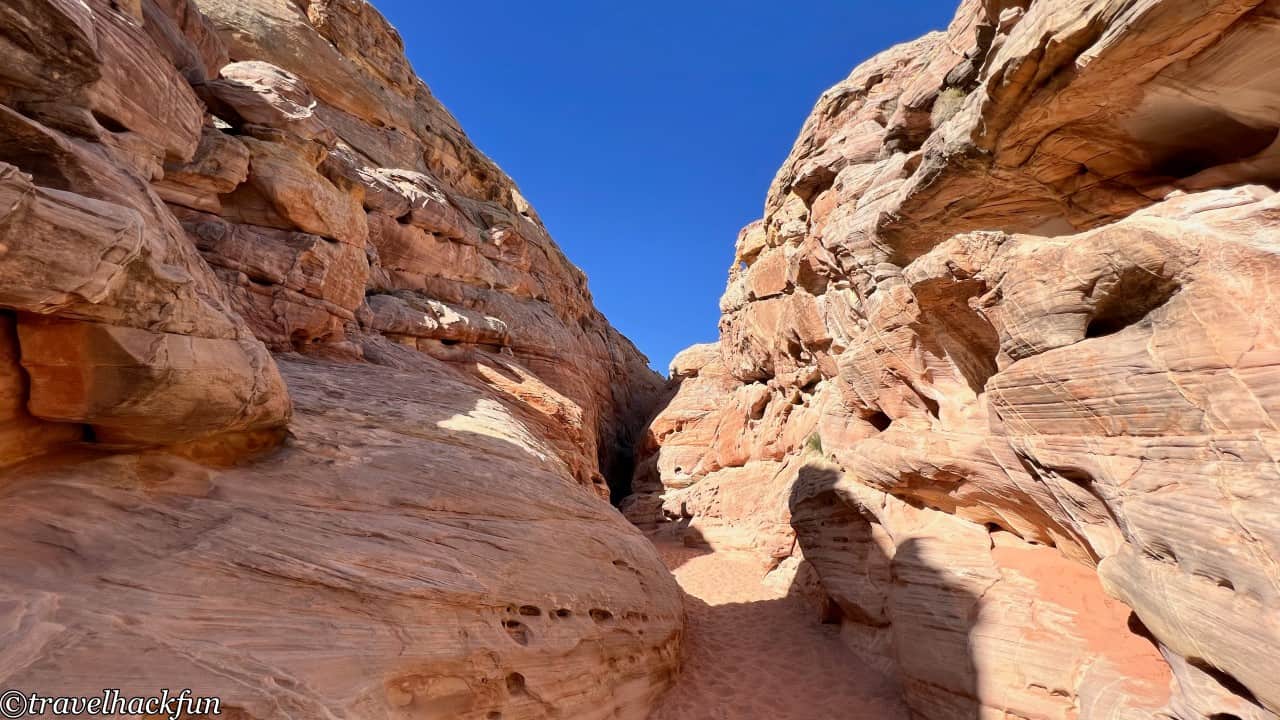
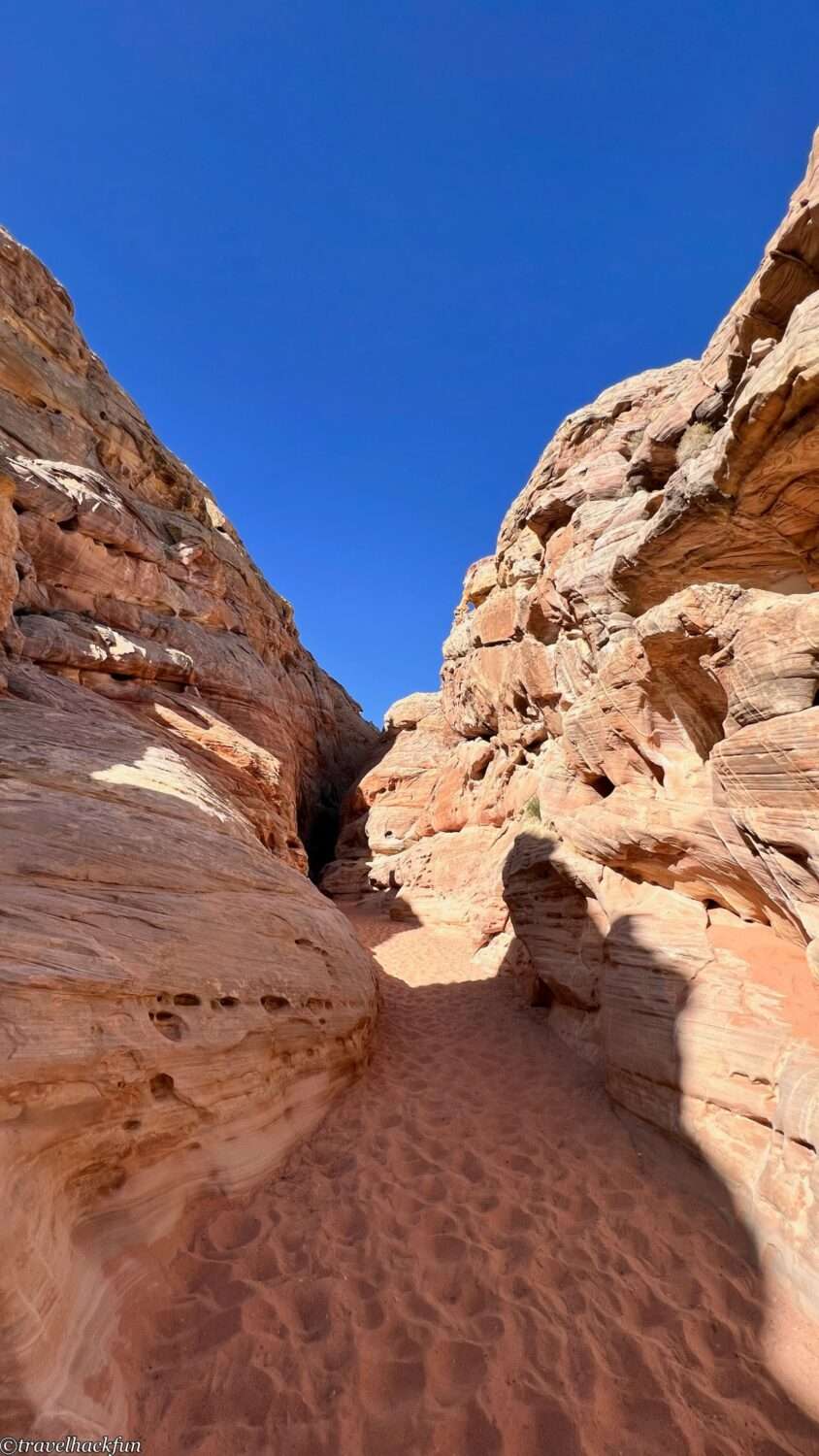
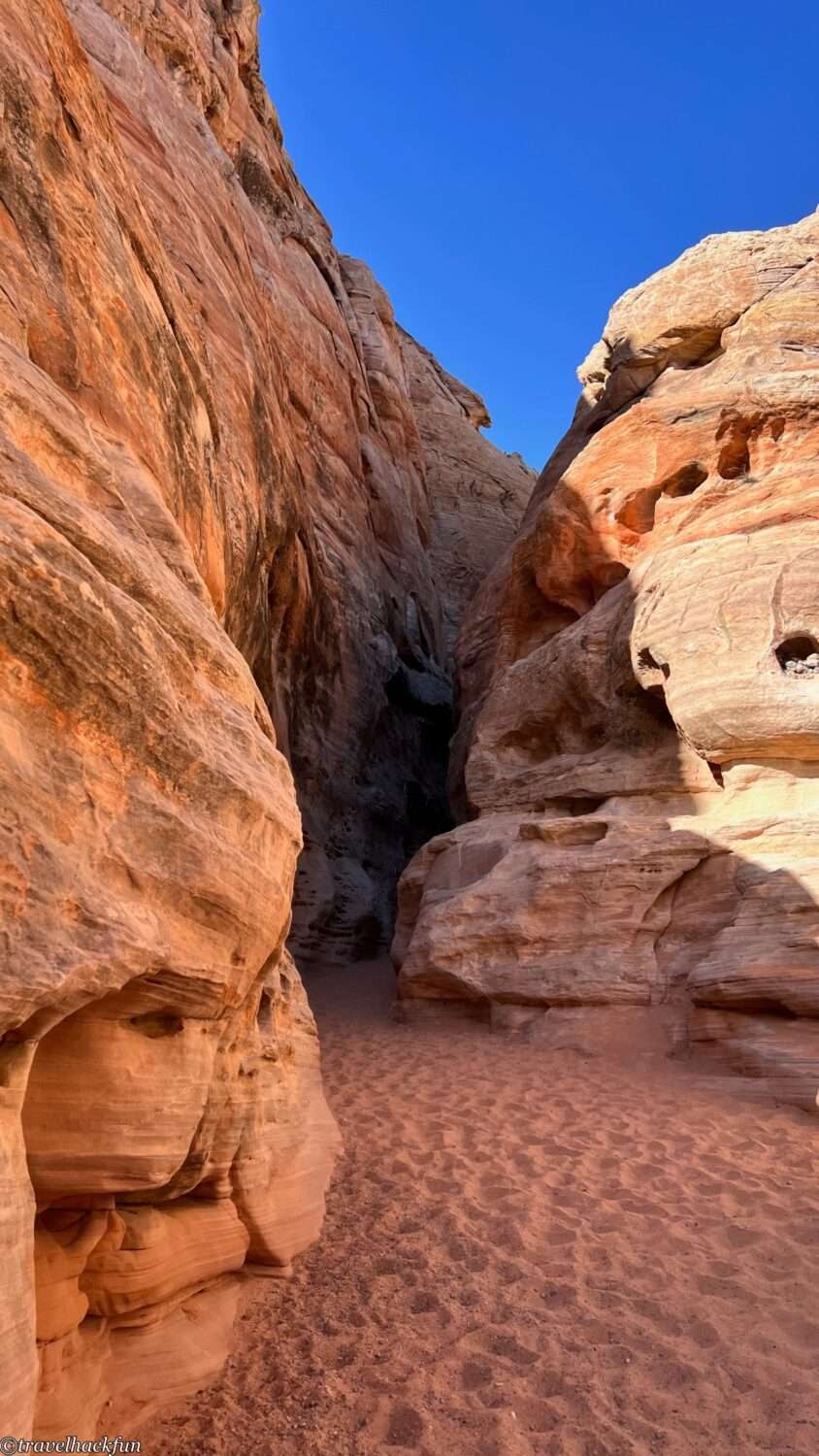

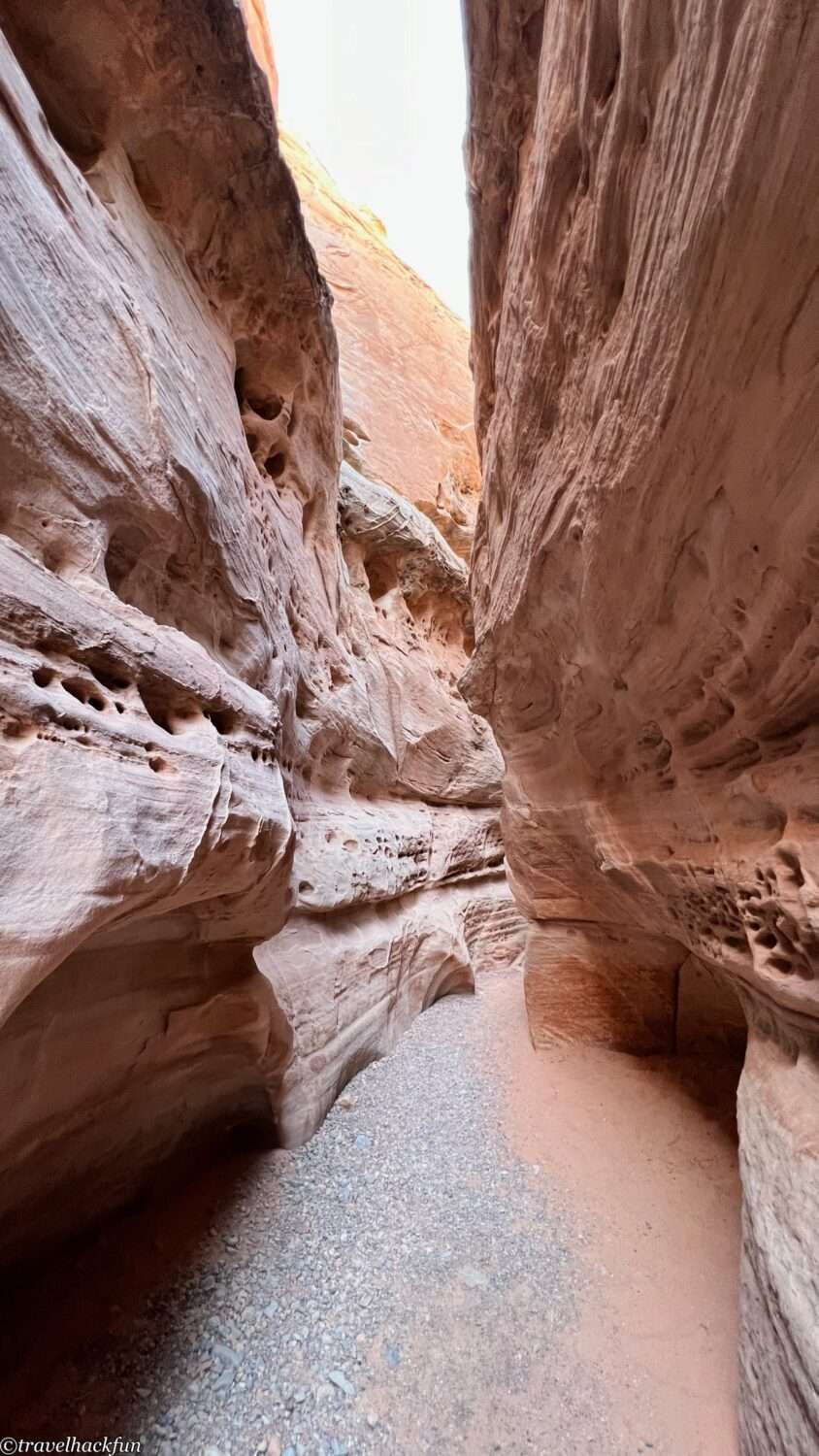

After walking out of the canyon, you'll come across the white rock formations, which mark the White Domes area. By circling around White Domes, you'll soon be able to return to the parking lot. If you only wish to see White Dome and the canyon, you can opt to take the trail in the opposite direction. After reaching the canyon, you can turn back, saving some distance.
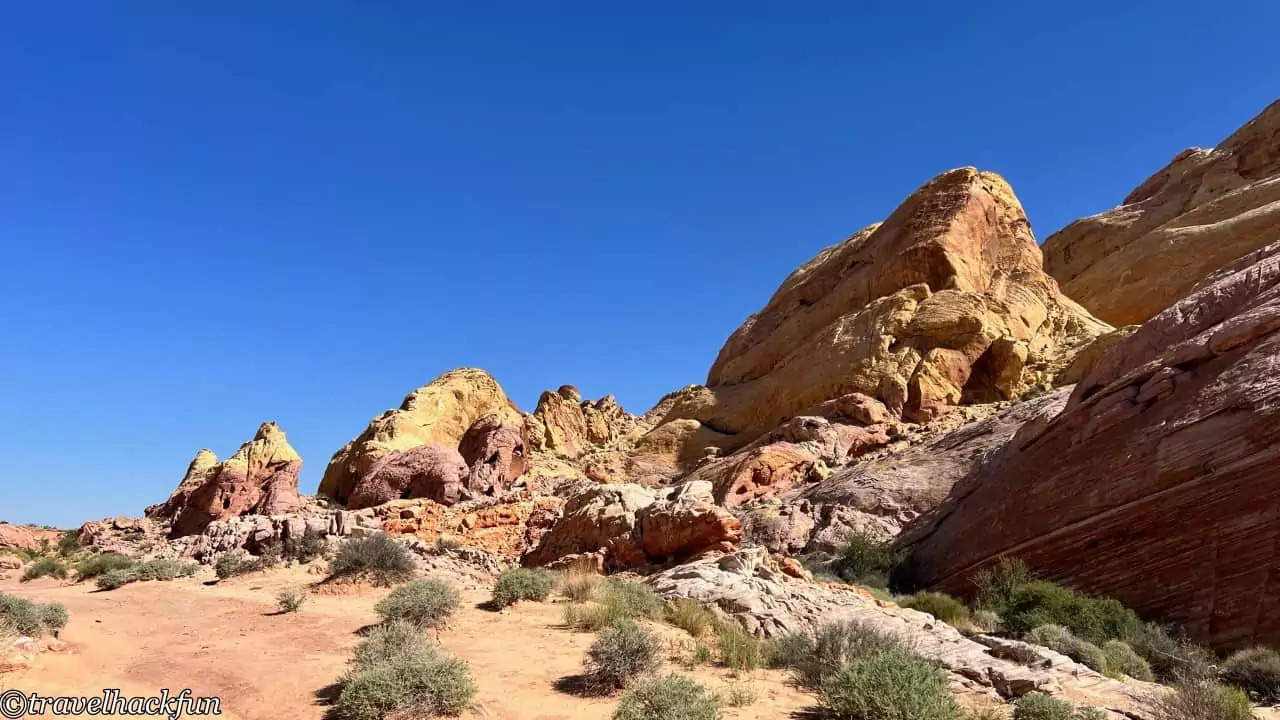
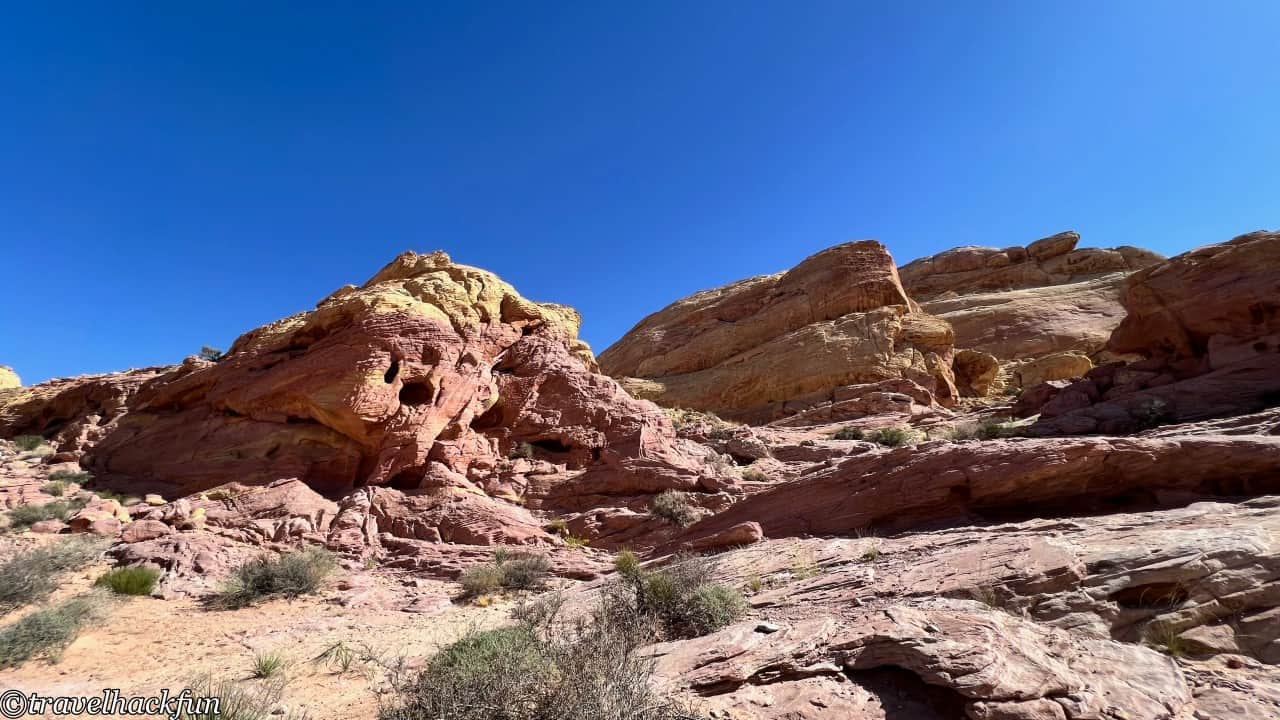
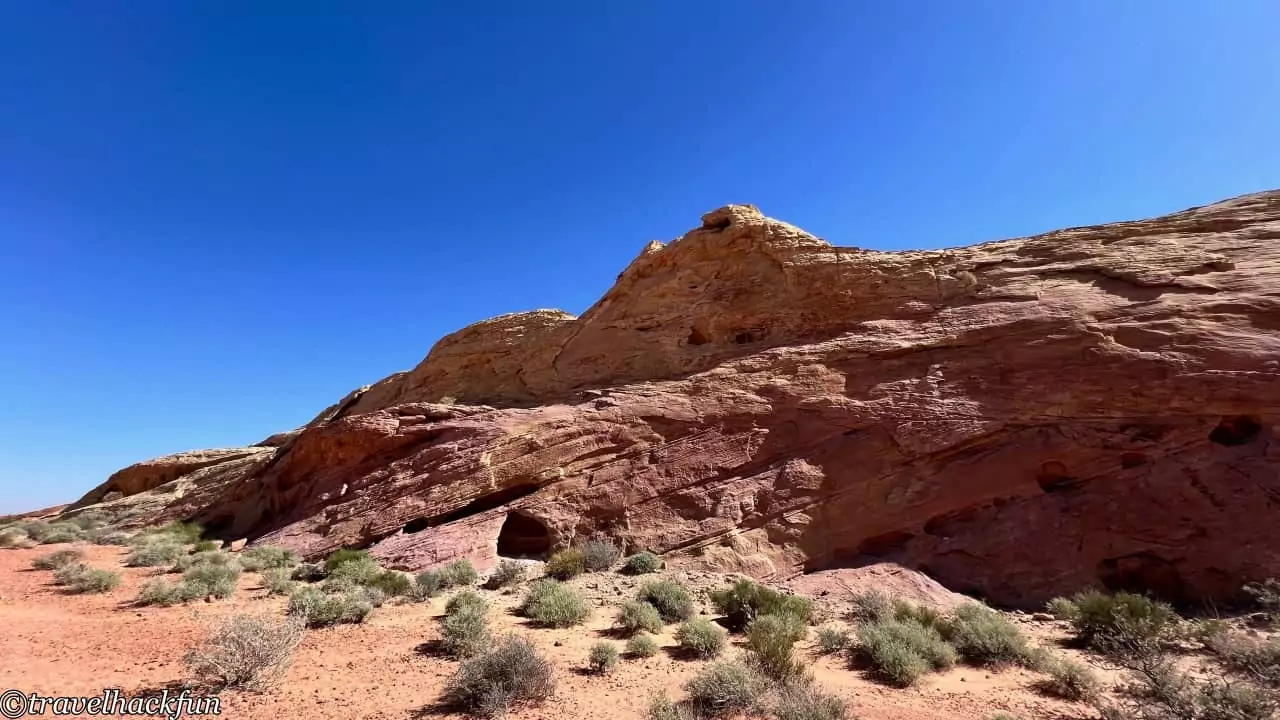
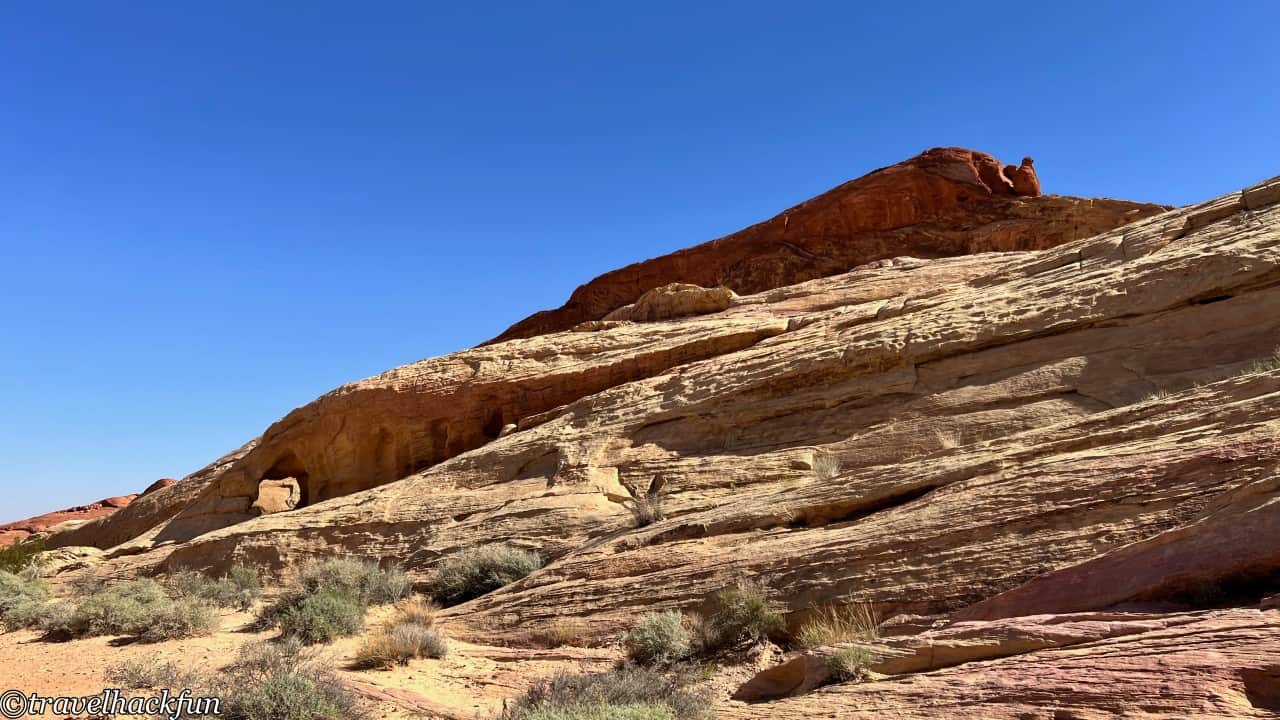
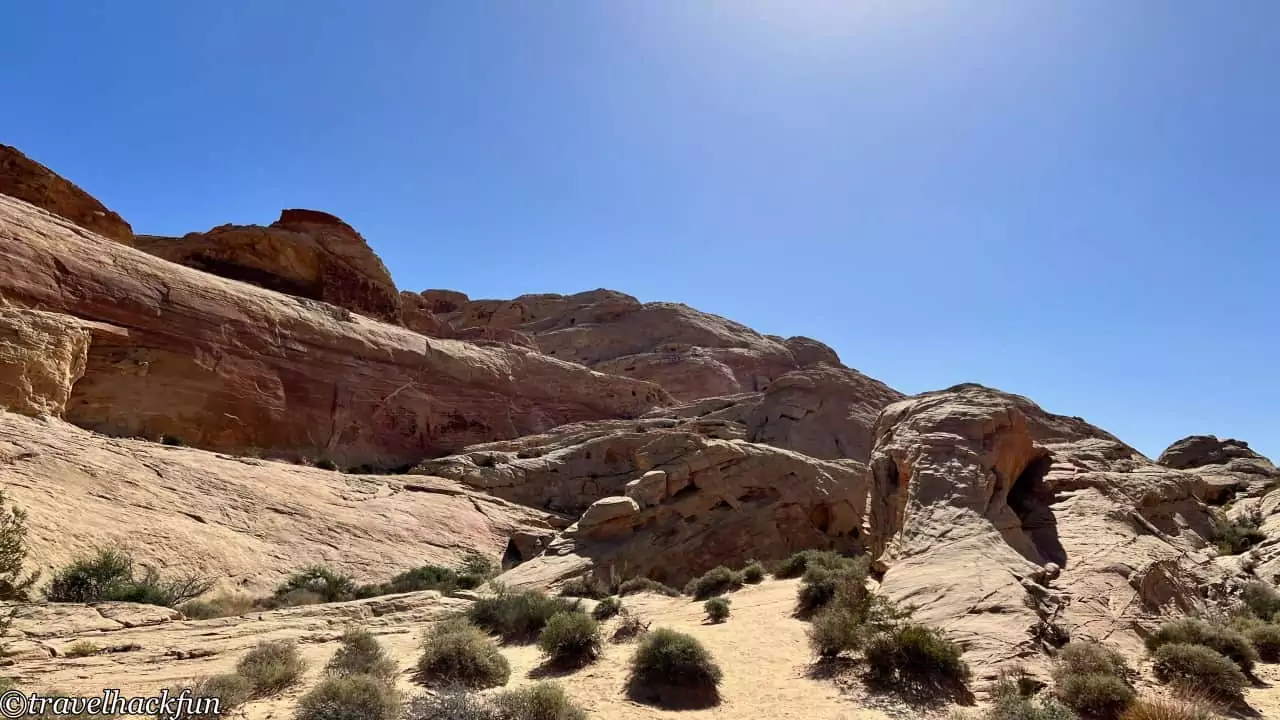
Must See | Rainbow Vista Trail
The Rainbow Vista Trail is a 1 mile round trip trail lined with colorful rocks. But the main reason it's a must-see for many is because right outside the trailhead is the best place to take pictures of Mouse's Tank Road.

The trail itself, upon entering, quickly becomes rugged, gradually leading into Fire Canyon, where the colors of the rocks become even more vibrant. As you reach the end, you'll come across a small arch-shaped rock, which makes for a nice photo spot.
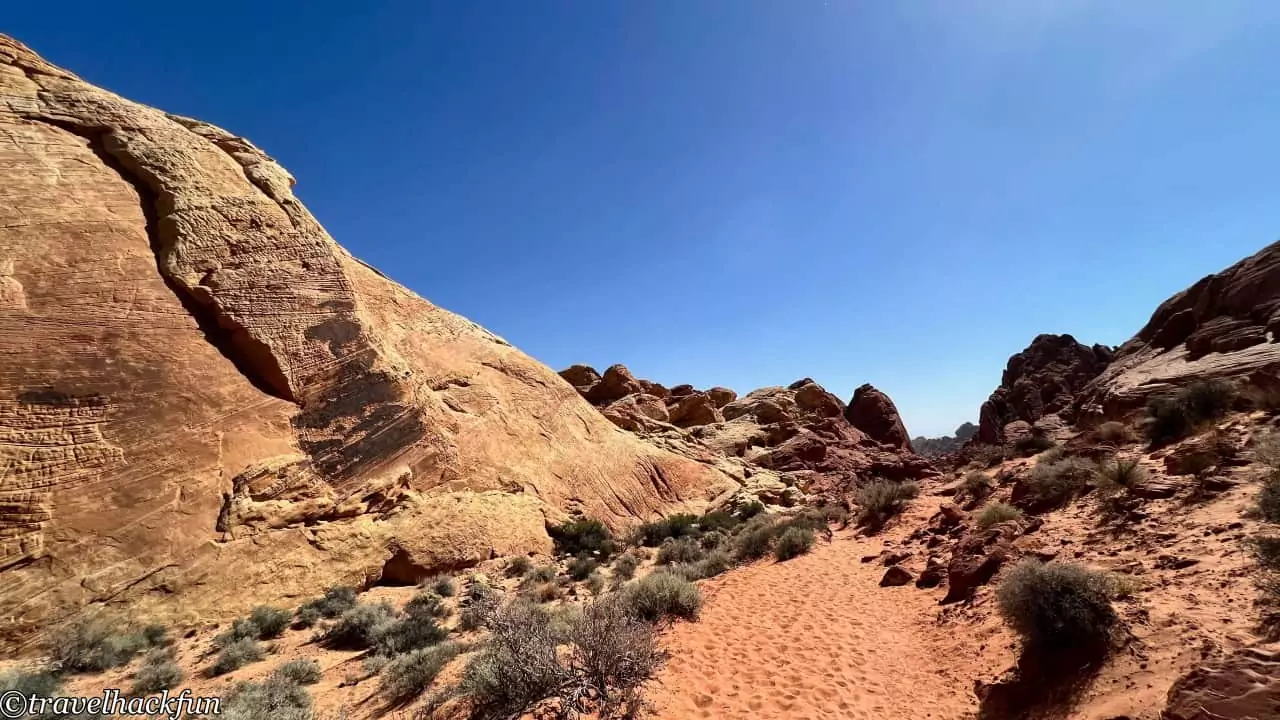
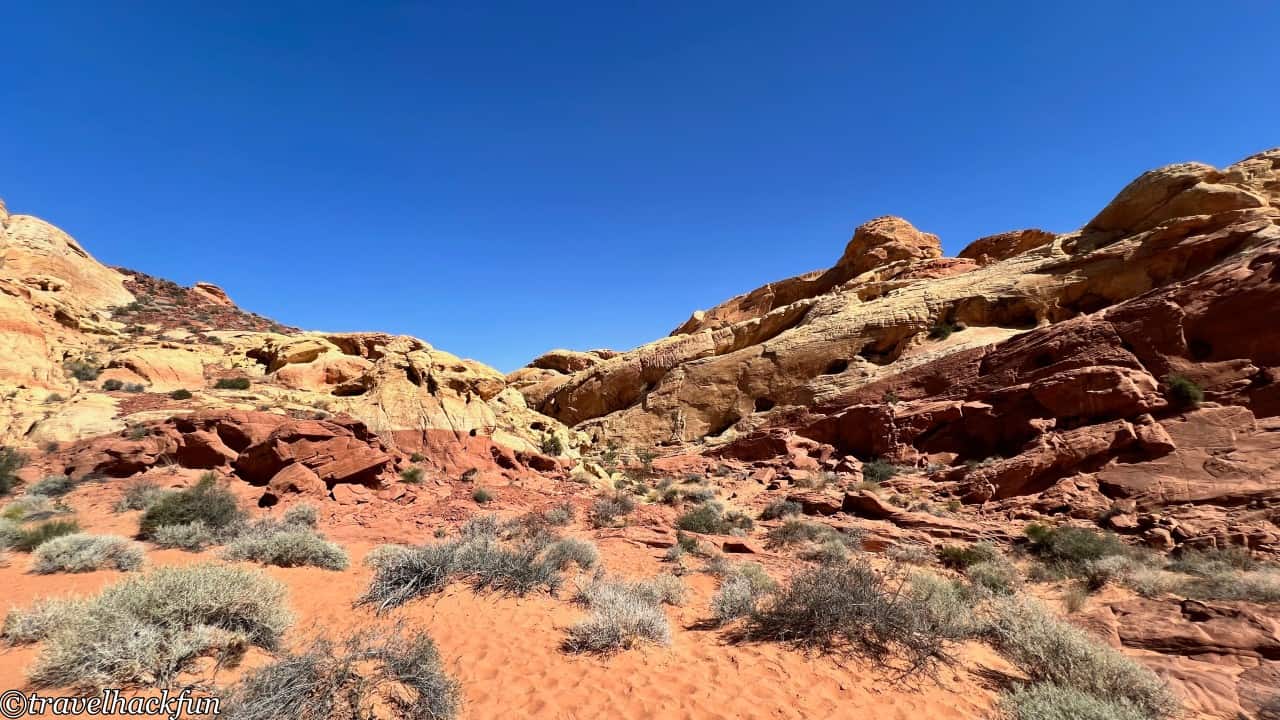
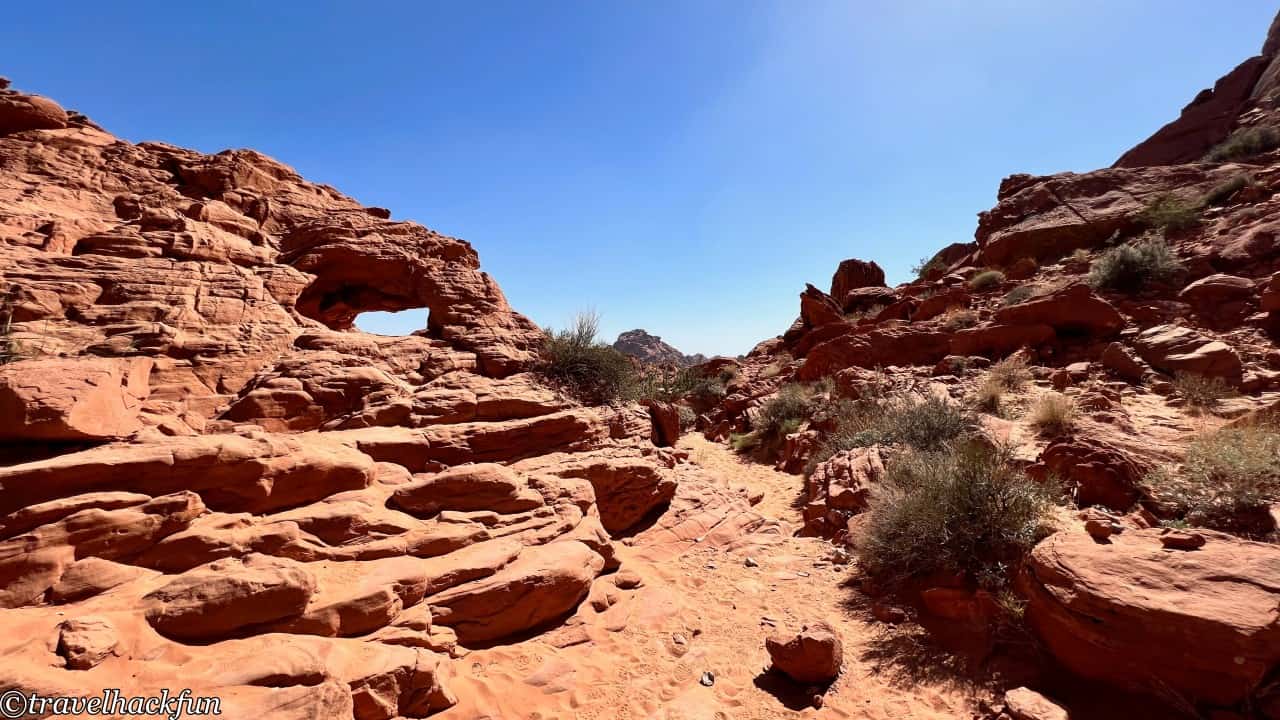
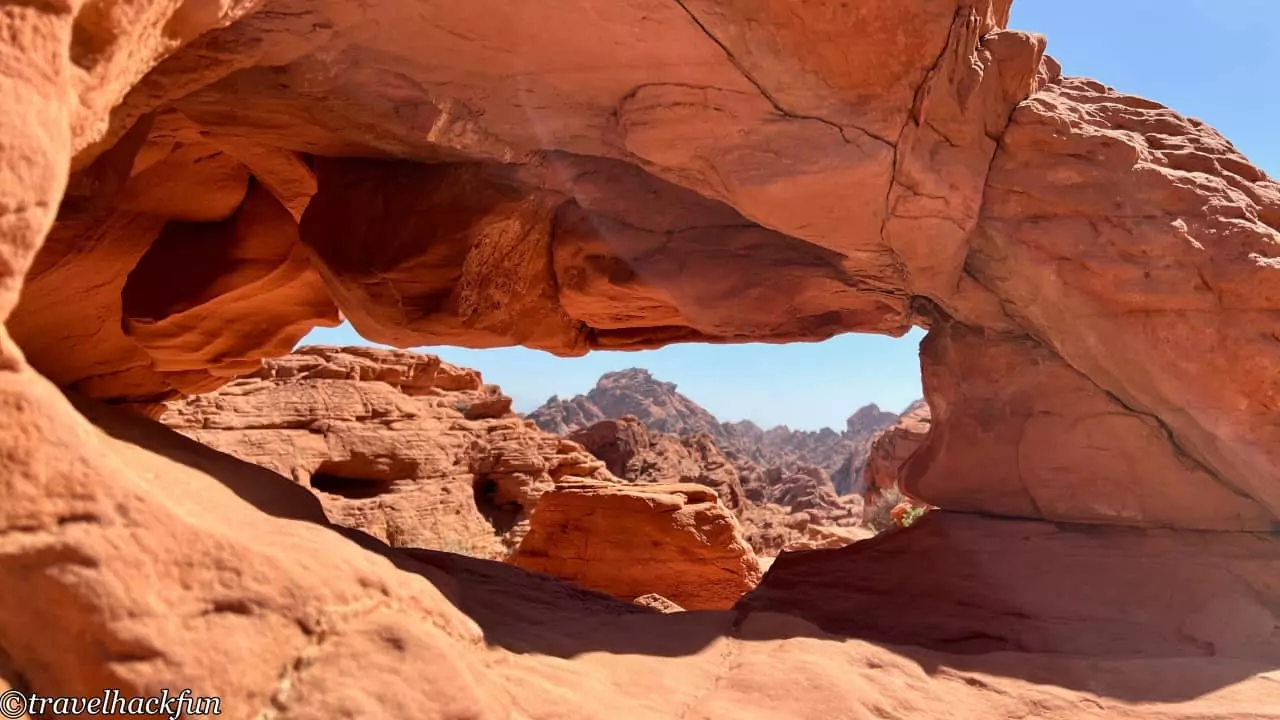
After passing through the arch, the trail's endpoint is the Fire Canyon Overlook. From here, you can enjoy a panoramic view of the entire Fire Canyon landscape.
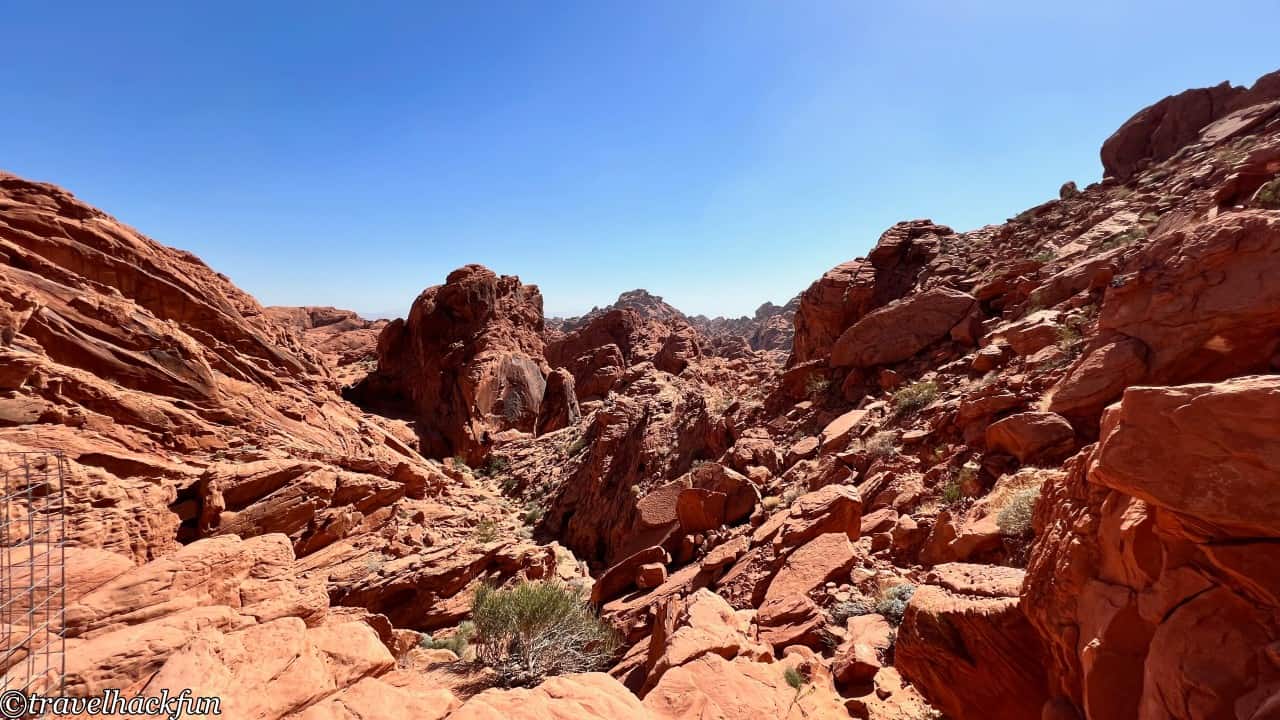
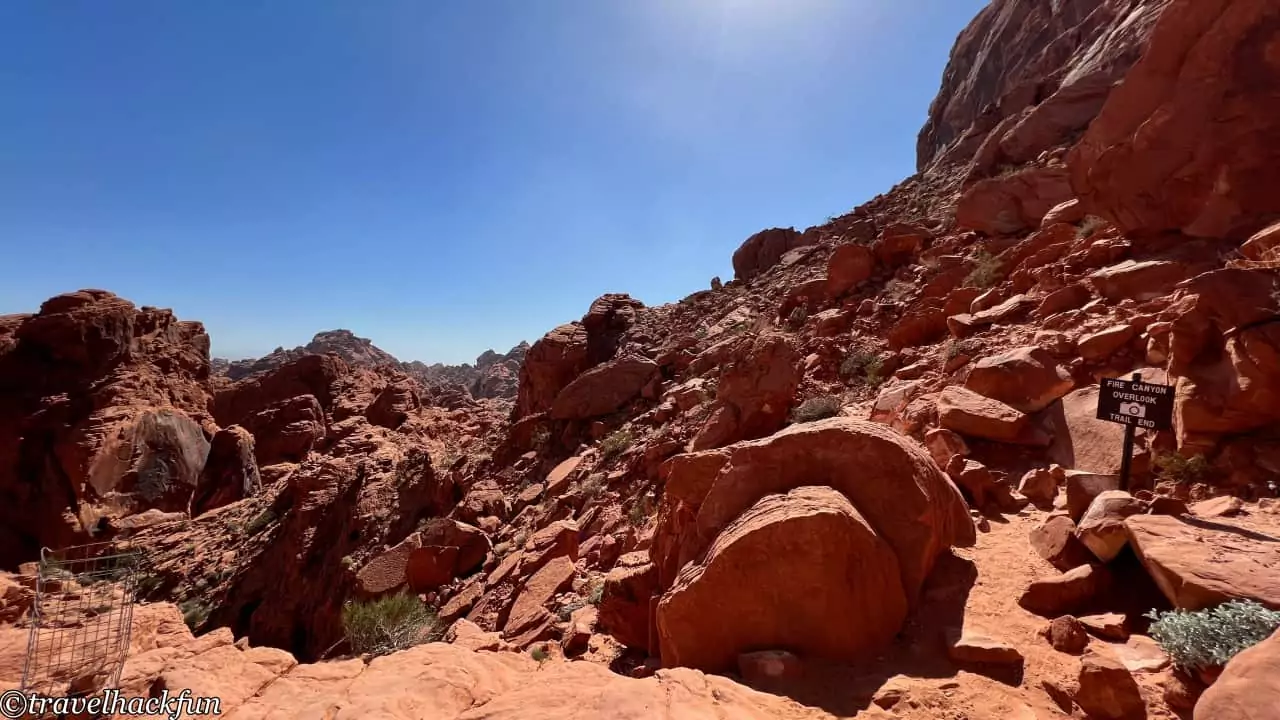
History Trail | Mouse's Tank Trail
The Mouse's Tank Trail is a 0.6 mile long historical trail. Why is it called Mouse's Tank? In fact, Mouse's Tank is a natural water tank at the end of the trail. In the 1890s, an Indian named Little Mouse, who was accused of killing two people, hid here and used this tank as a water source, so it was called Mouse's Tank. Mouse's Tank.
But just like the Mouse's Tank Trail, which despite its name is similar to the Mouse's Tank Road is not the most well known trail on the road, the Mouse's Tank Trail is not about the tank, but rather about the two sides of the trail. The biggest selling point of the trail is the many prehistoric murals on the sandstone walls, which are still very visible even though they have been exposed to the elements for a long time.
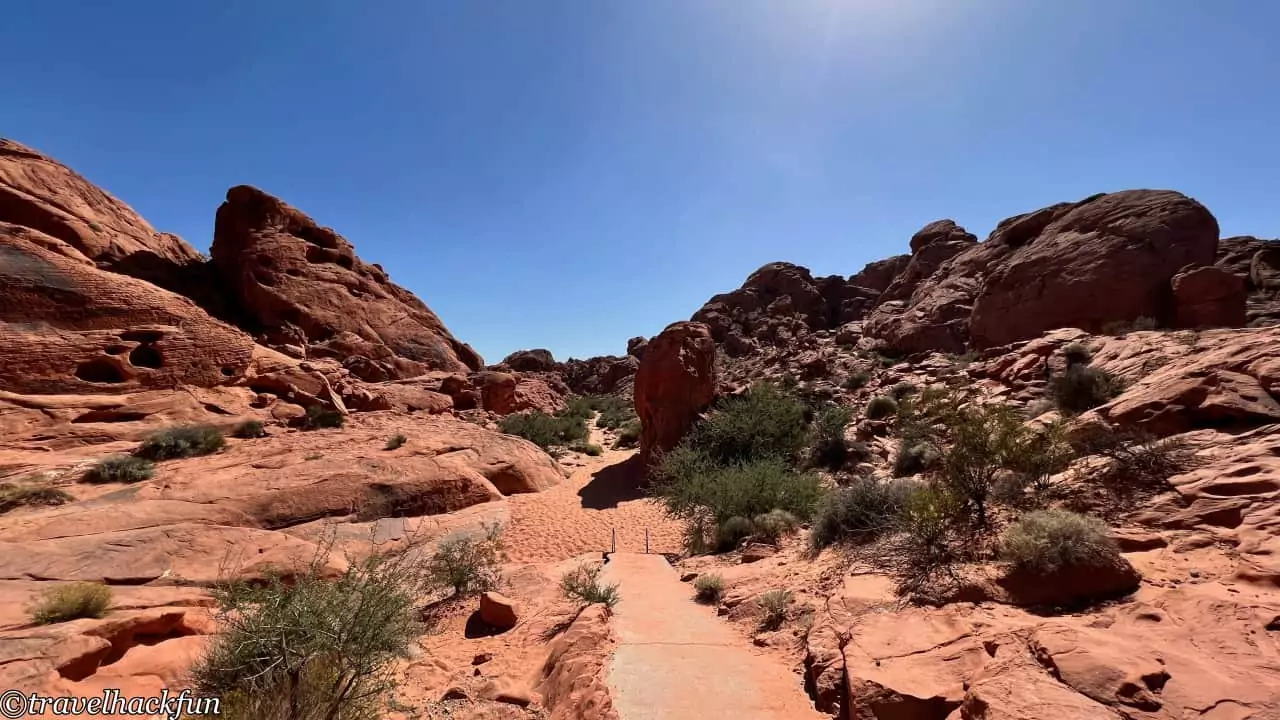

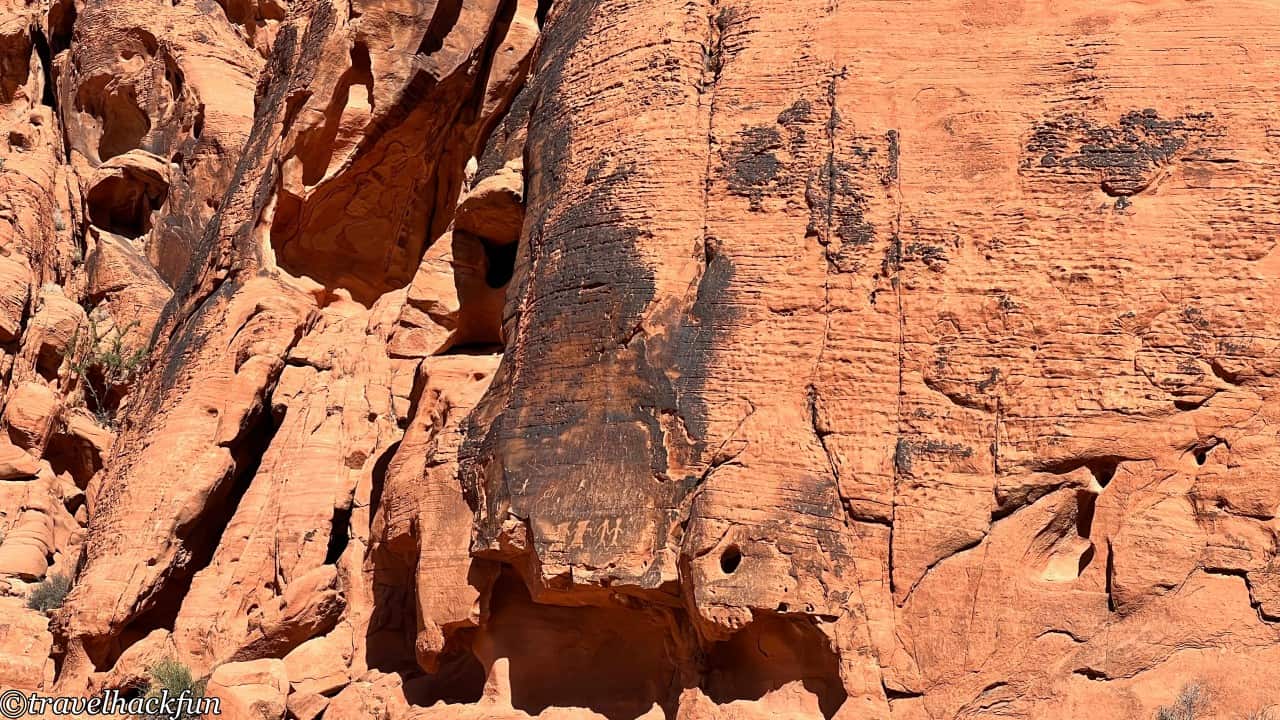
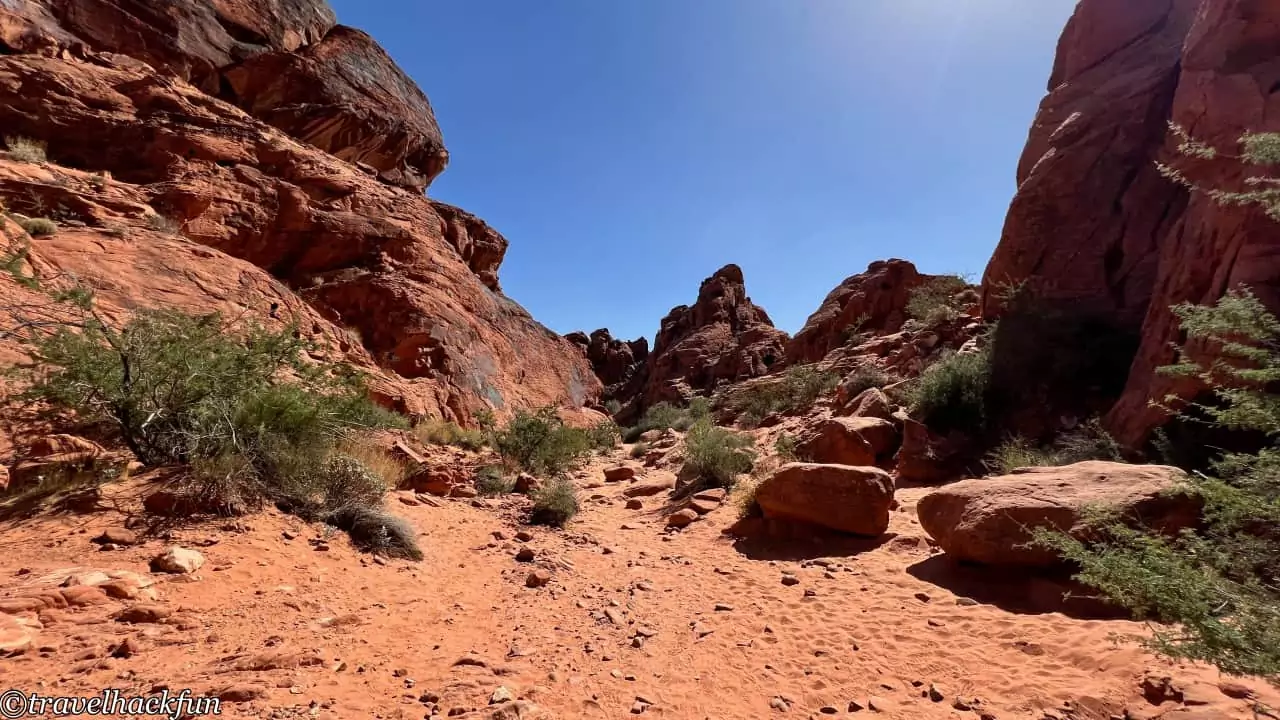
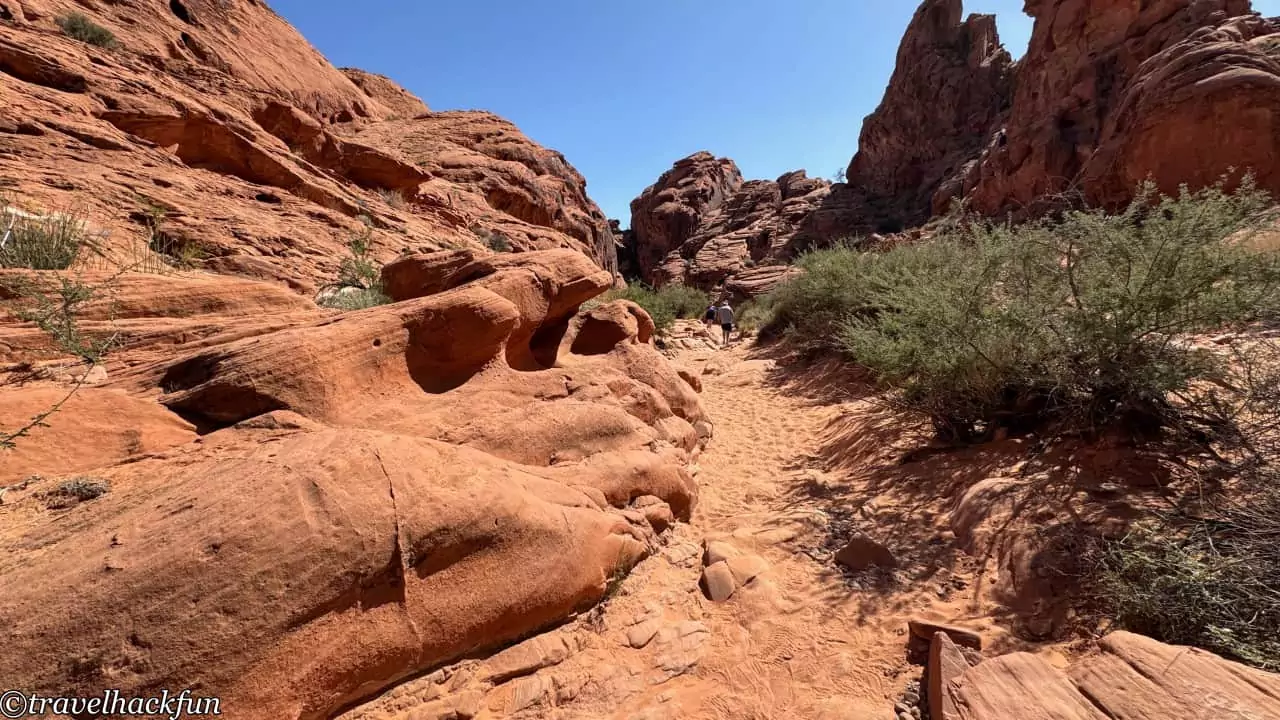
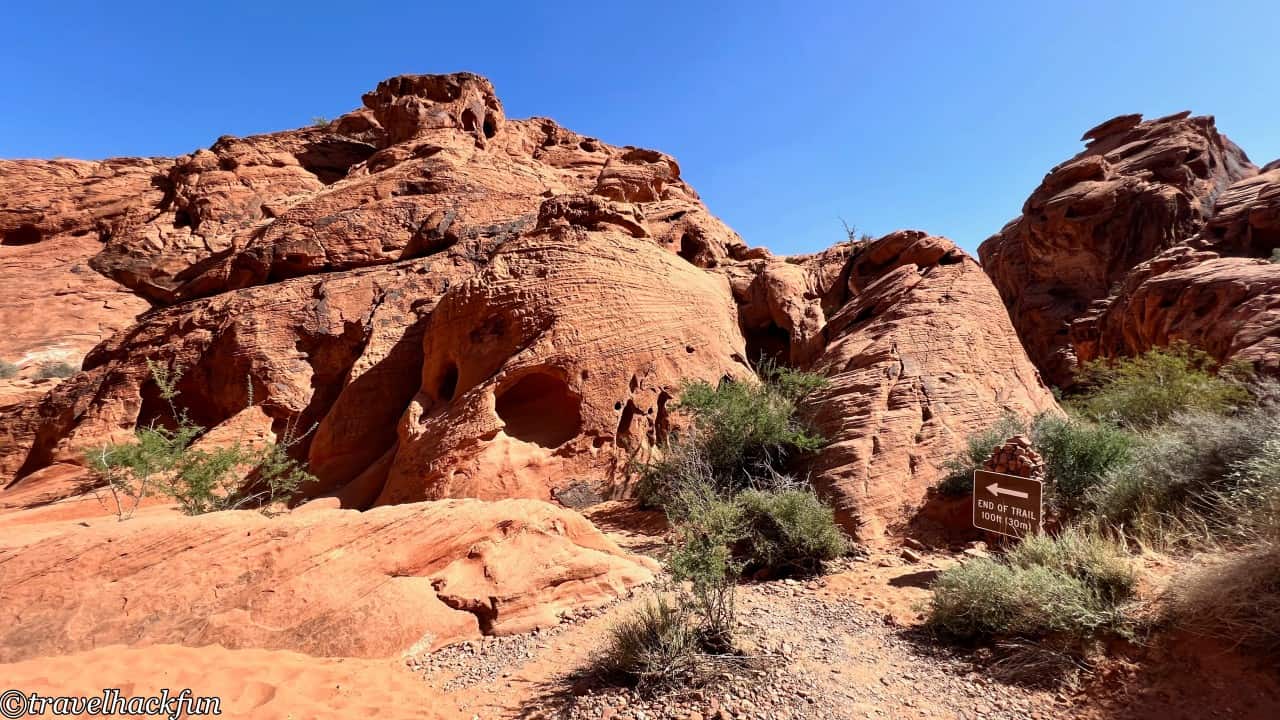
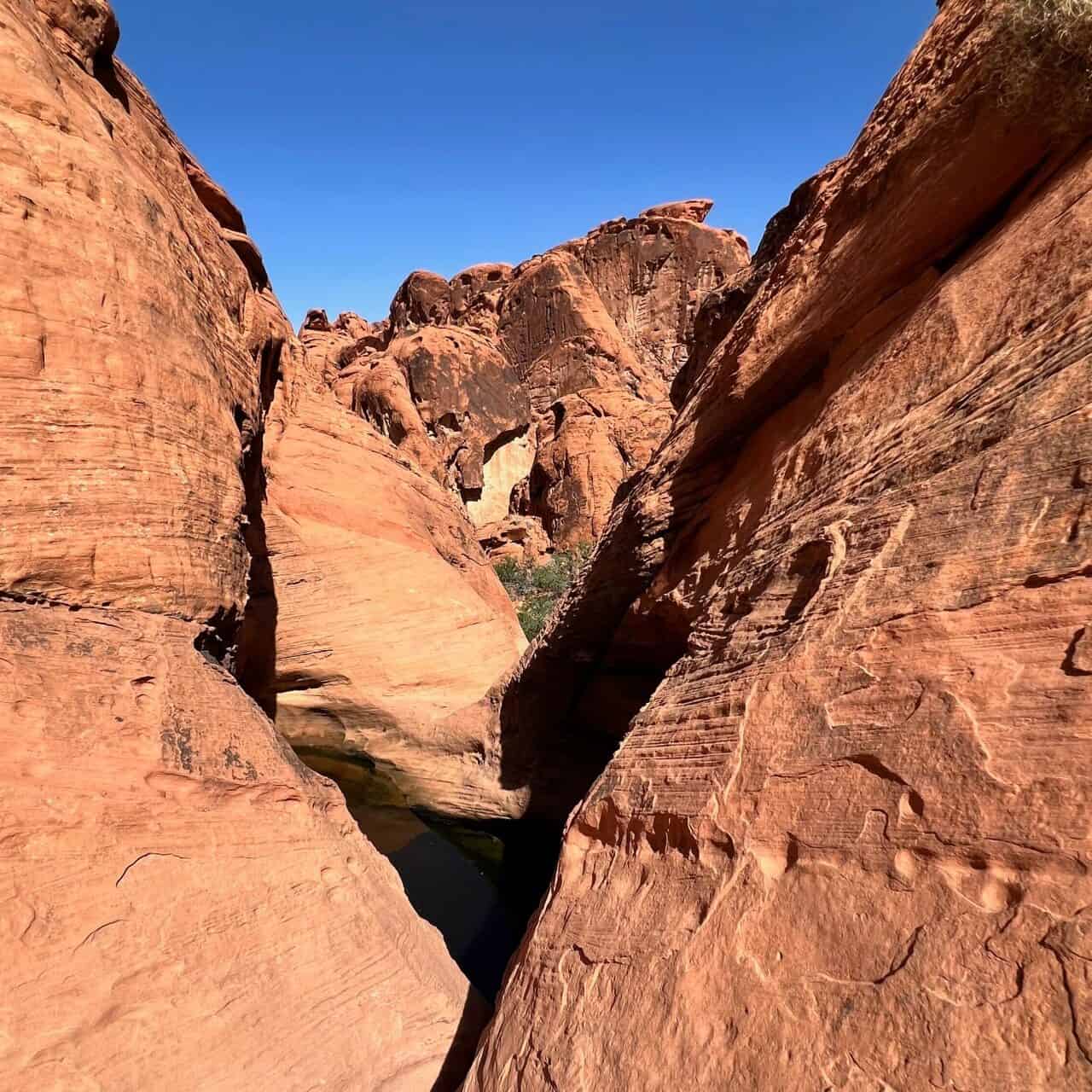
Valley of Fire State Park | Attractions
Must See | Fire Canyon Viewpoint
From Mouse's Tank Road to the north, there is a spur road to the east called Fire Canyon Road, which is a short scenic road, basically parallel to the Rainbow Vista Trail, and ends at the Fire Canyon Viewpoint. If you don't have the time to take the Rainbow Vista Trail, you can see the whole of Fire Canyon from the heights on this road.
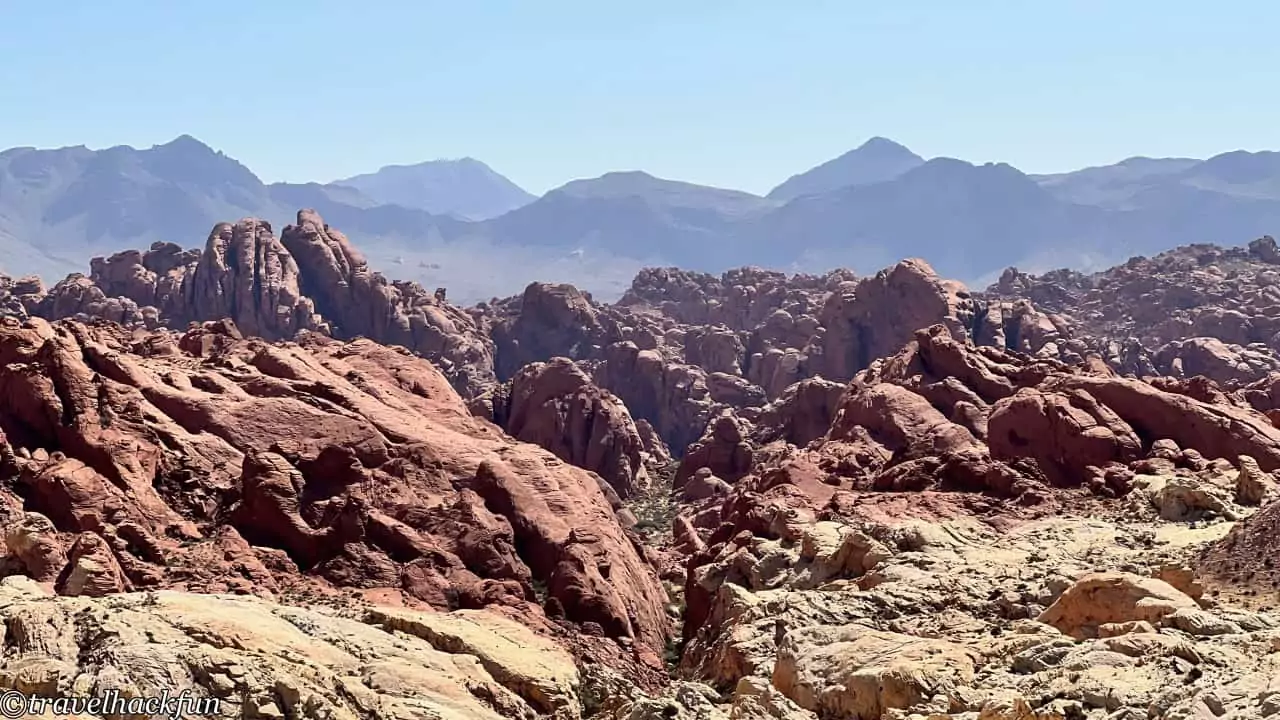
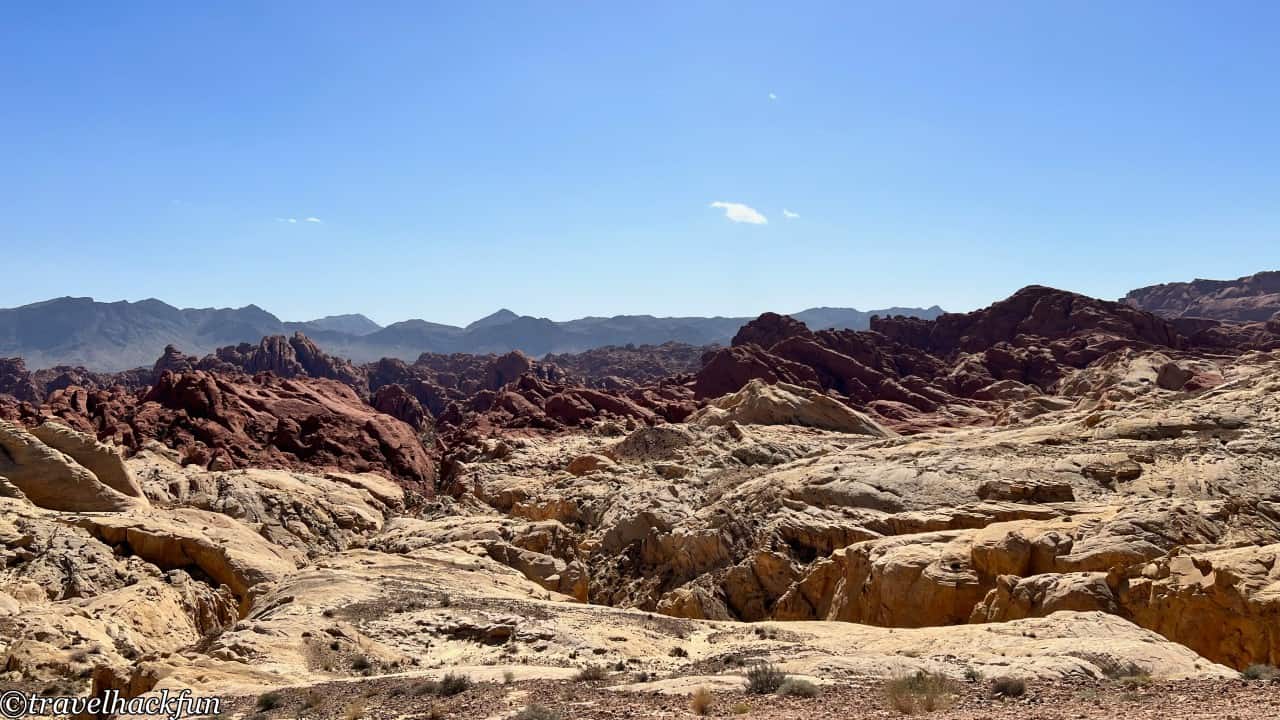
Must See | Beehives
Beehives is located near the western entrance of the park, and it's easily visible from the road, serving as one of the landmarks of Valley of Fire. Its appearance resembles a giant beehive, and this structure showcases the unique geological phenomenon known as "geologic cross-bedding." It results from the accumulation of sedimentary layers from different time periods, shaped by the movement of water or wind during their formation.


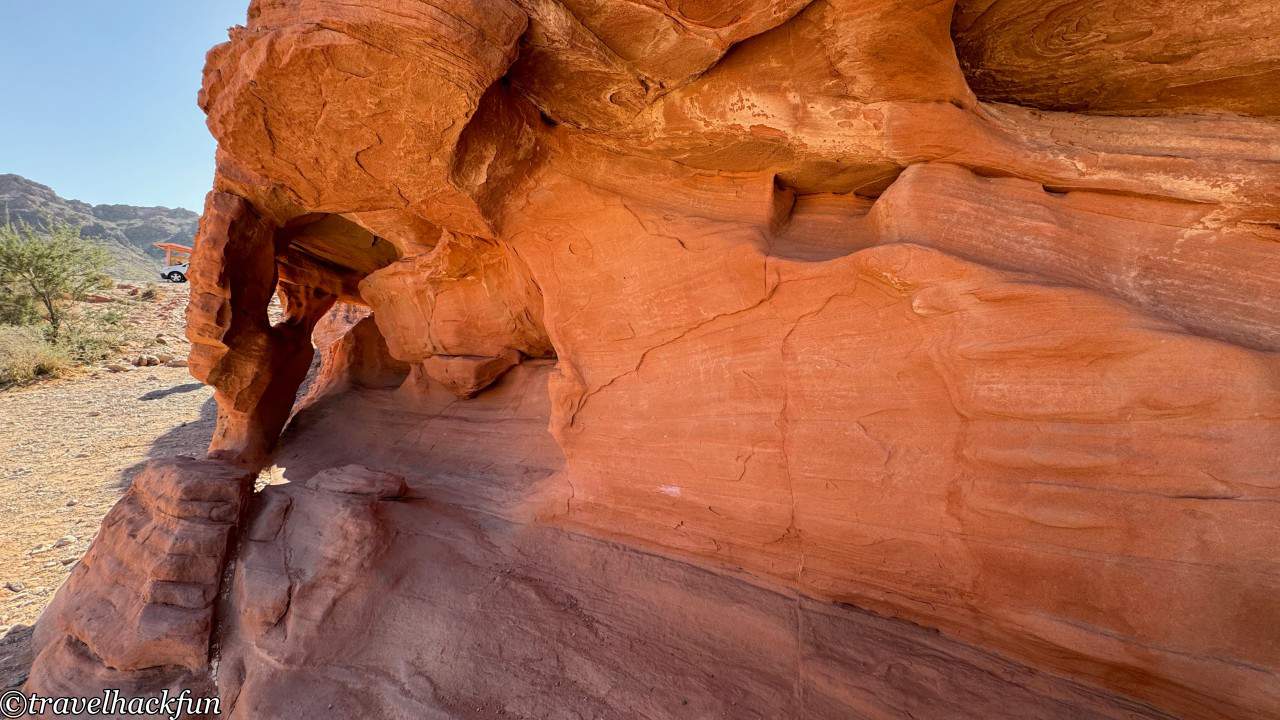
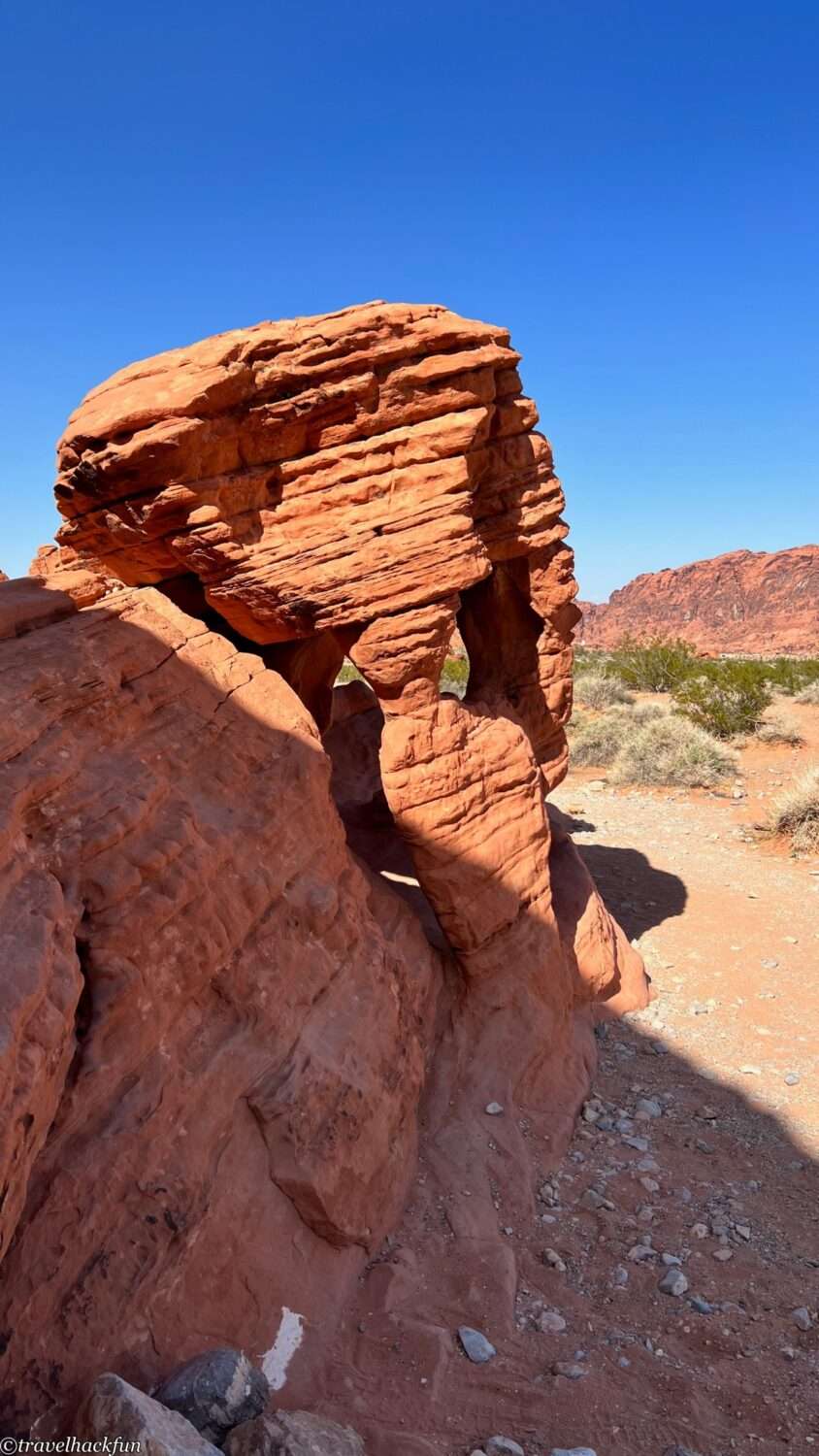
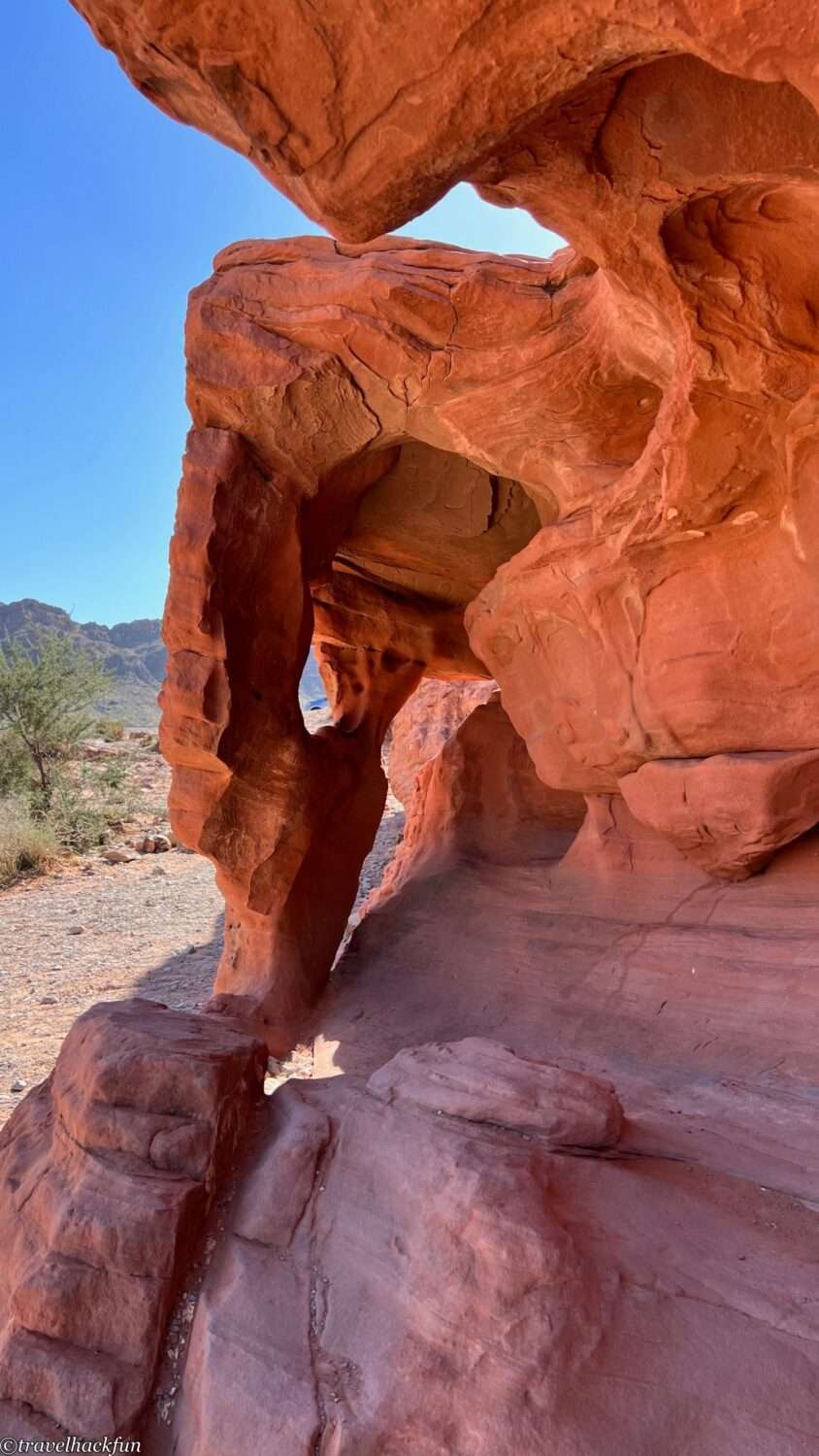
Attractions | Atlatl Rock
Atlatl Rock is a massive rock formation with a wealth of ancient petroglyphs on its high cliff walls. After parking, you can climb the stairs to get a close look at these petroglyphs. It also serves as the highest vantage point nearby, allowing you to enjoy panoramic views of the surrounding area.
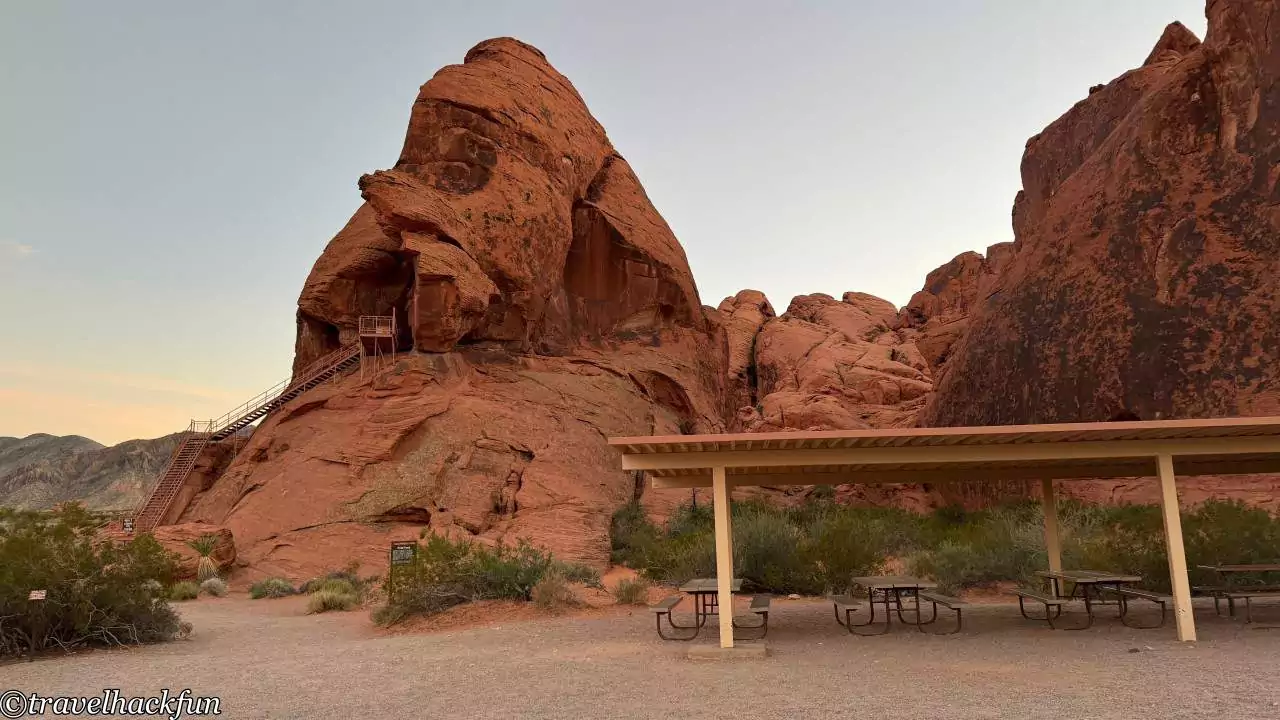
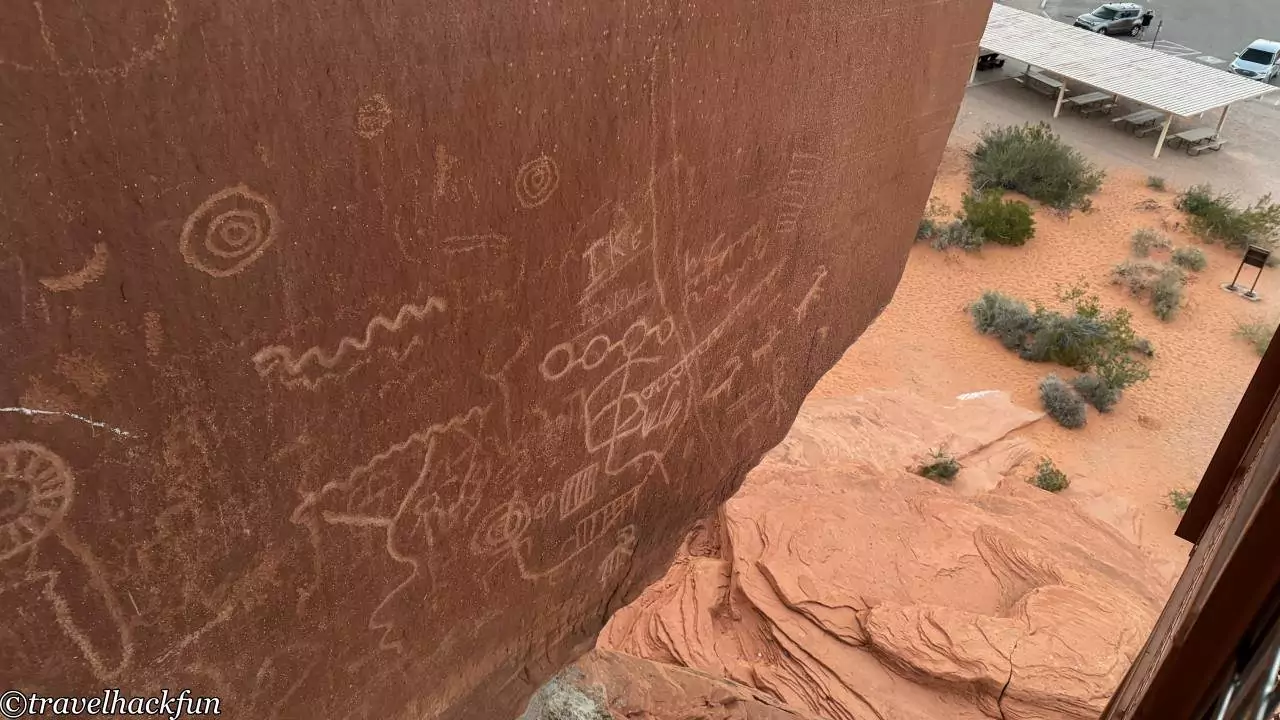
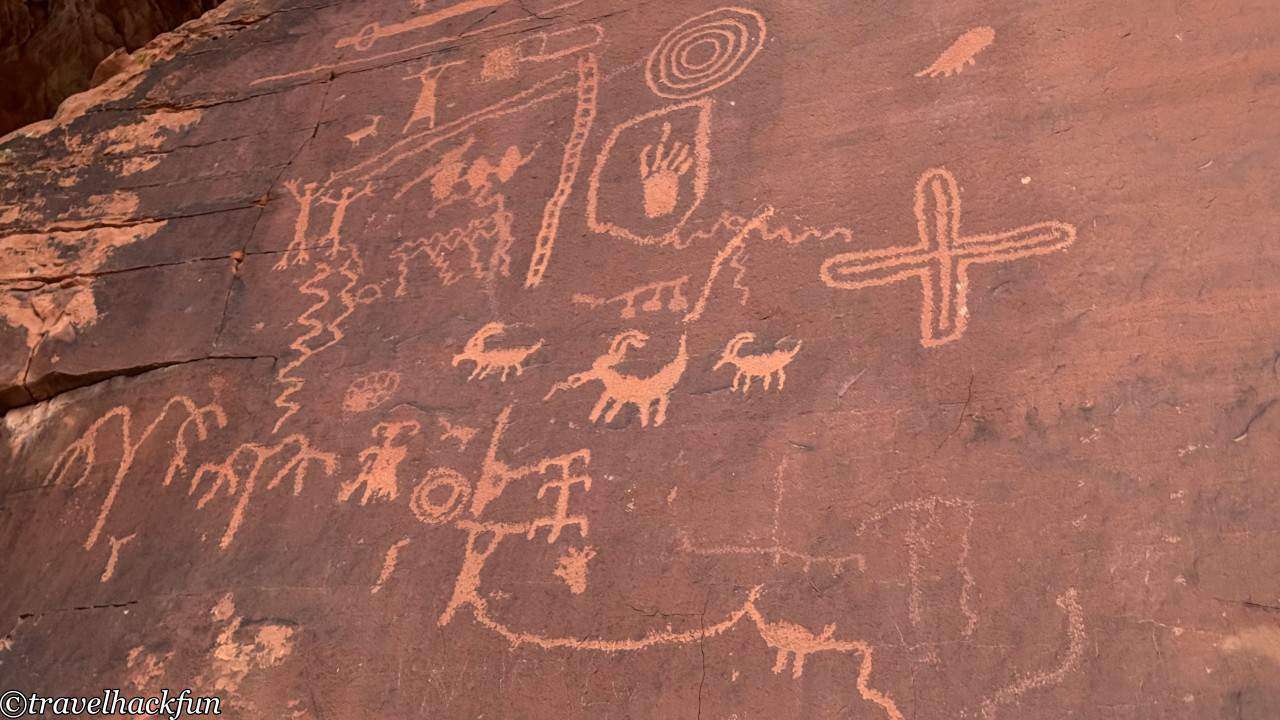

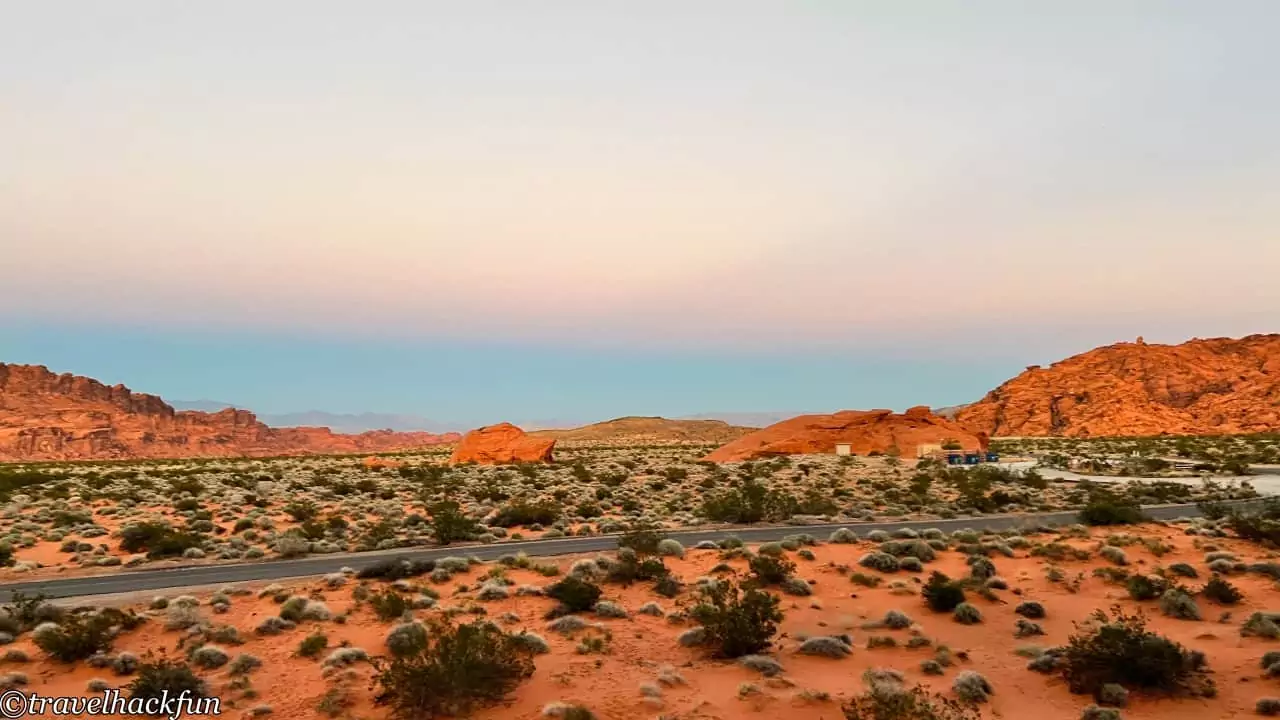
Attractions | Arch Rock
Arch Rock is a natural rock arch that can be seen right from the roadside and is said to be the oldest arch in Valley of Fire. From here, we can see the potential for Valley of Fire's terrain to resemble Arches National Park in a few million years.
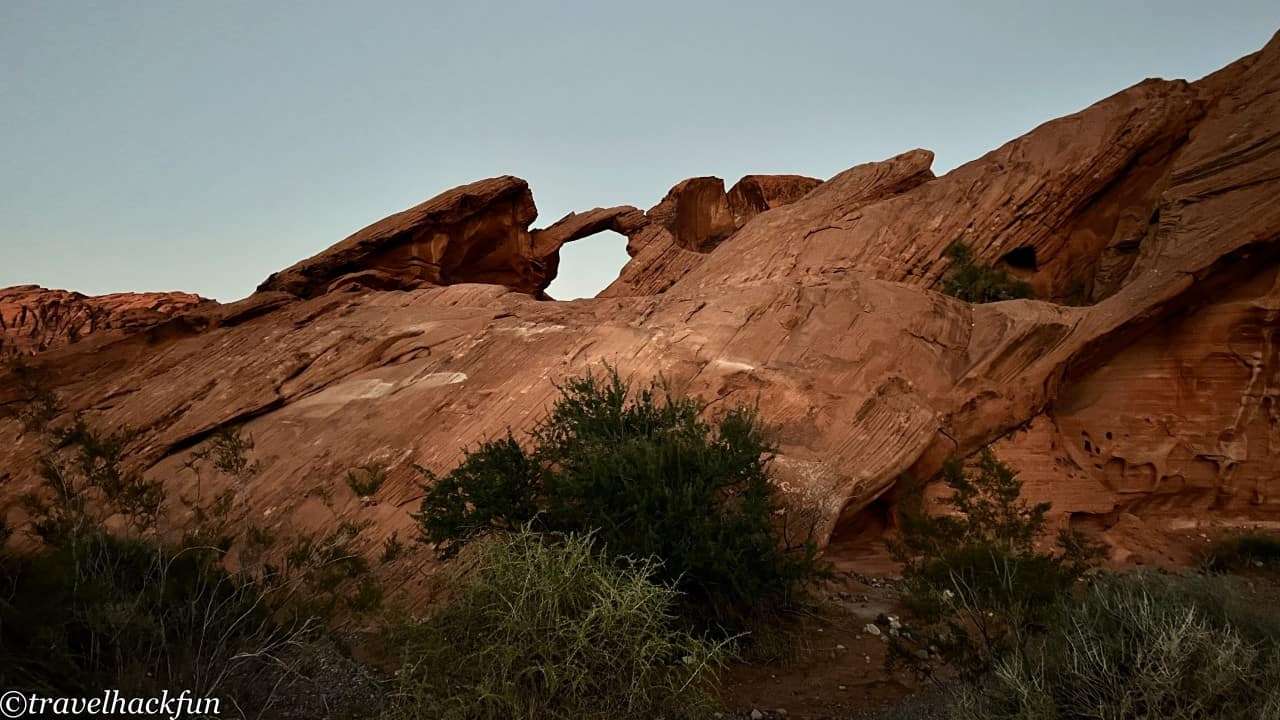
Attractions | Elephant Rock
Elephant Rock is near the east entrance of the park. If you enter the park from the east, this rocky spot that looks like an elephant will be your first stop. There is a 0.3 mile walkway to Elephant Rock, but it is not recommended because you can actually see Elephant Rock from the roadside, and it seems that the park design this walkway is purely because they want people not to park on the roadside. If you are good enough to finish the trail, many people still can't find the Elephant Rock even after walking to the end. In fact, when you see the road, the Elephant Rock is right behind and above you.
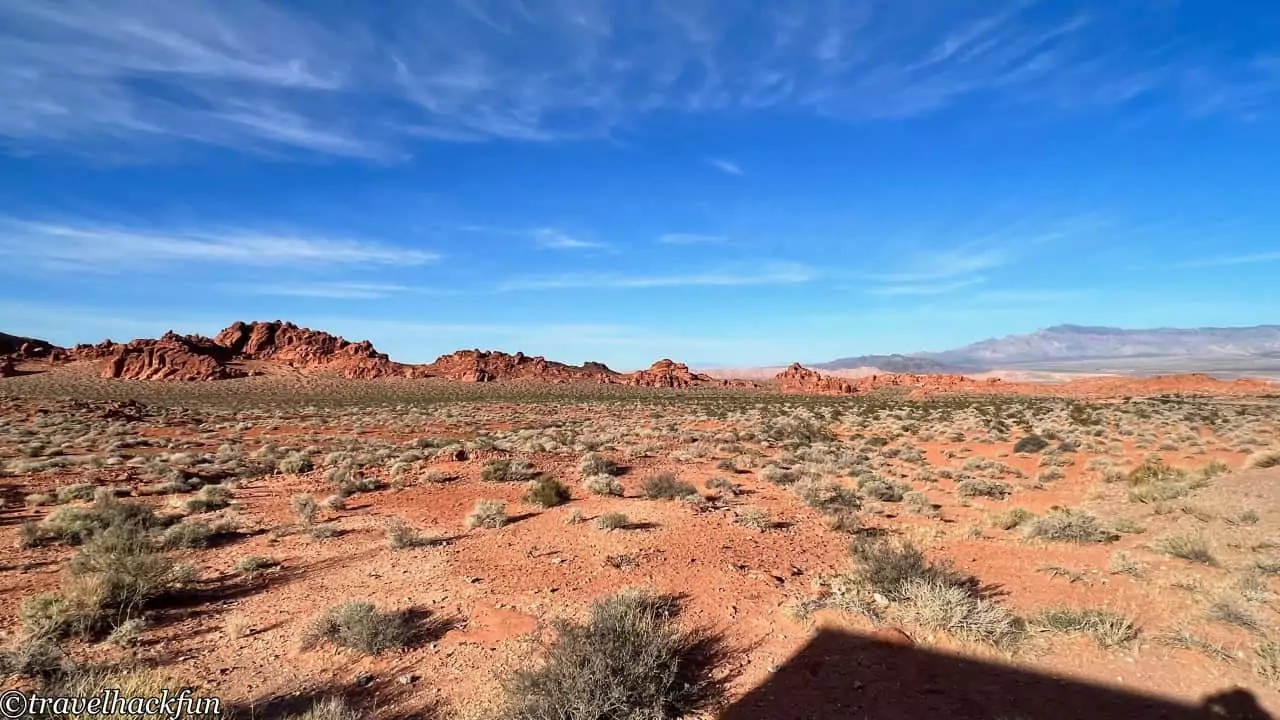

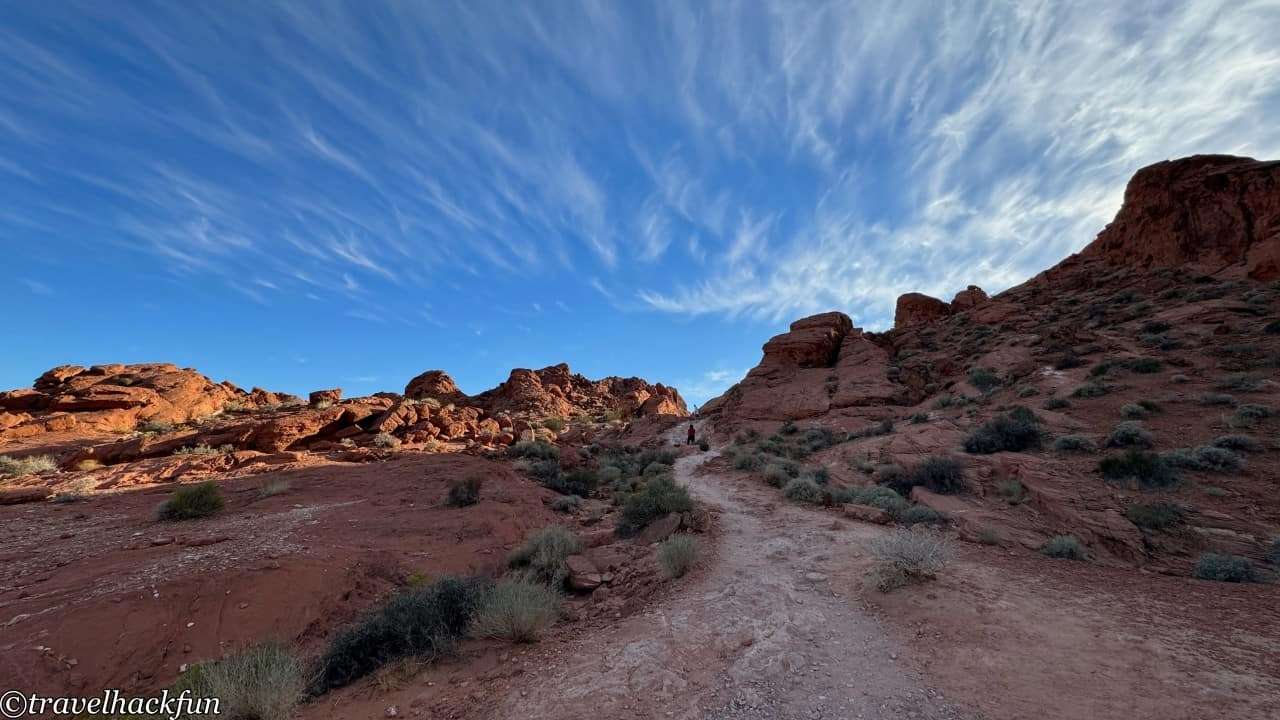
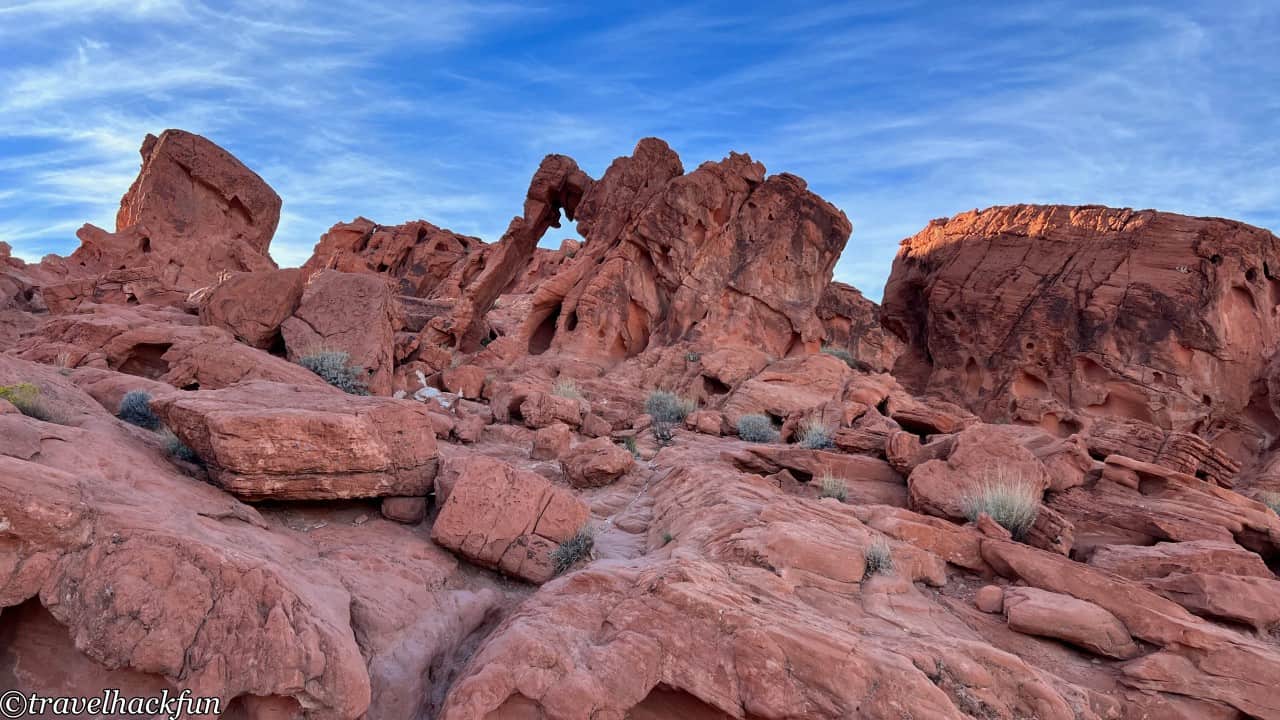
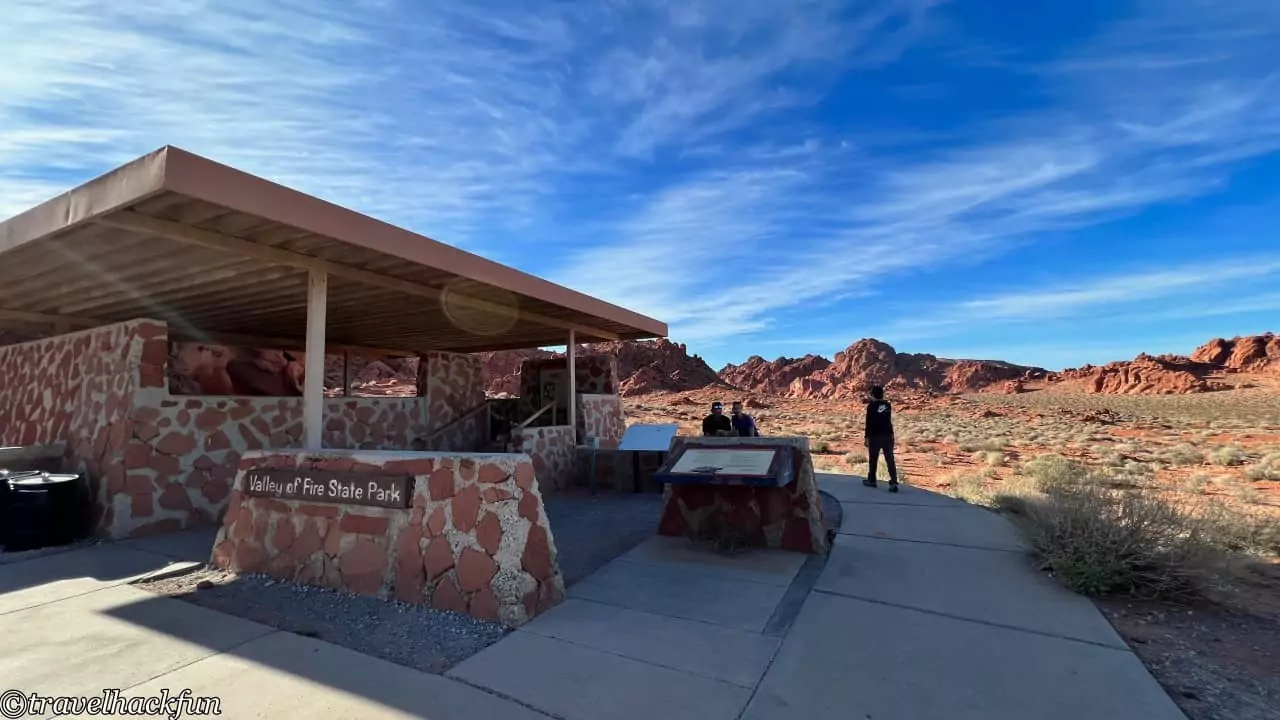
Attractions | Seven Sisters
Seven Sisters are a group of seven tall, red sandstone boulders located within Valley of Fire State Park. These boulders were once part of the spectacular red rock formations in the vicinity, but over time, they are all that remains due to relentless erosion. The numerous "blowholes" on the rocks suggest that these spires will continue to erode and deteriorate over the next few centuries. What's interesting is that this area is also designated as an exclusive wedding venue within Valley of Fire State Park and is a popular choice for wedding receptions. As a result, it's not uncommon to see well-dressed guests here.
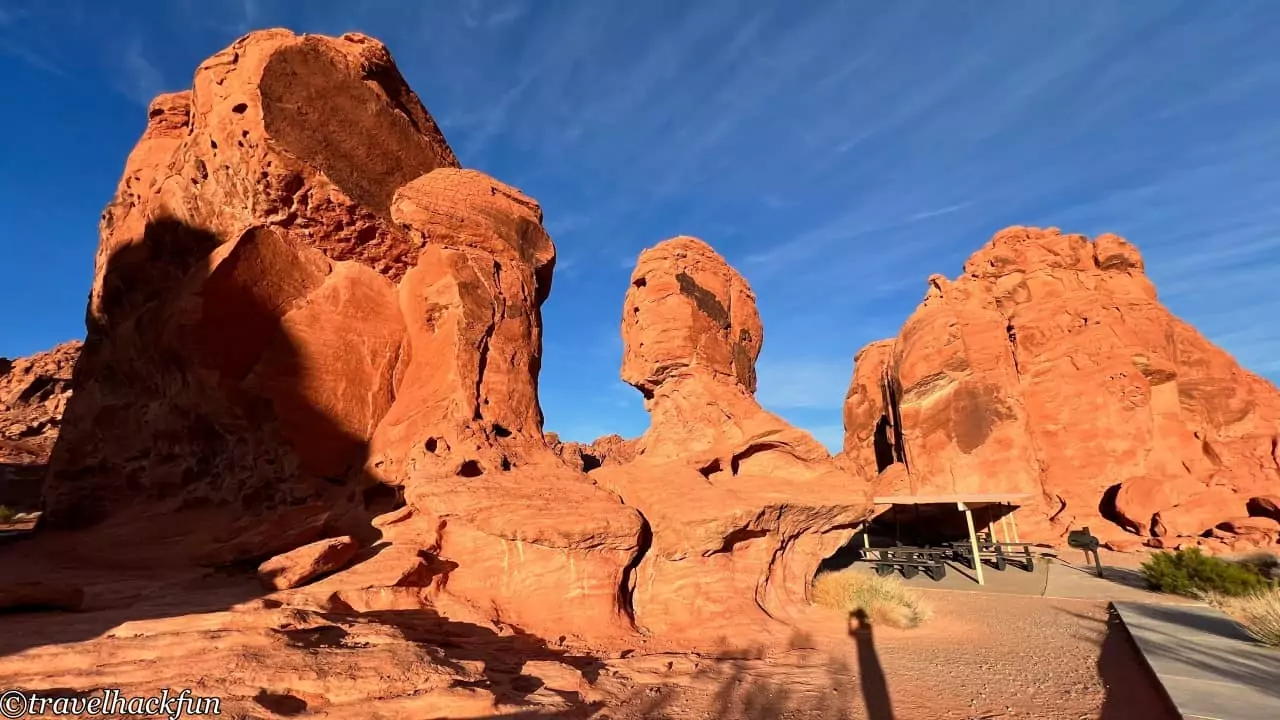
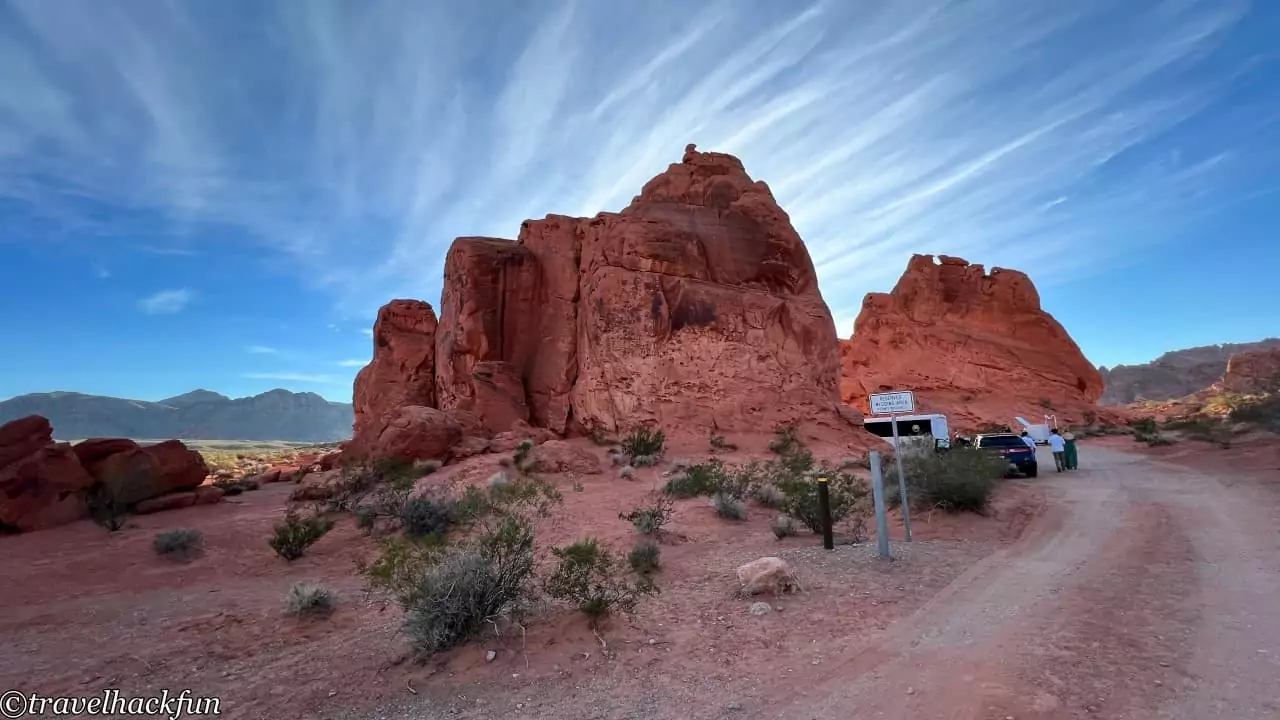
Attractions | The Cabins
If you park at The Cabins picnic area, you'll see several stone buildings that have a charming exterior. These small houses were actually constructed from local sandstone in 1930 by the Civilian Conservation Corps (CCC). The CCC was a significant public works program established by the U.S. federal government between 1933 and 1942. It was created during the Great Depression as a means to combat unemployment and provide employment opportunities for young, unmarried, unemployed men.
If you visit many of the national parks in the United States, you'll likely come across the natural resource conservation and public land development activities carried out by the CCC. These cabins were part of such construction efforts and were originally intended for visitor accommodations. However, they are no longer in use today, serving primarily as historical landmarks.
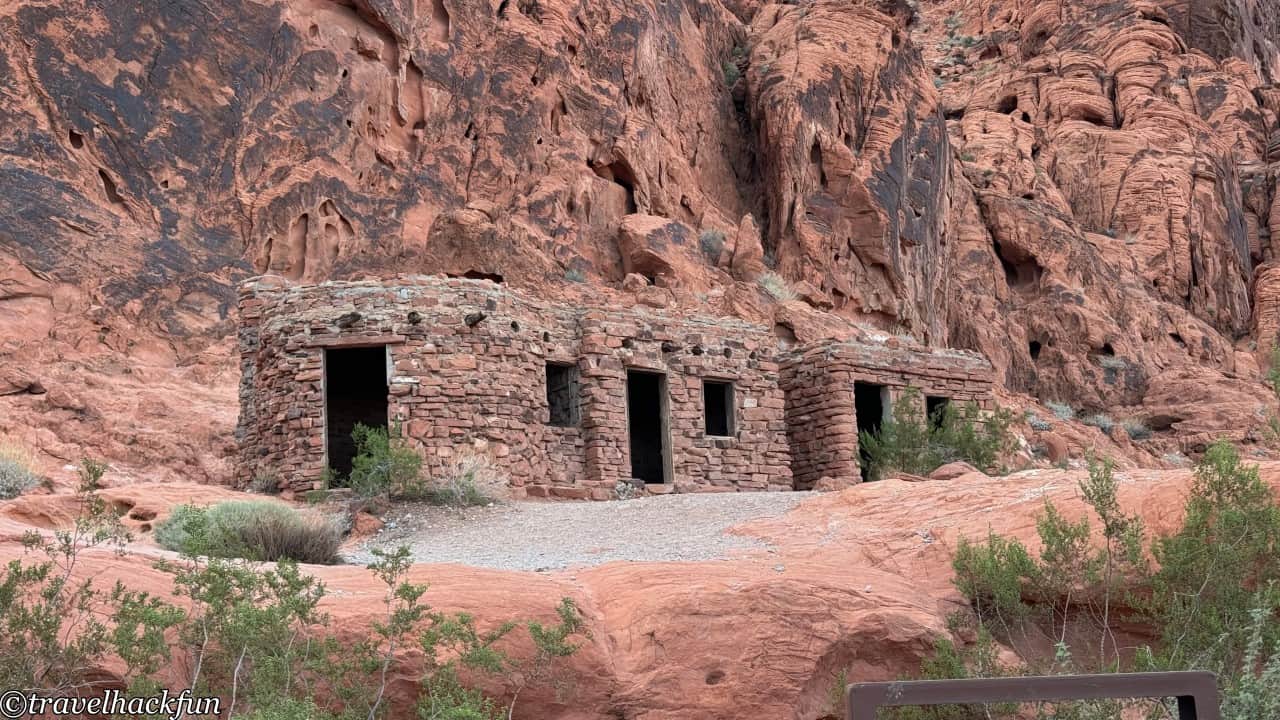
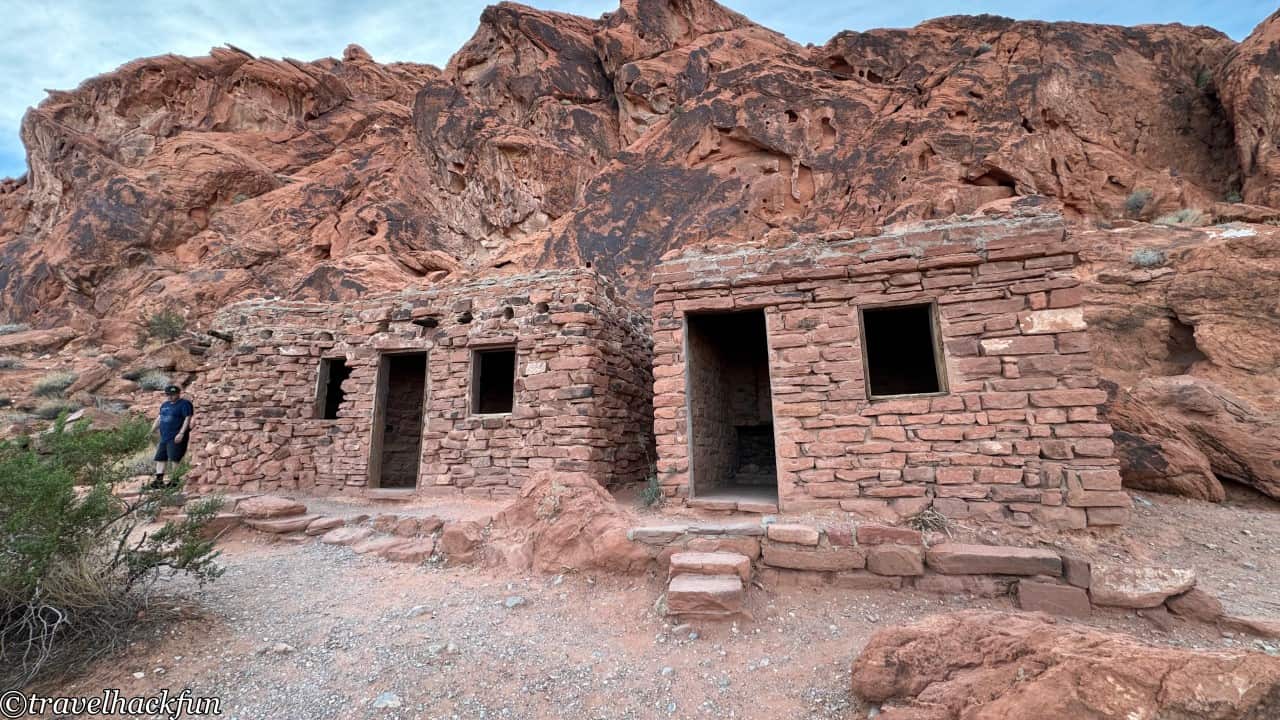
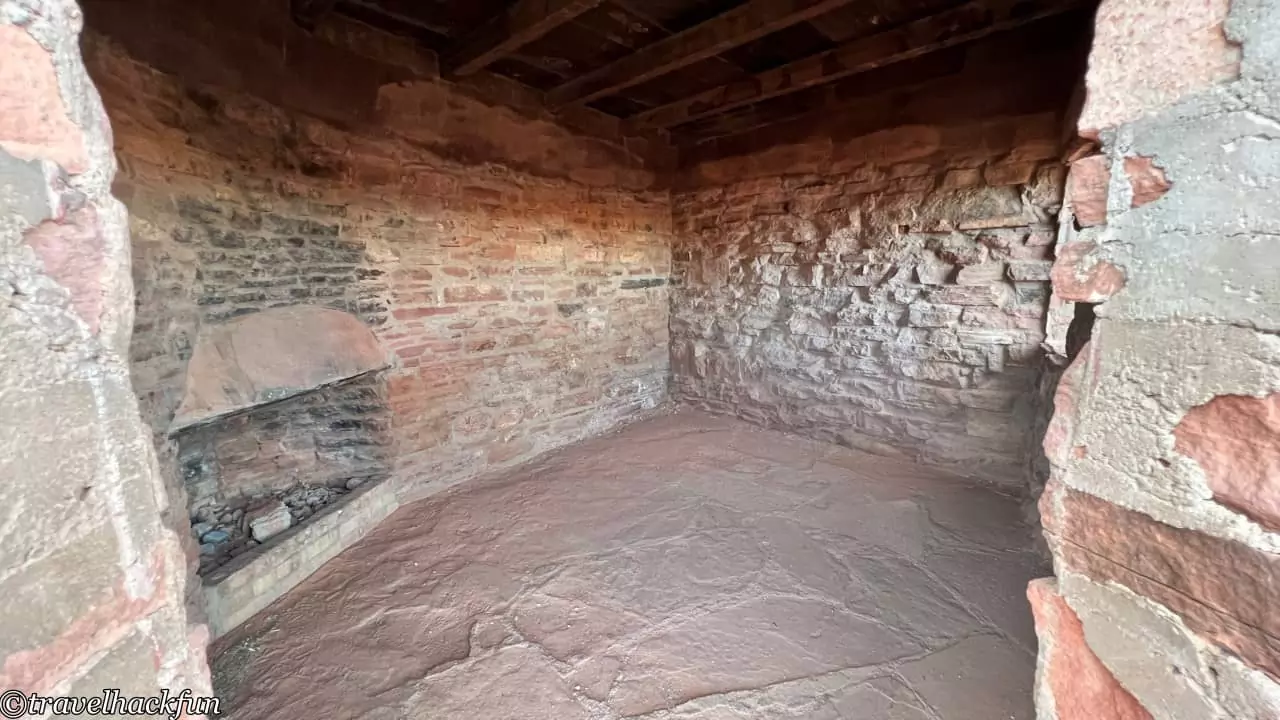
Petrified Logs
Petrified Logs is a geological attraction showcasing petrified wood that was washed into Valley of Fire approximately 25 million years ago. Petrified wood is wood that has become a fossil over an extended period of exposure. During this process, the original organic matter is gradually replaced entirely by minerals due to the effects of sunlight, wind, water, and time. These petrified logs are ancient pine trees and now appear as colorful tree trunks, enclosed by a fence along a short trail for viewing.
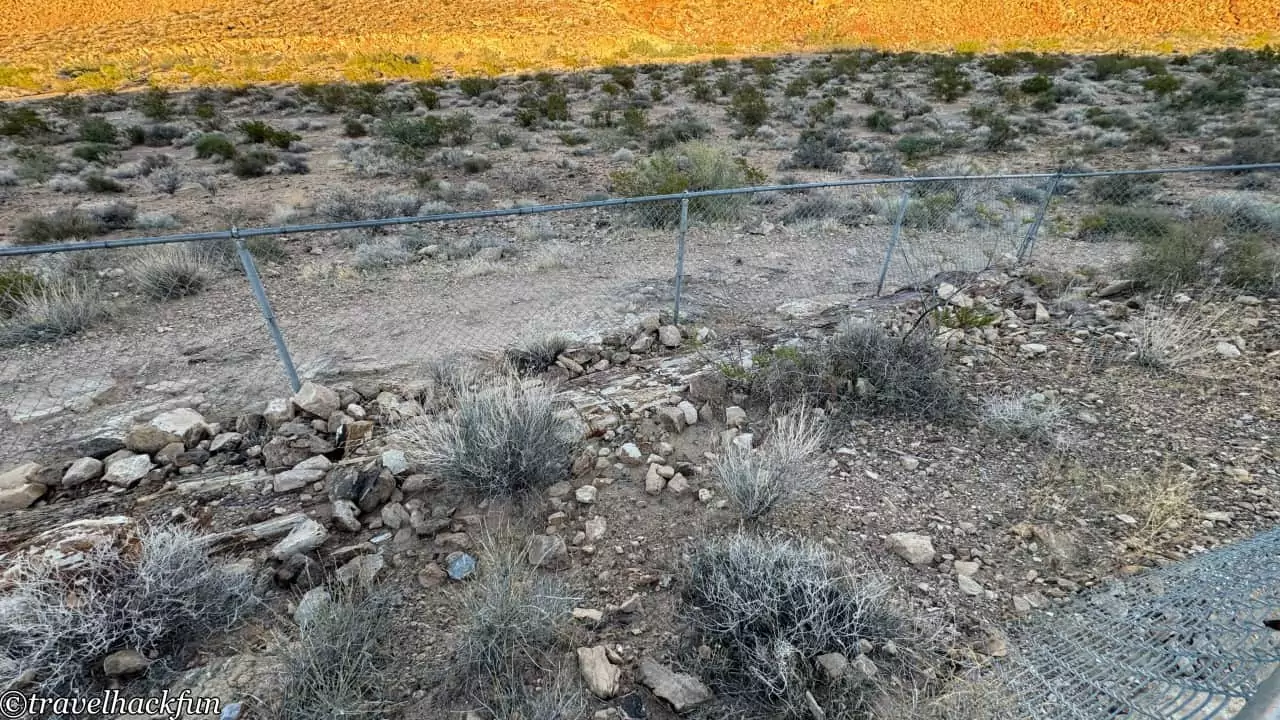

☕ Enjoying my travel notes?
You can Buy me a coffee to support what I do 🙌
Further reading
- Grand Circle
- Las Vegas
- More Nevada posts